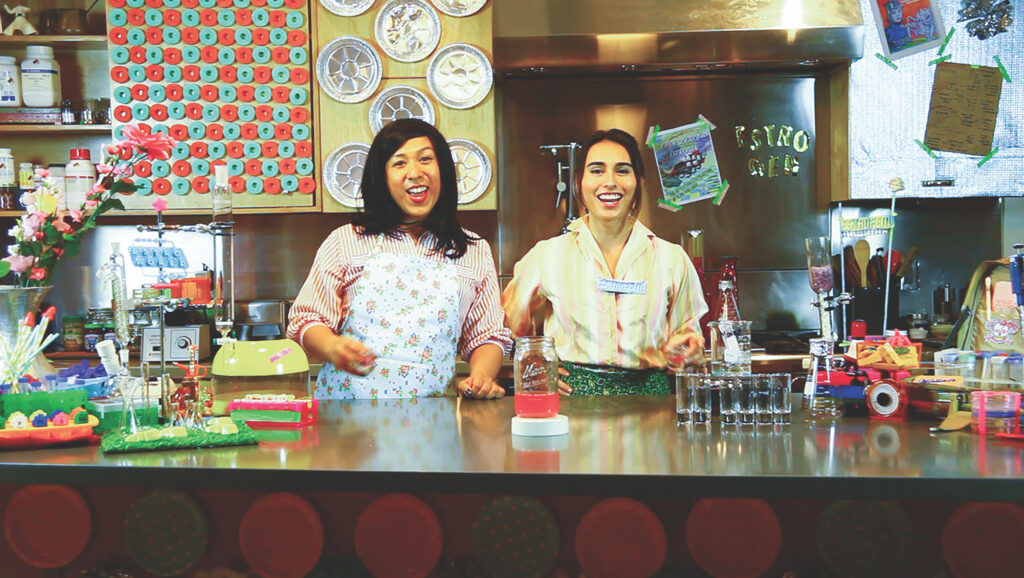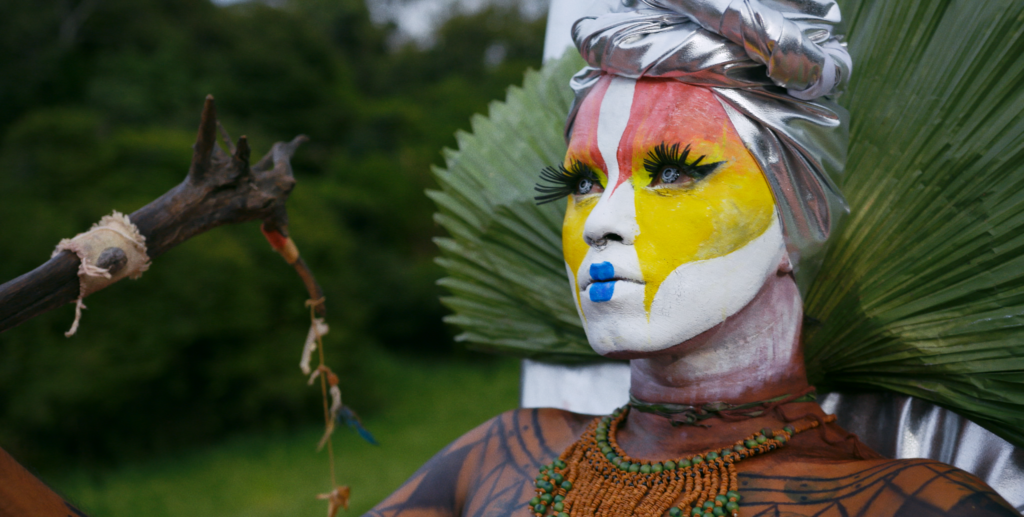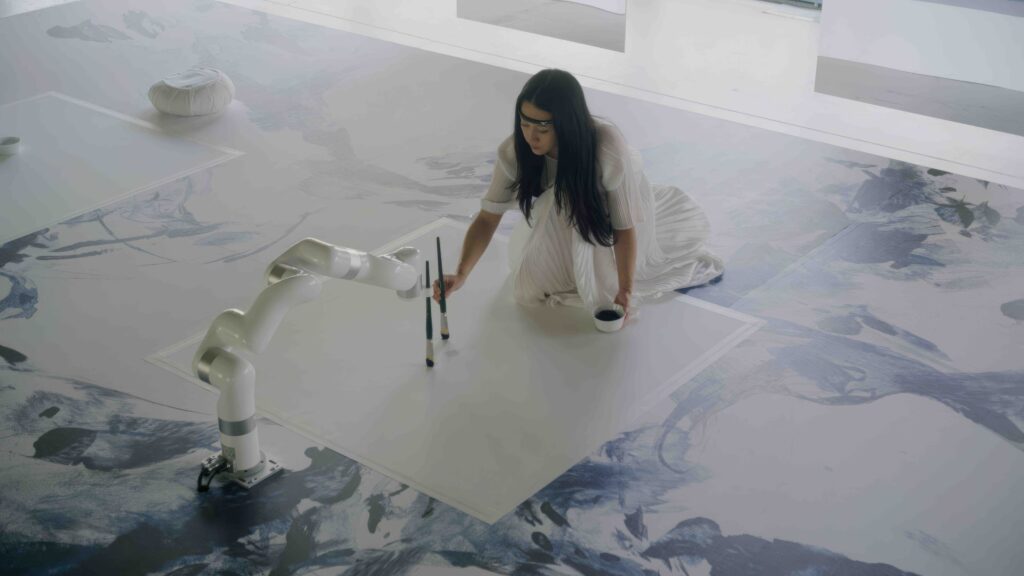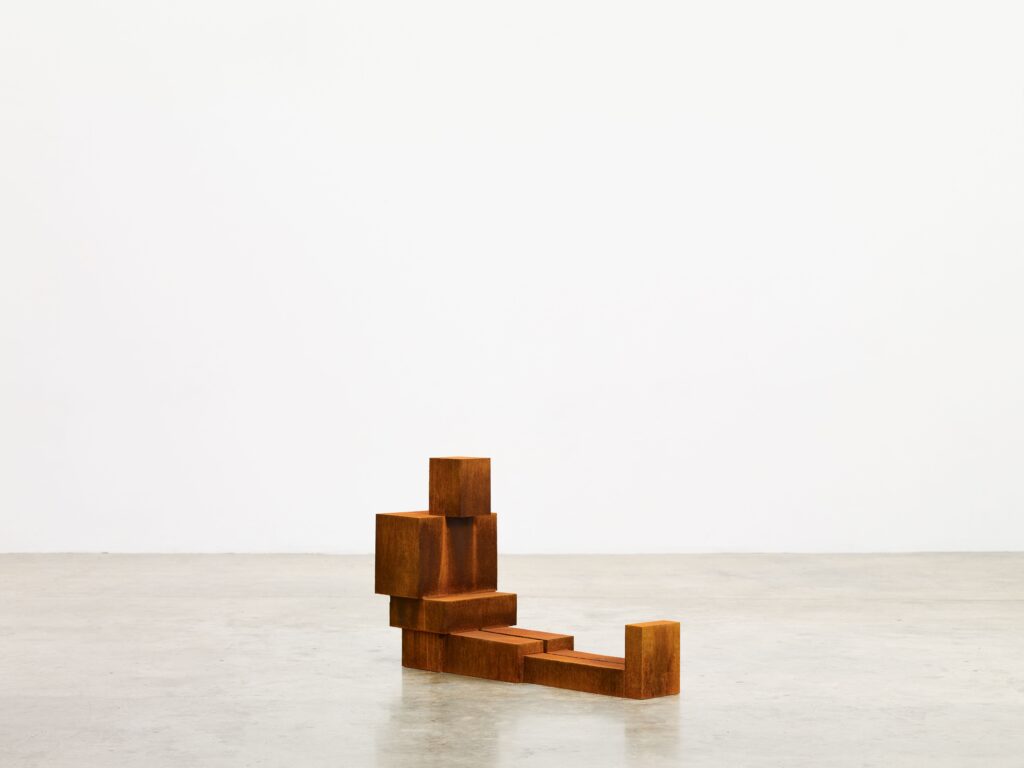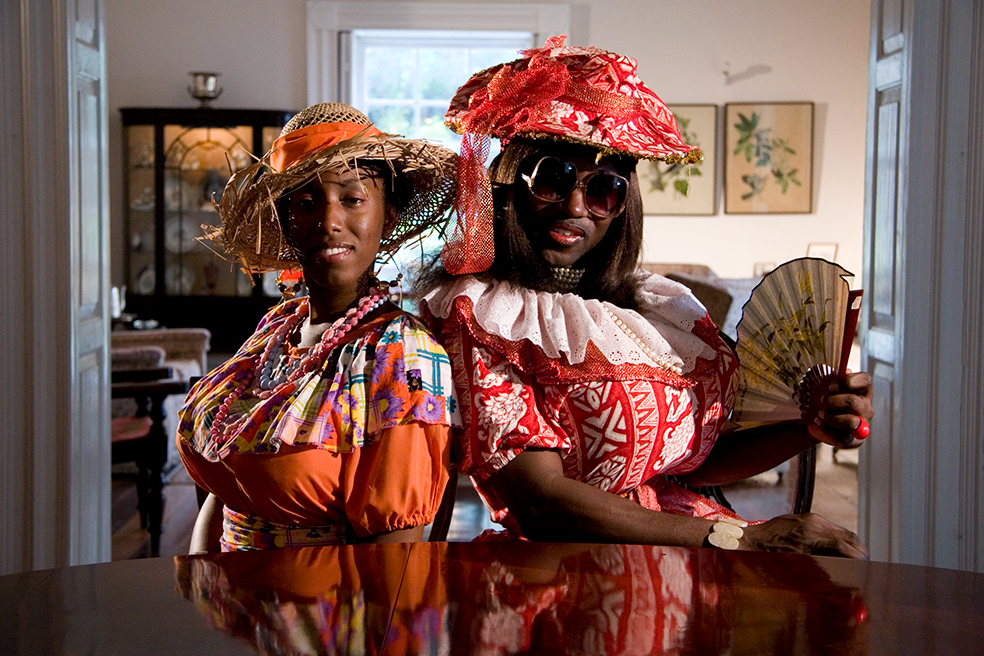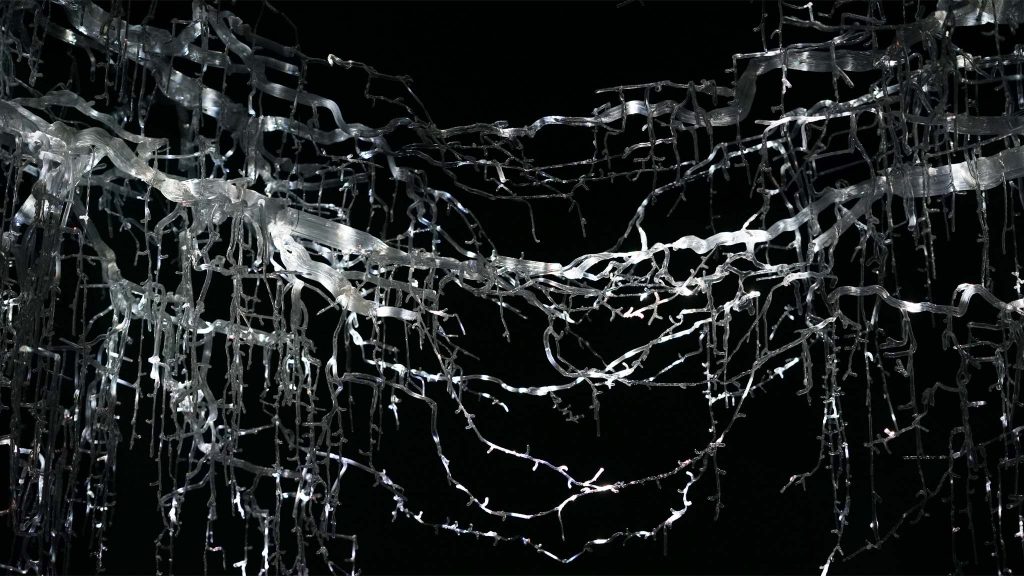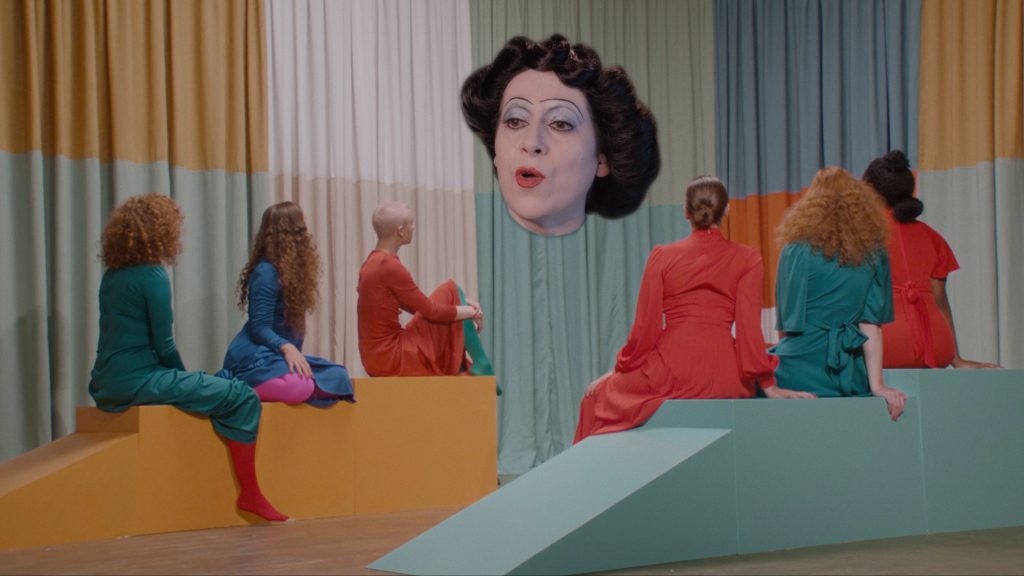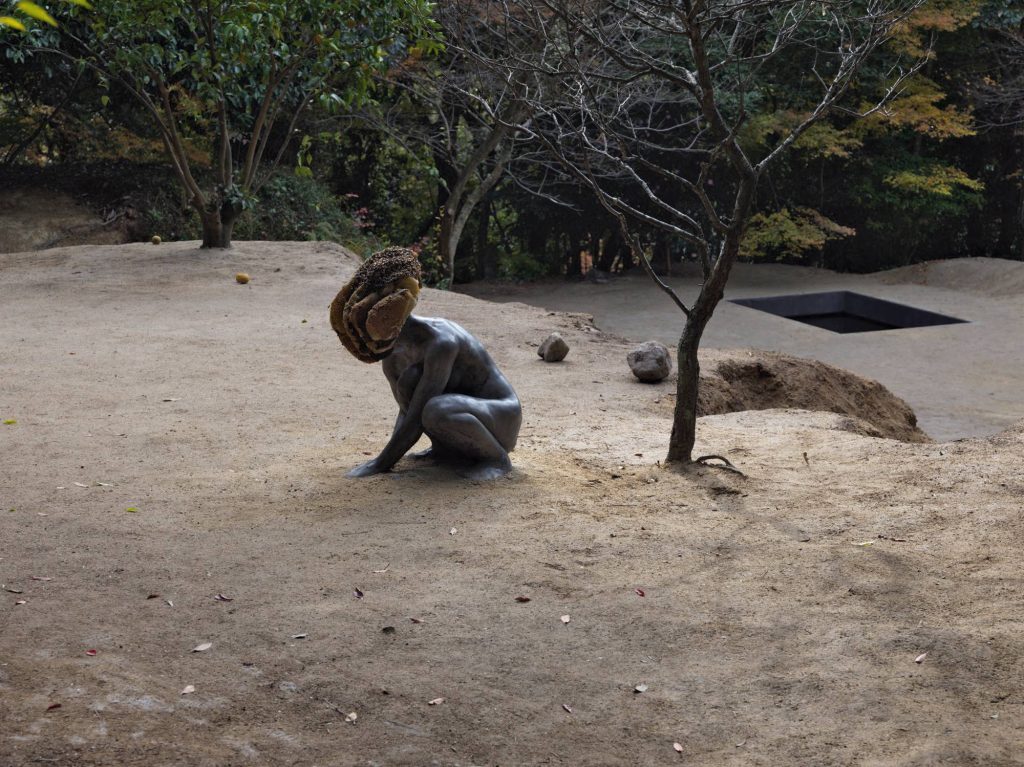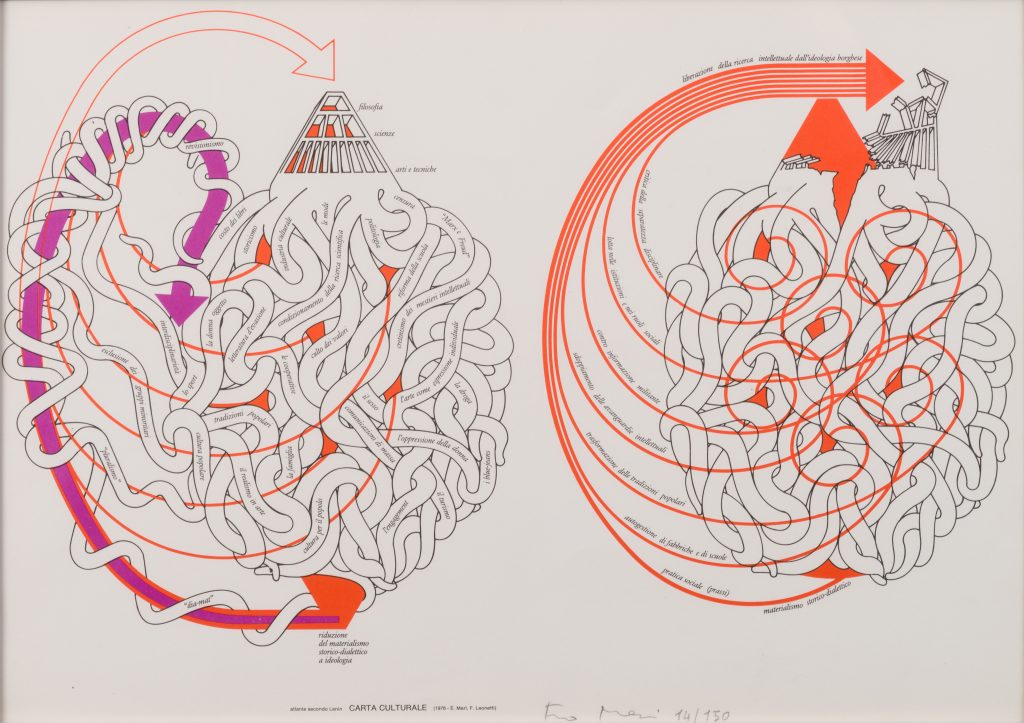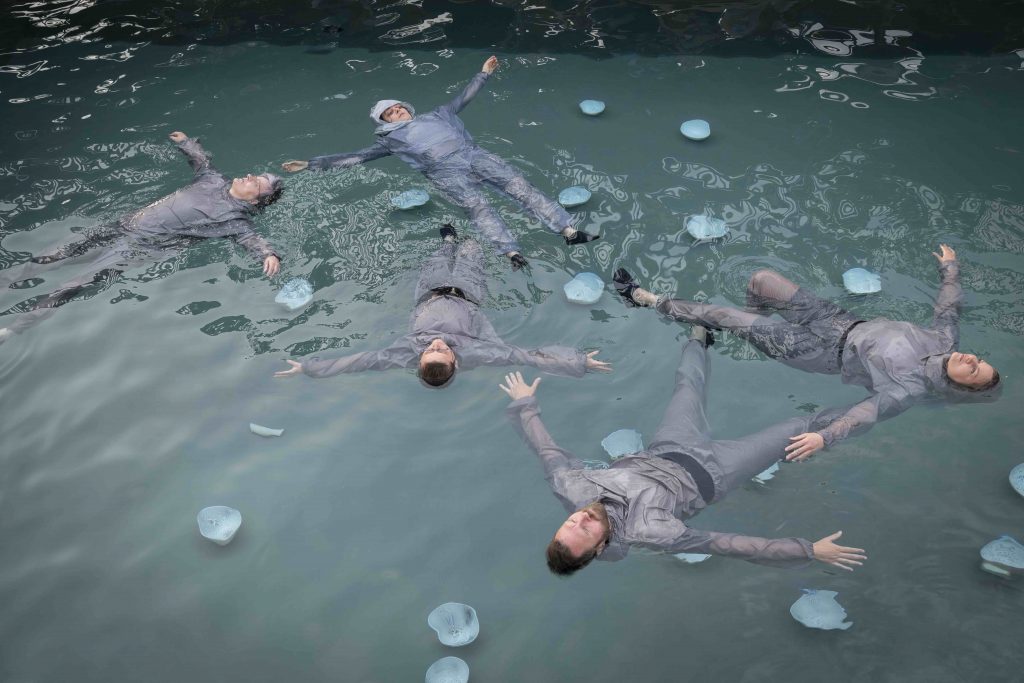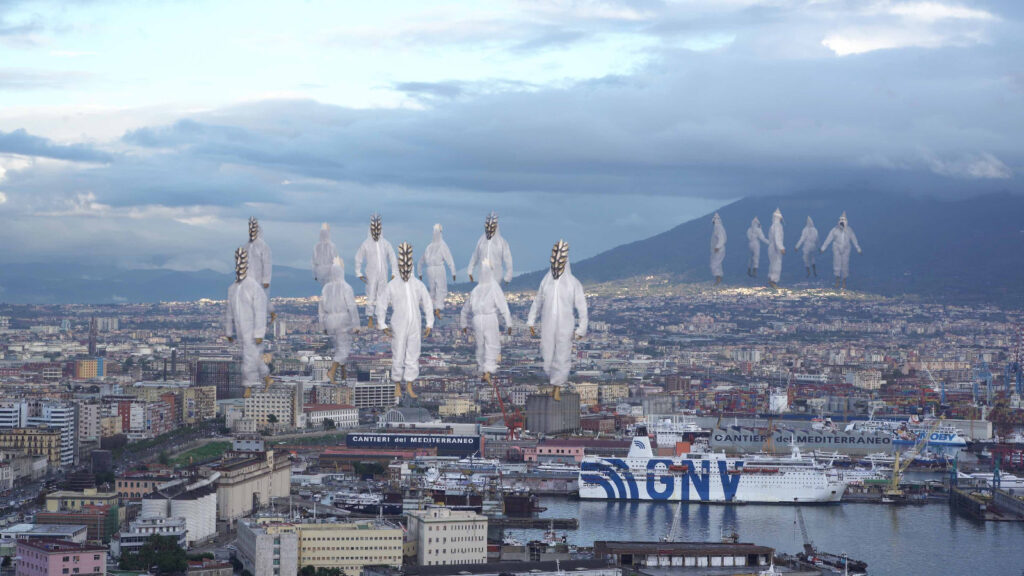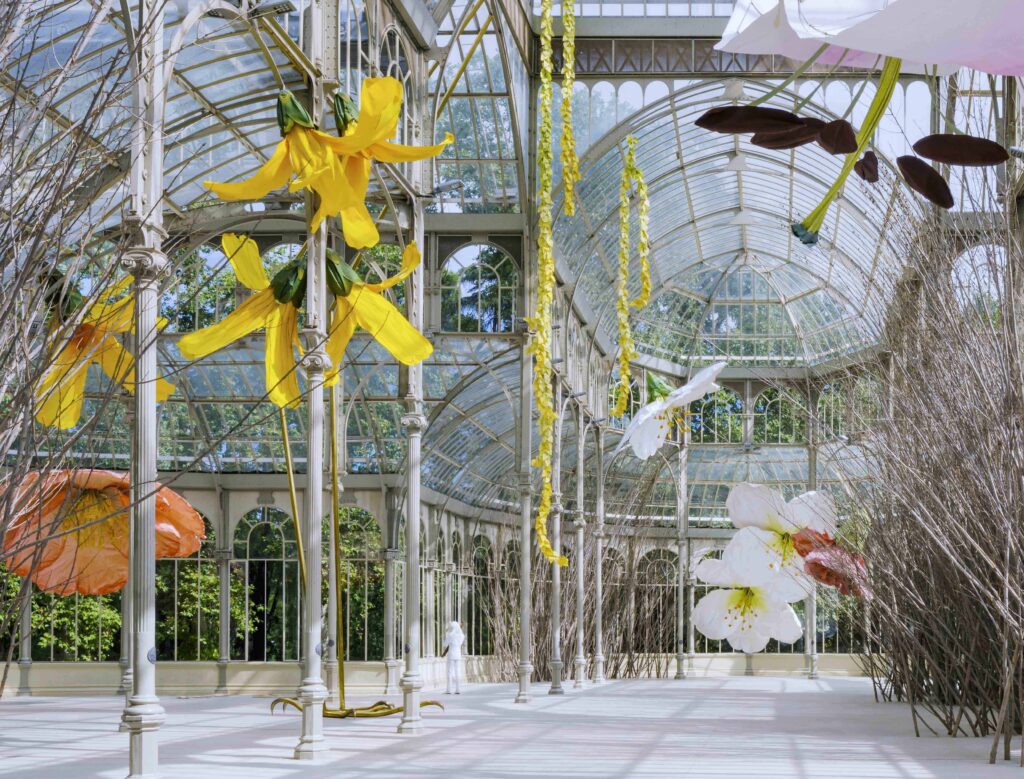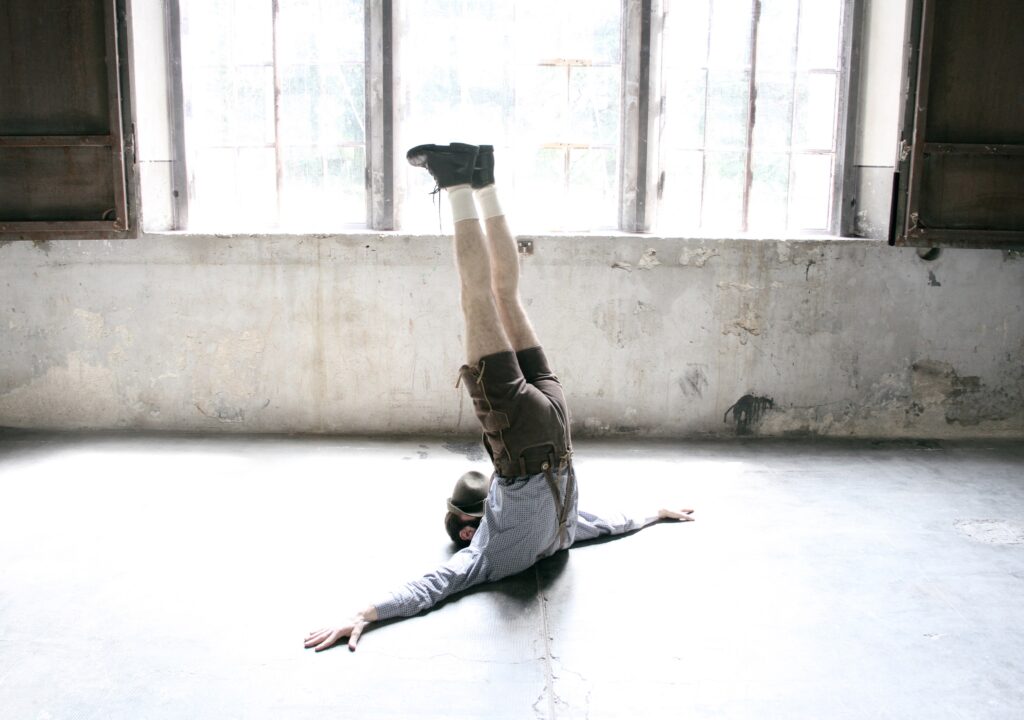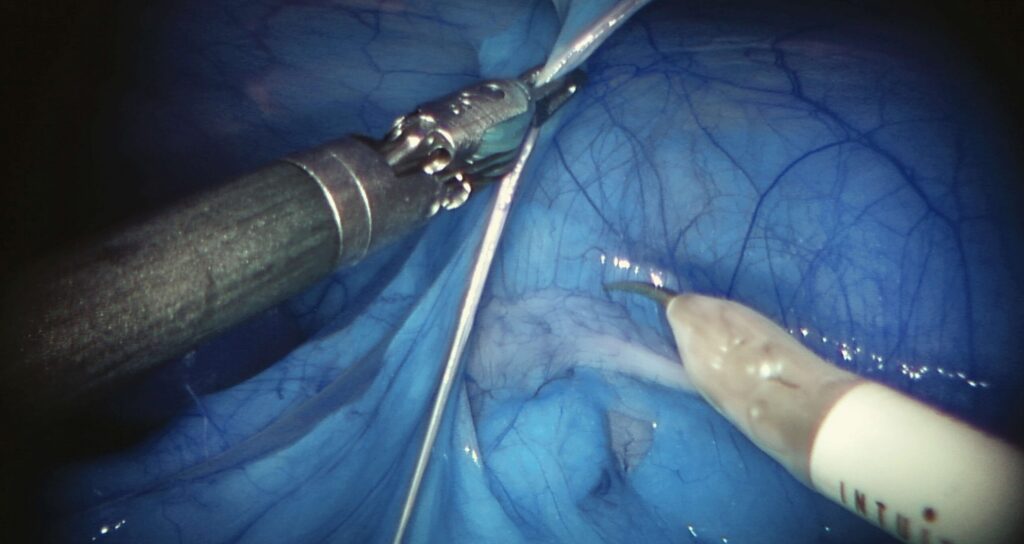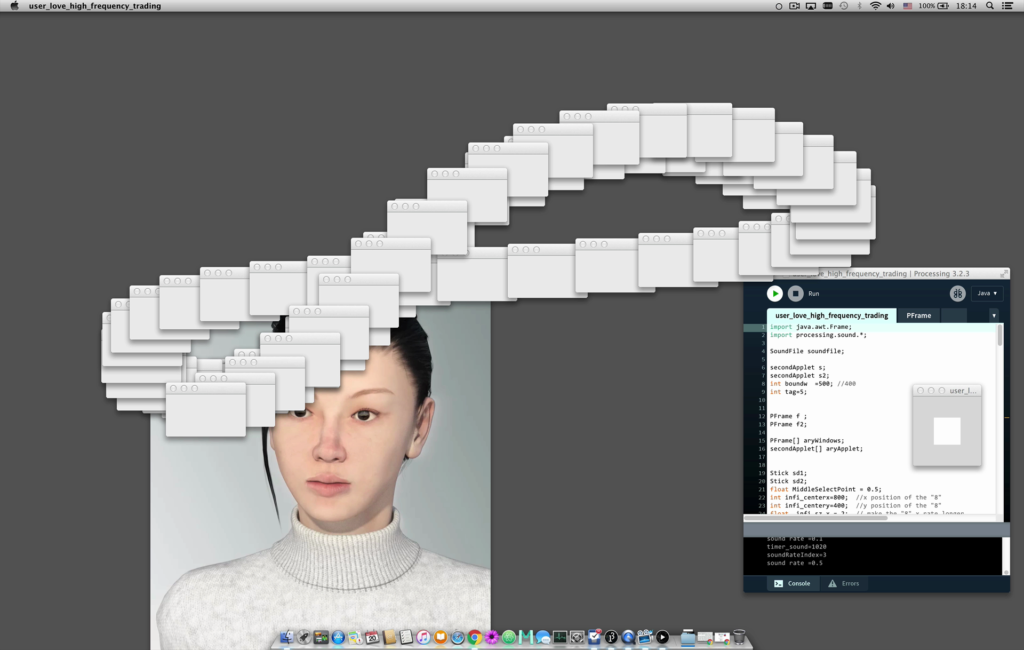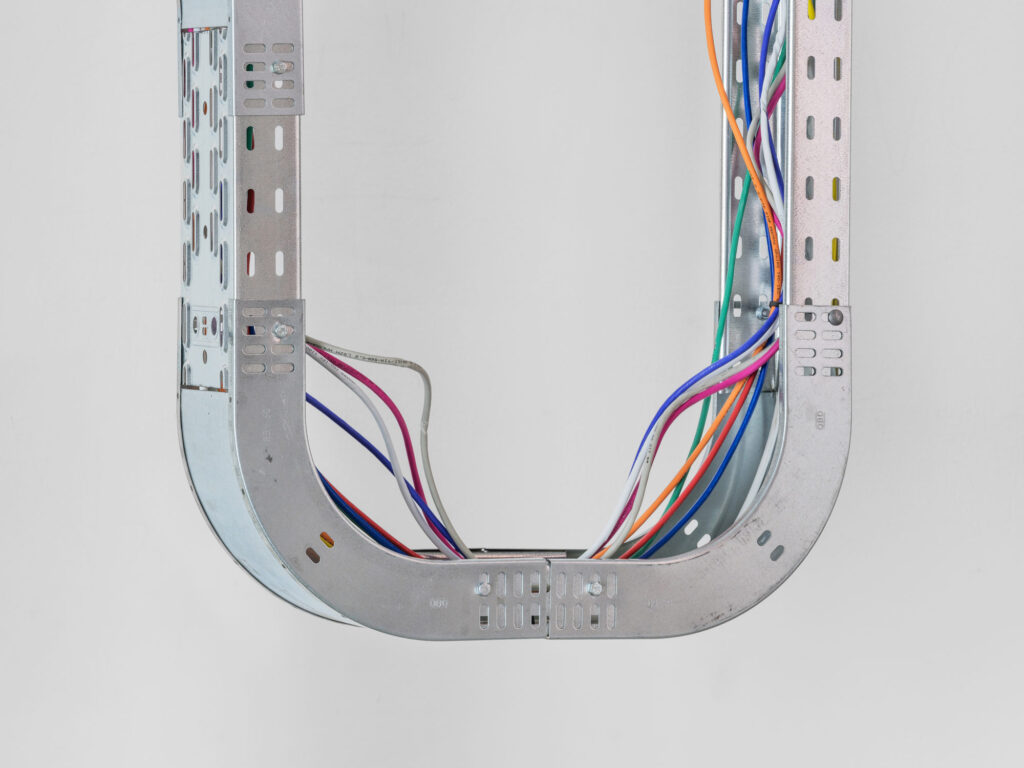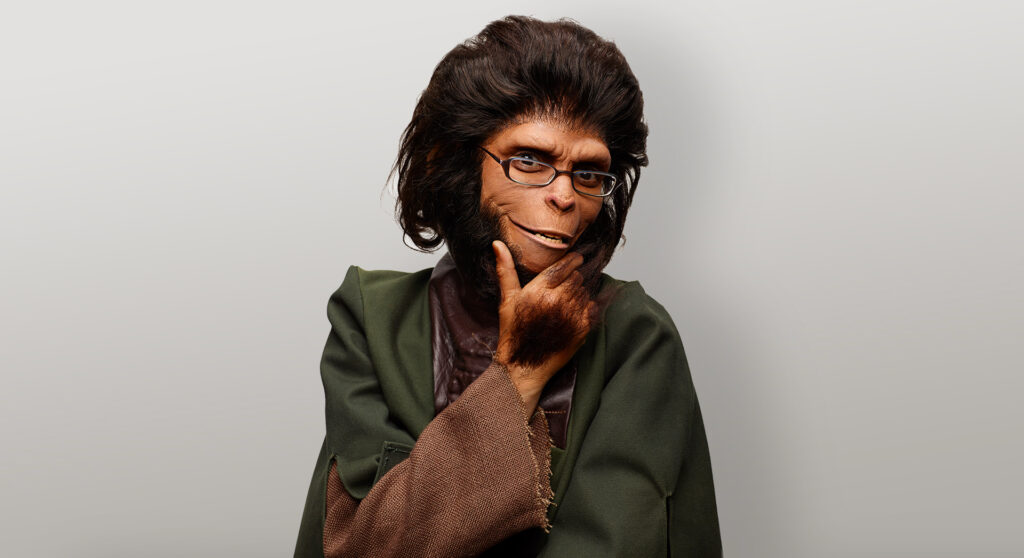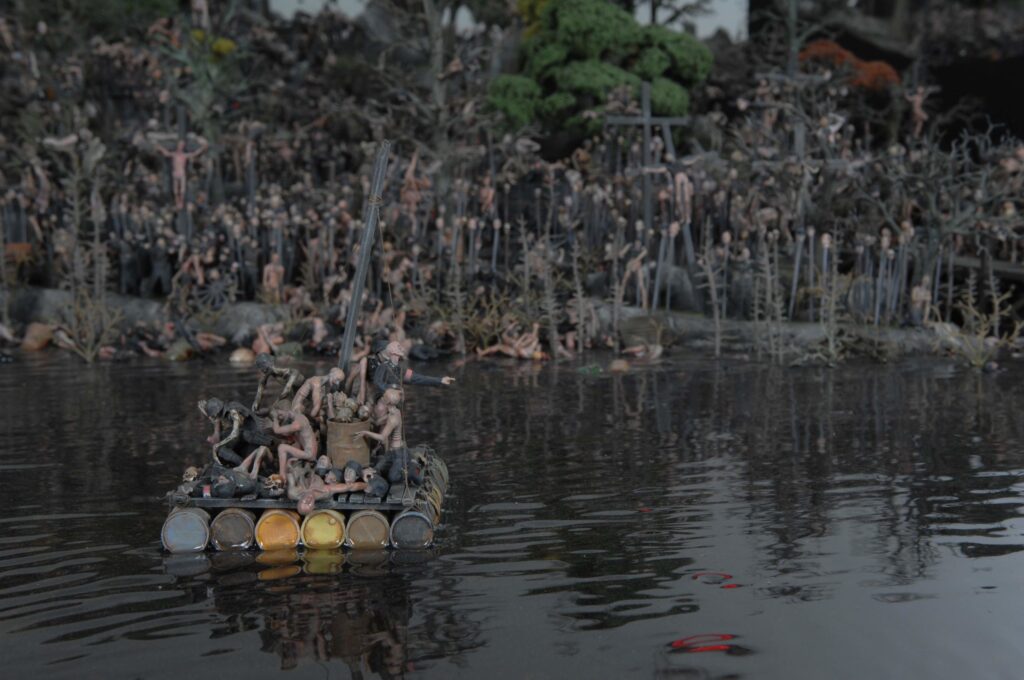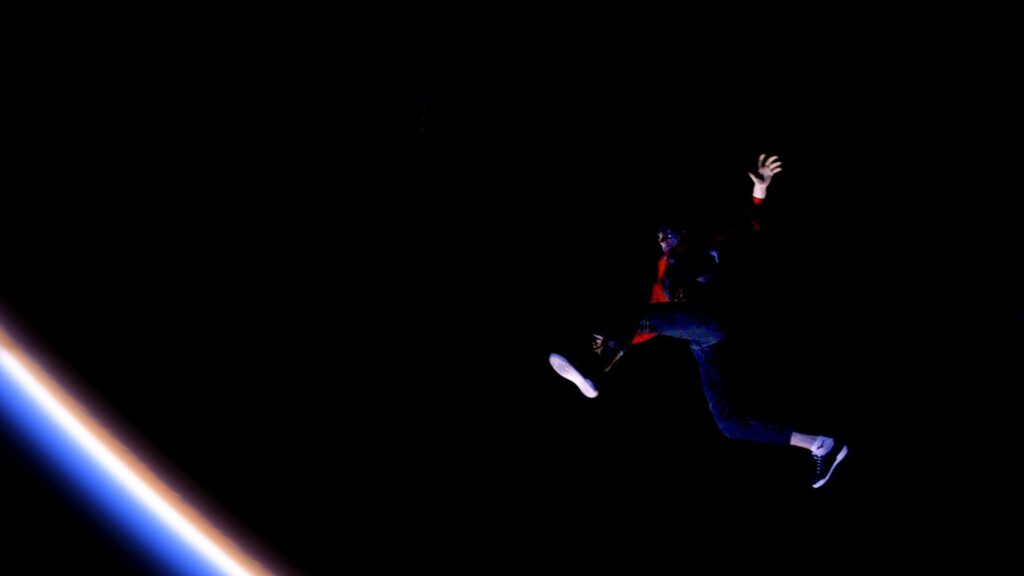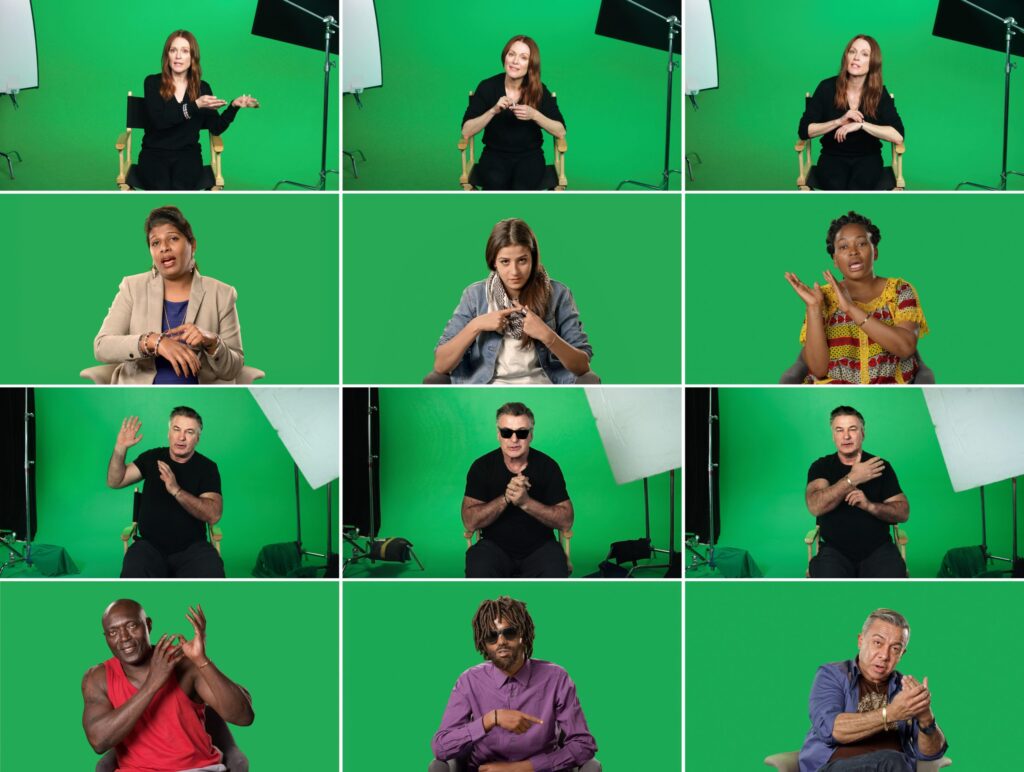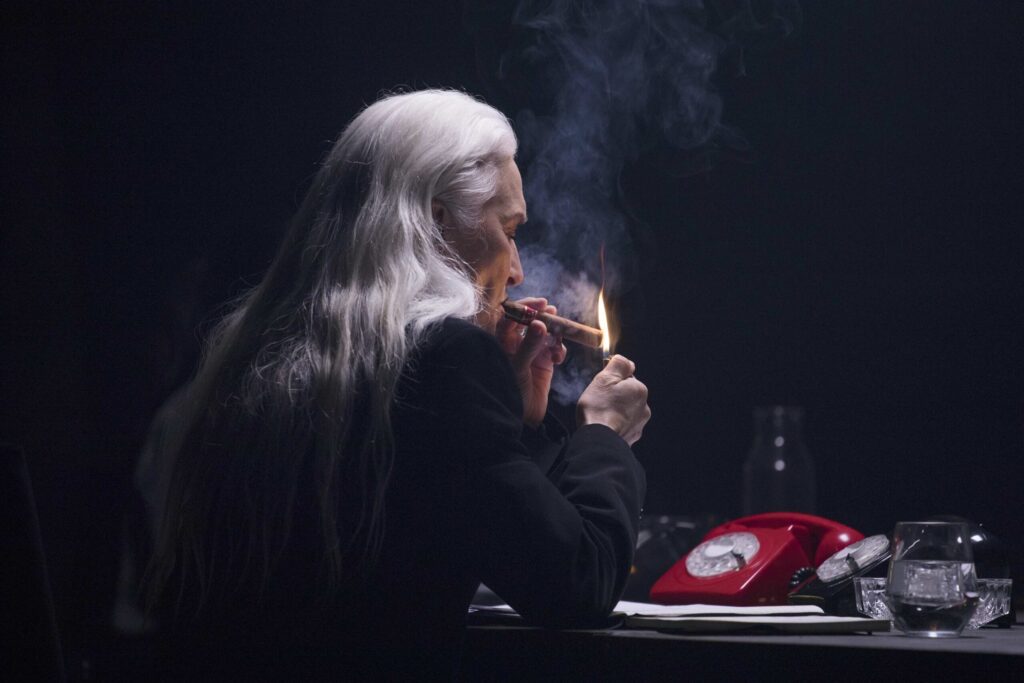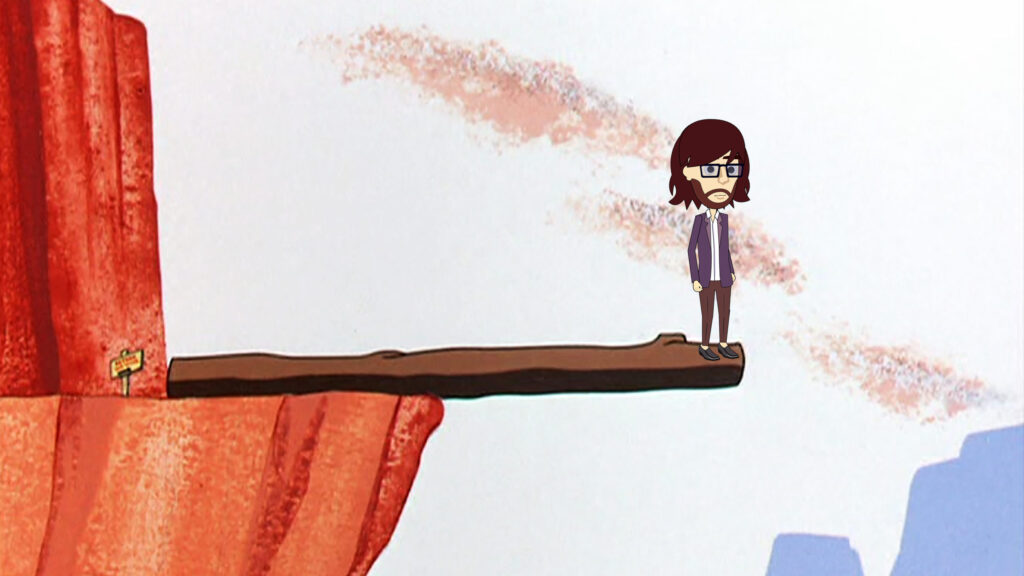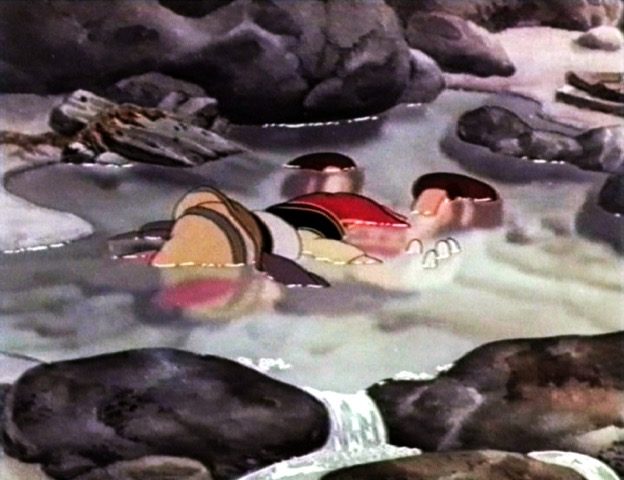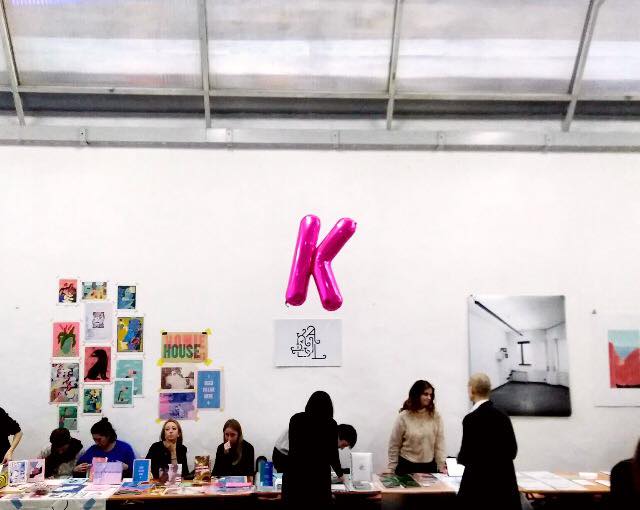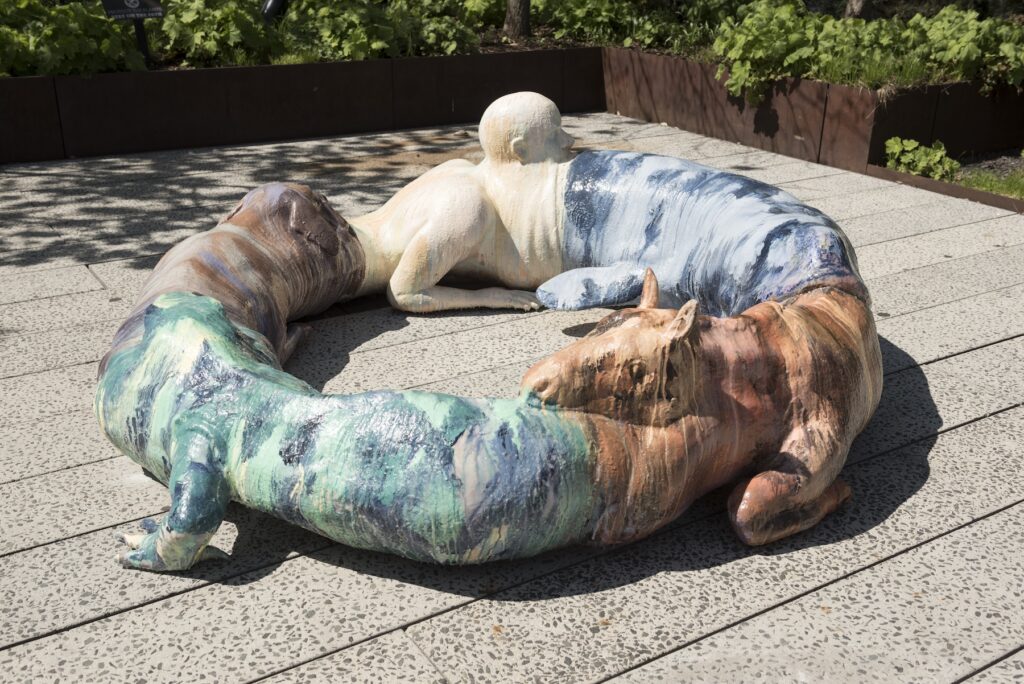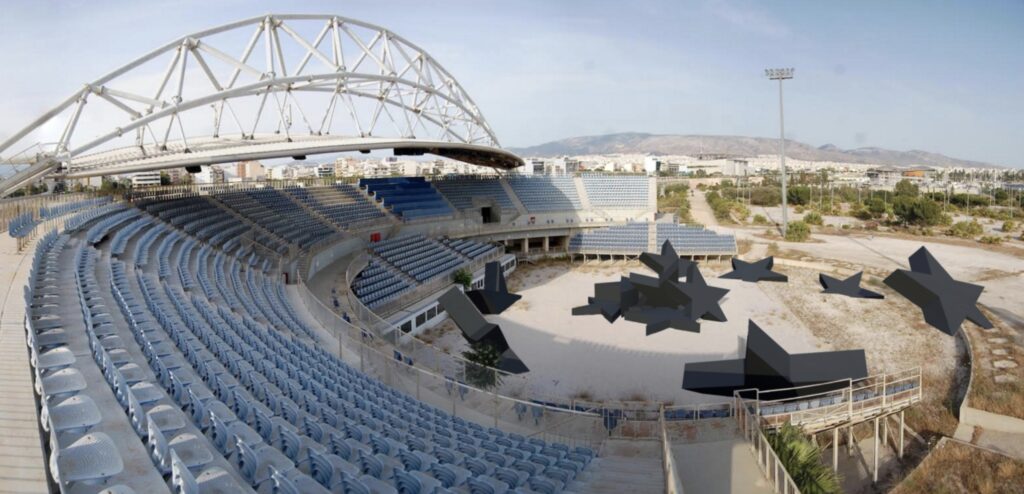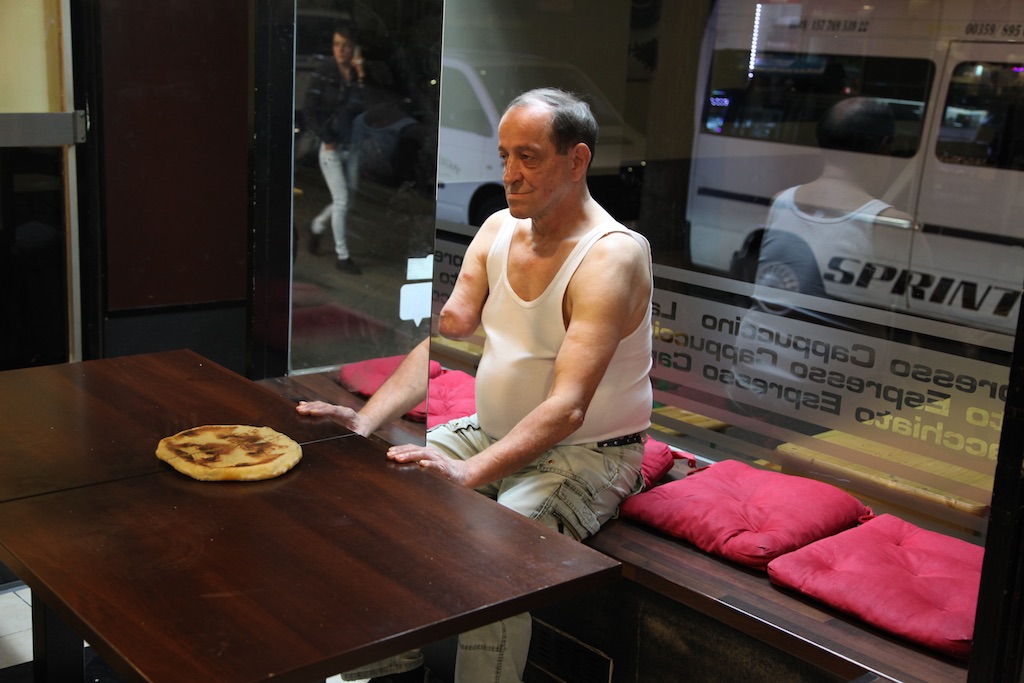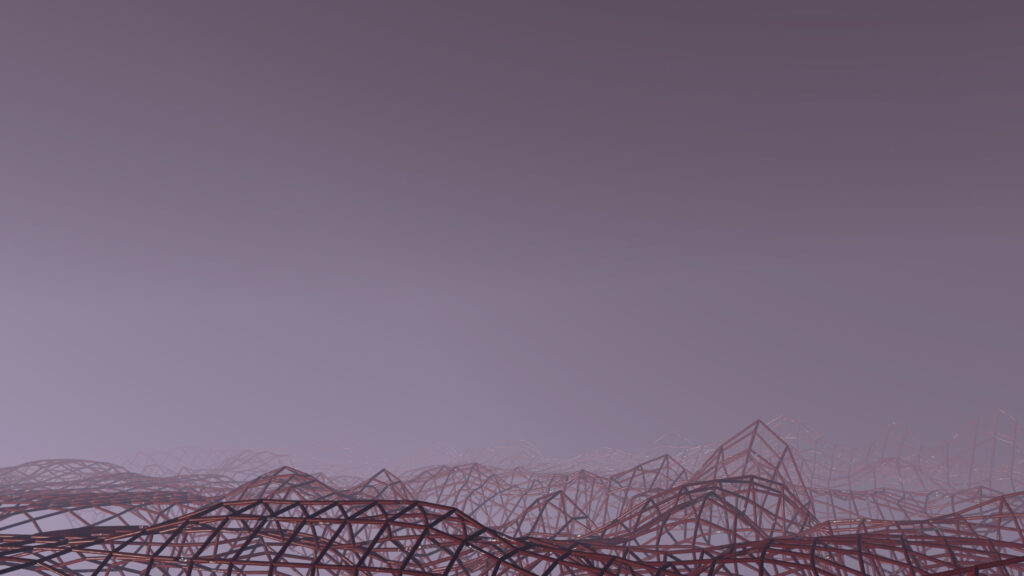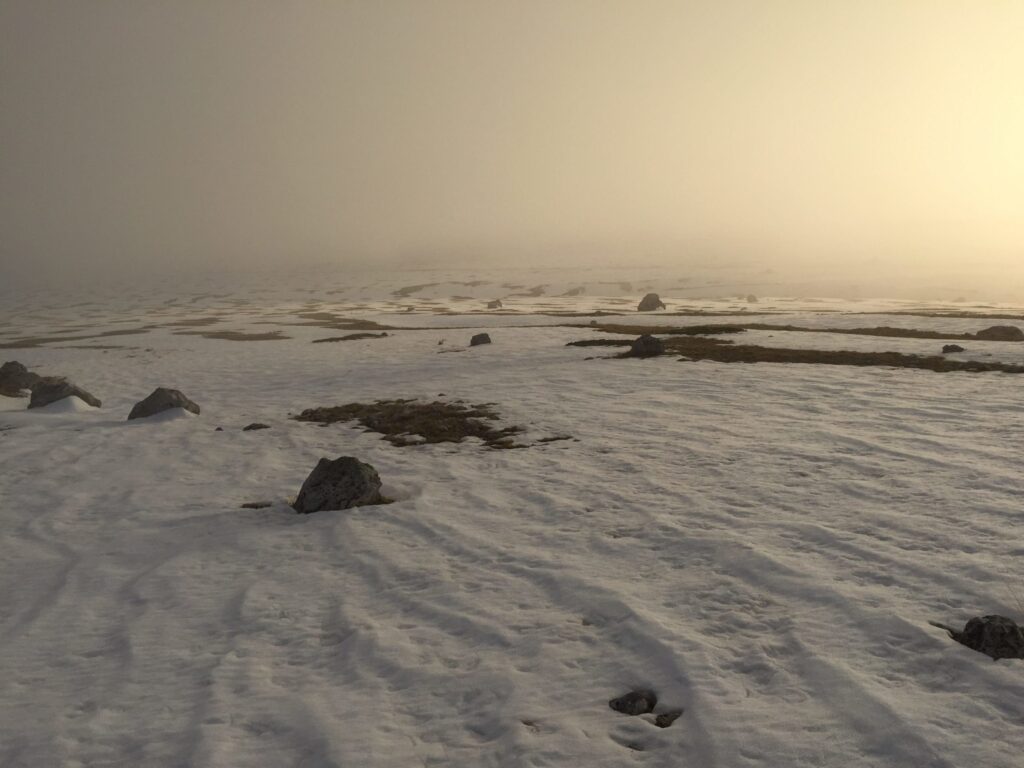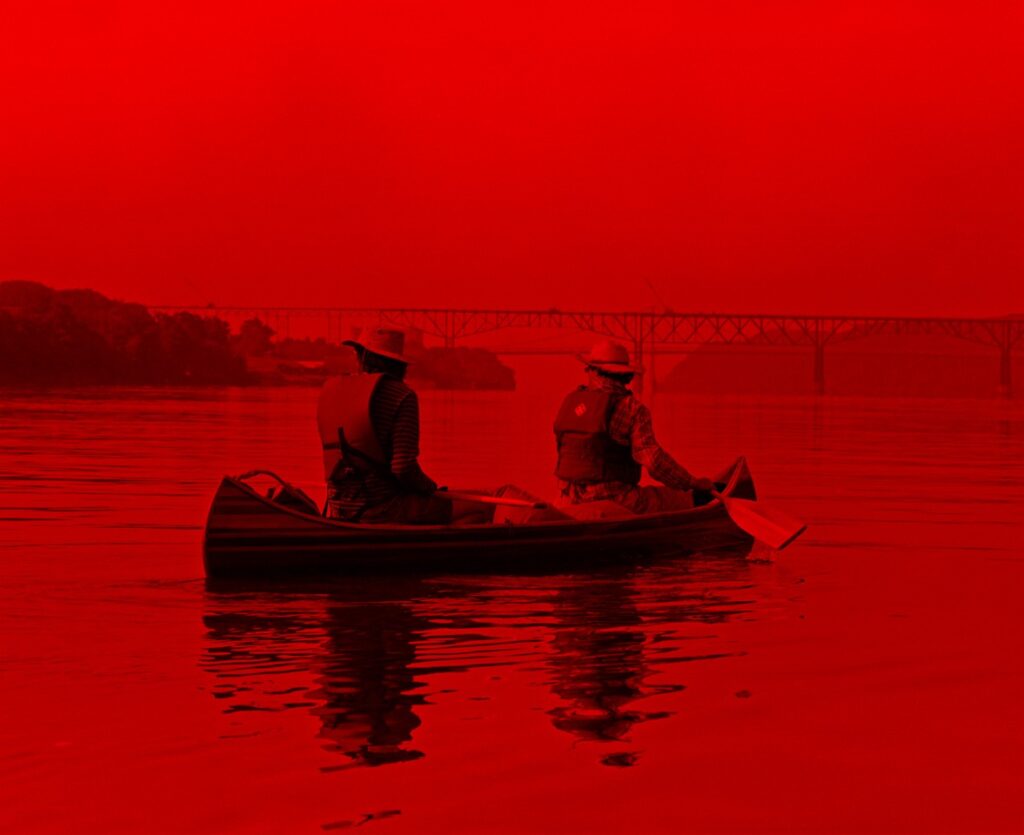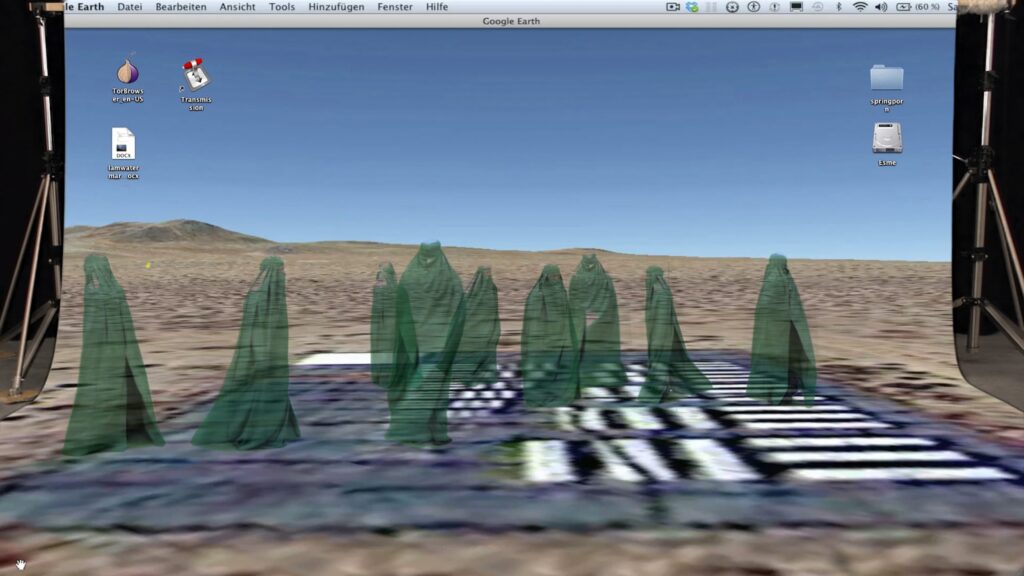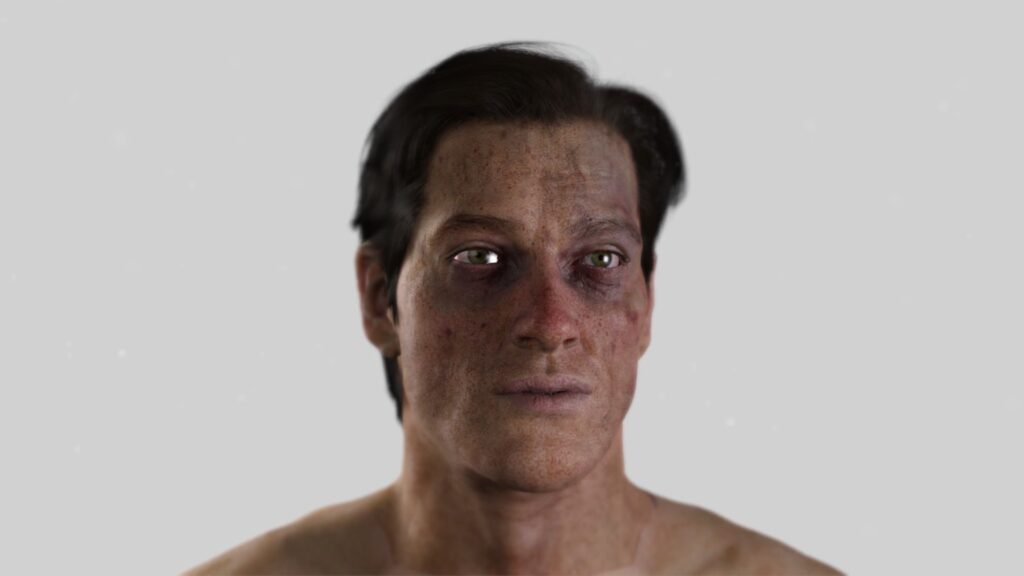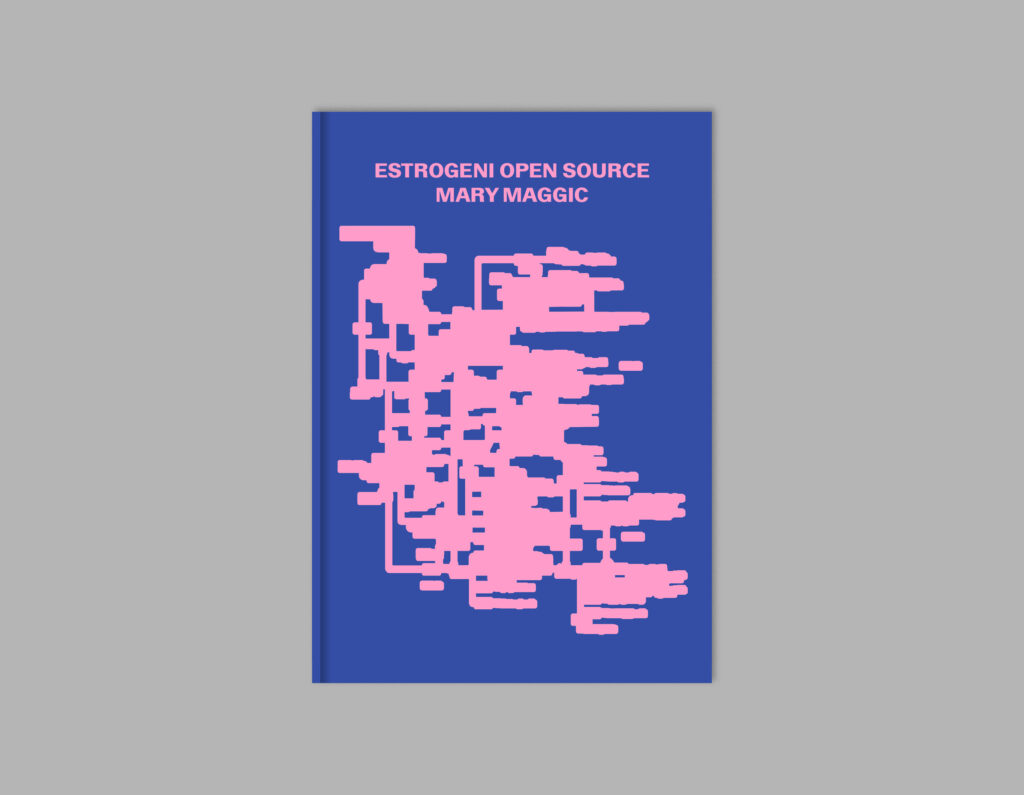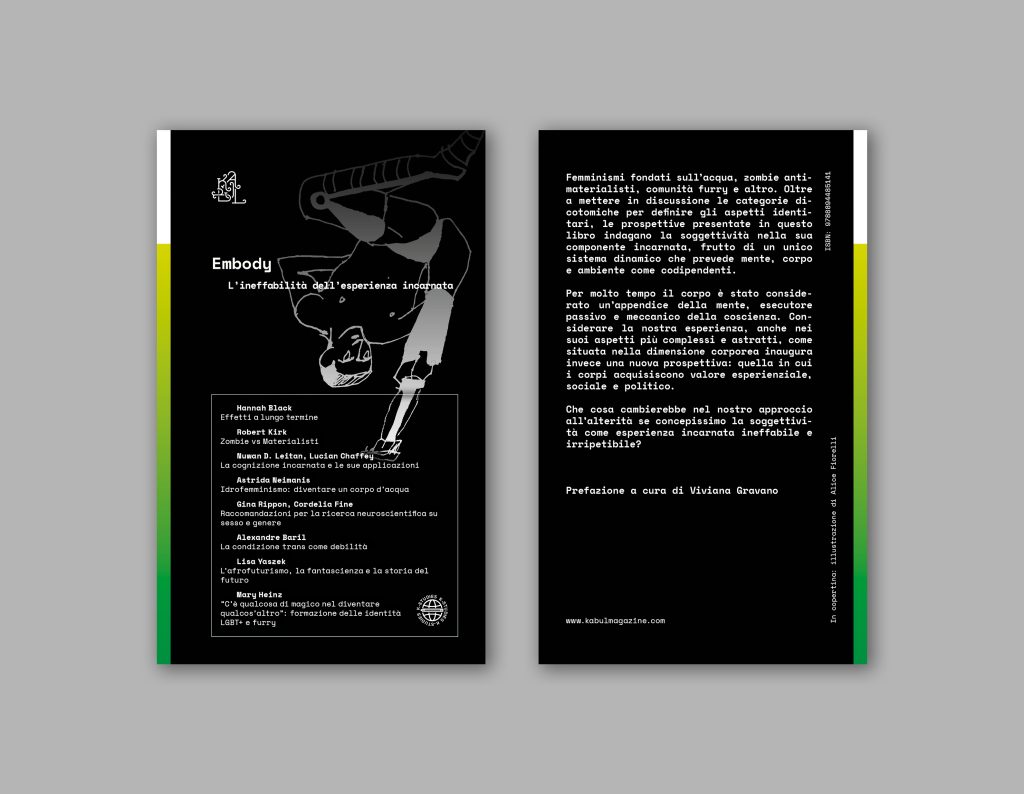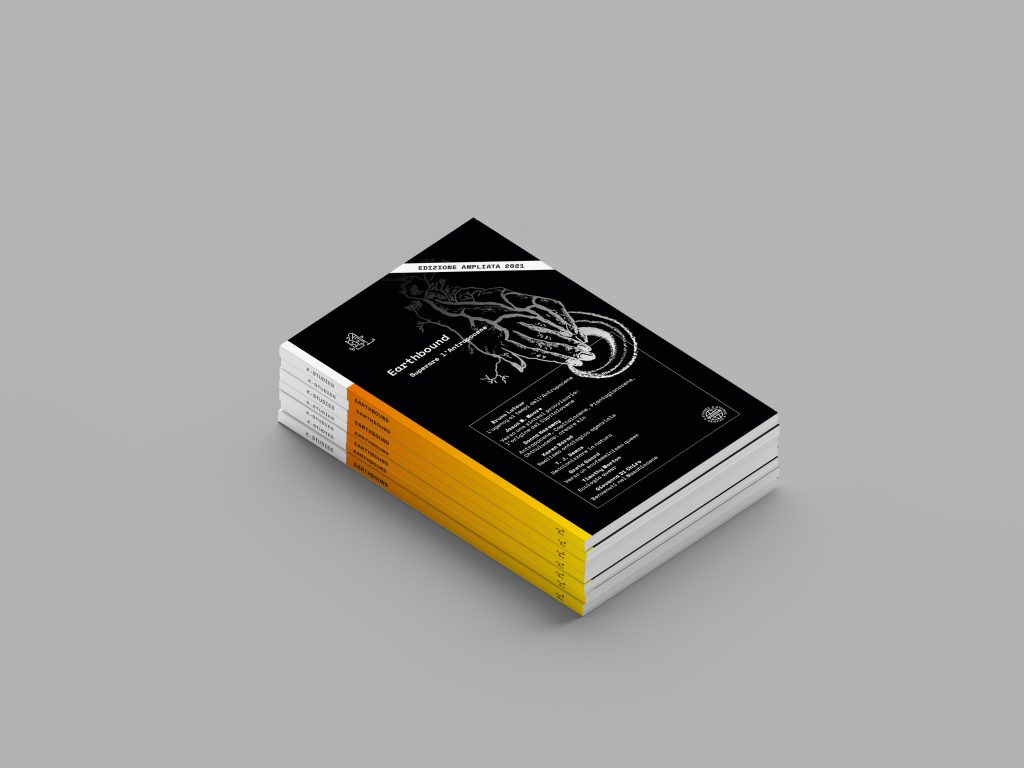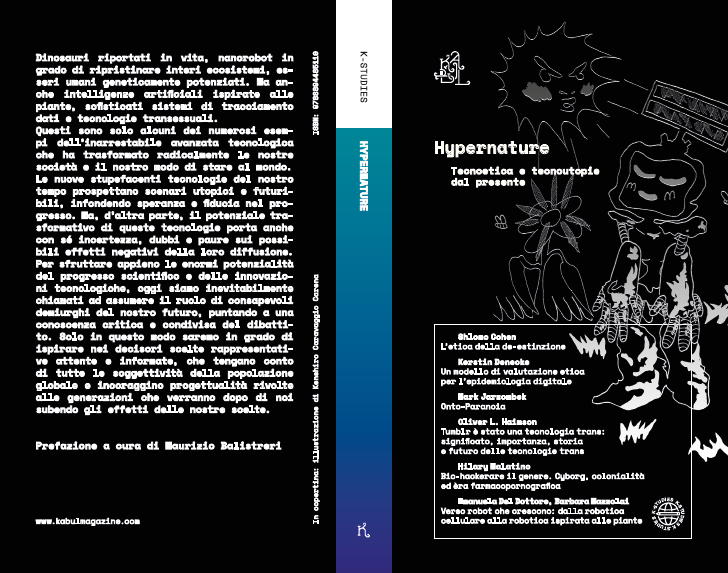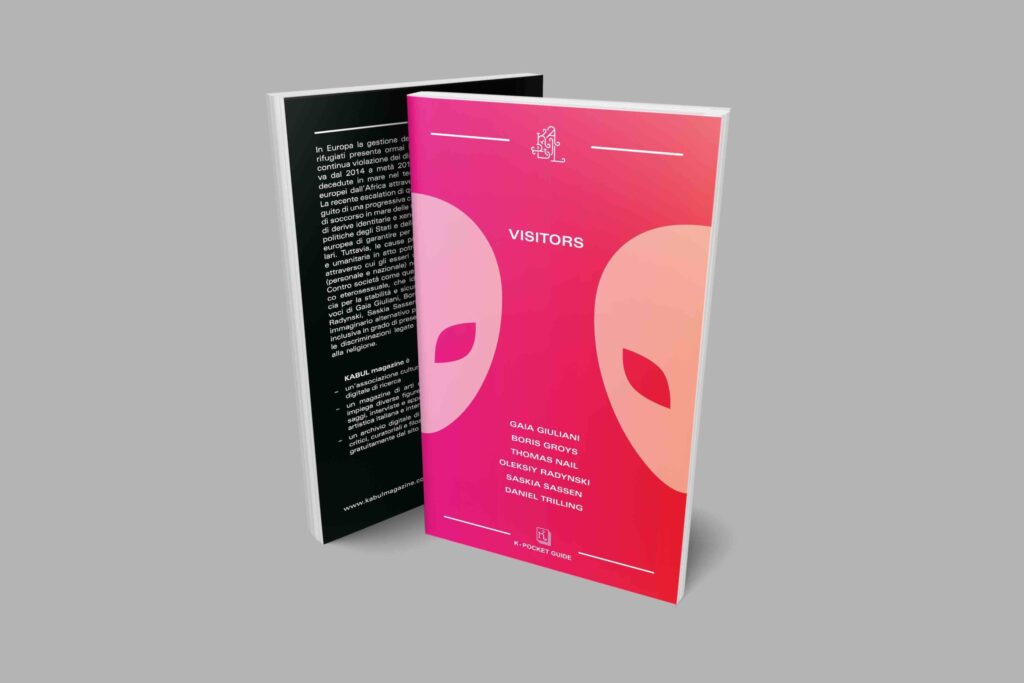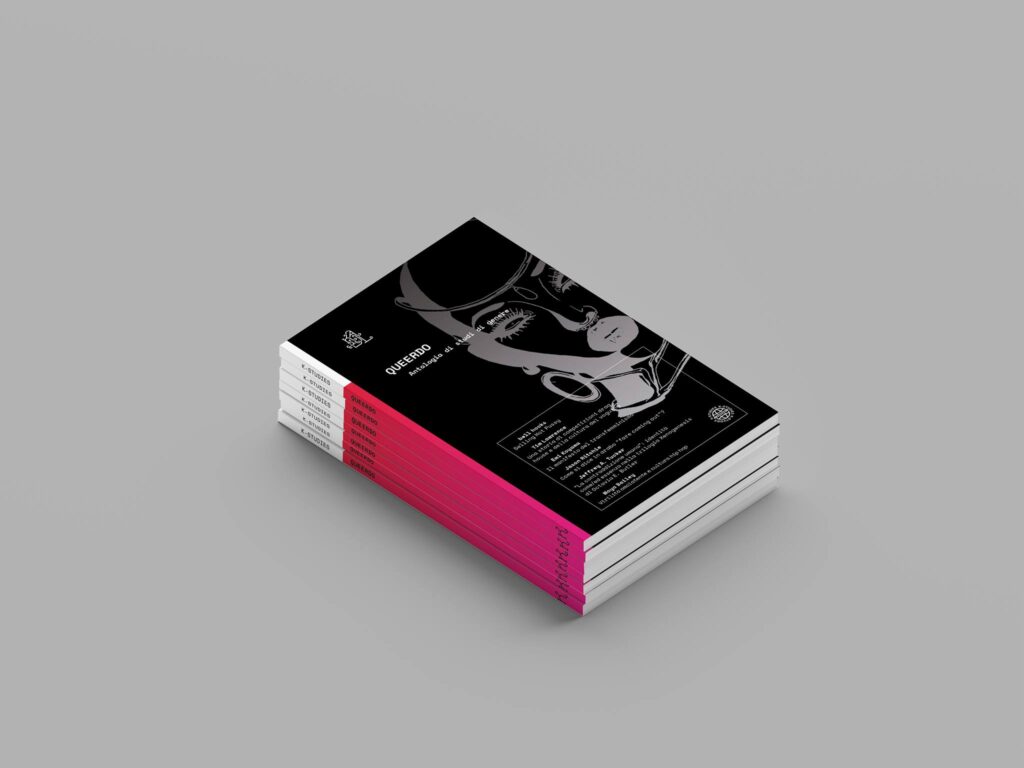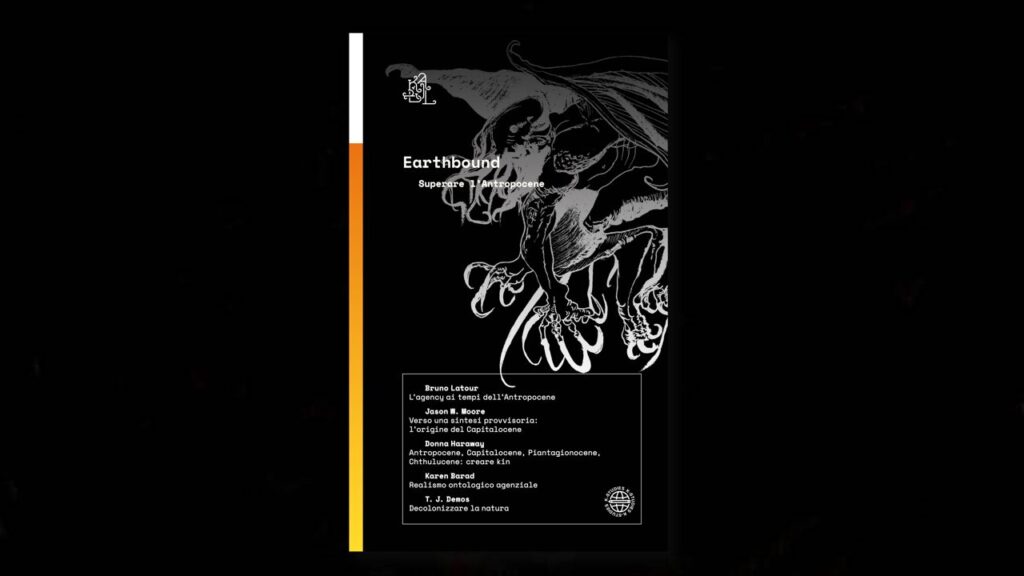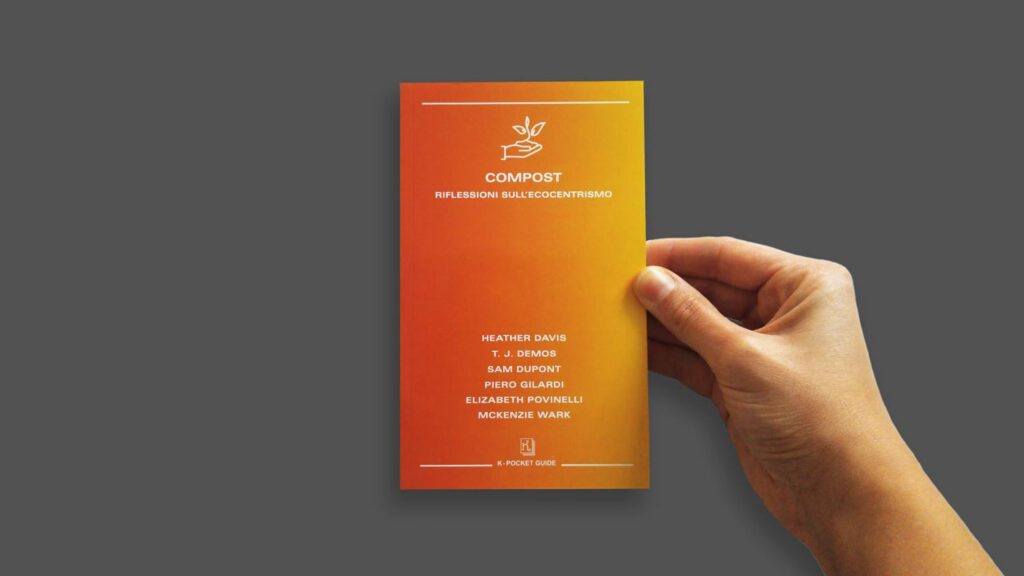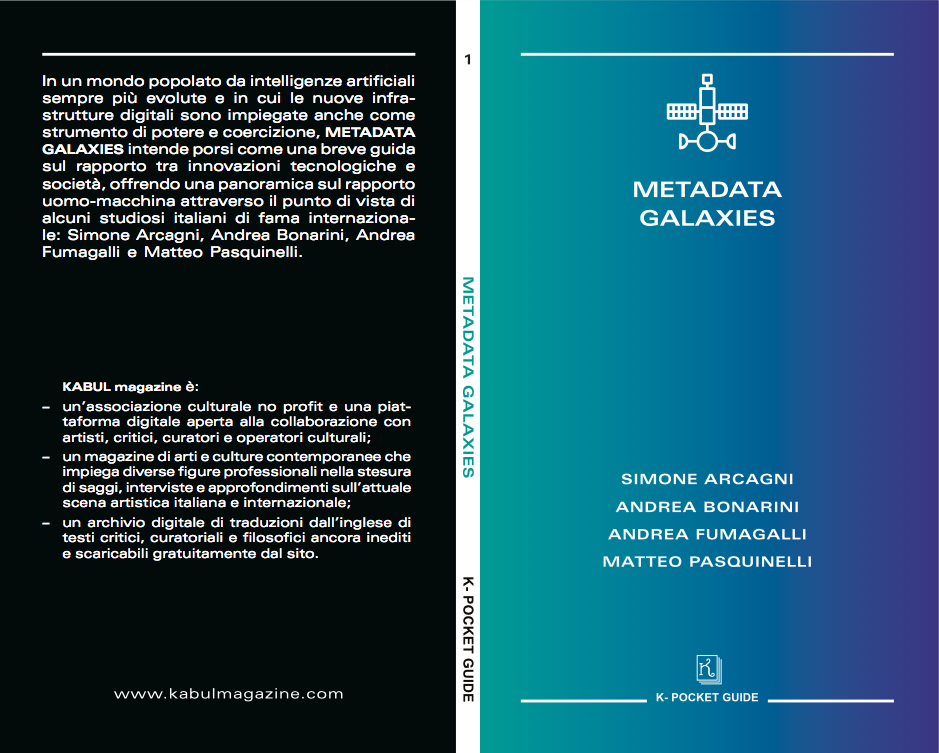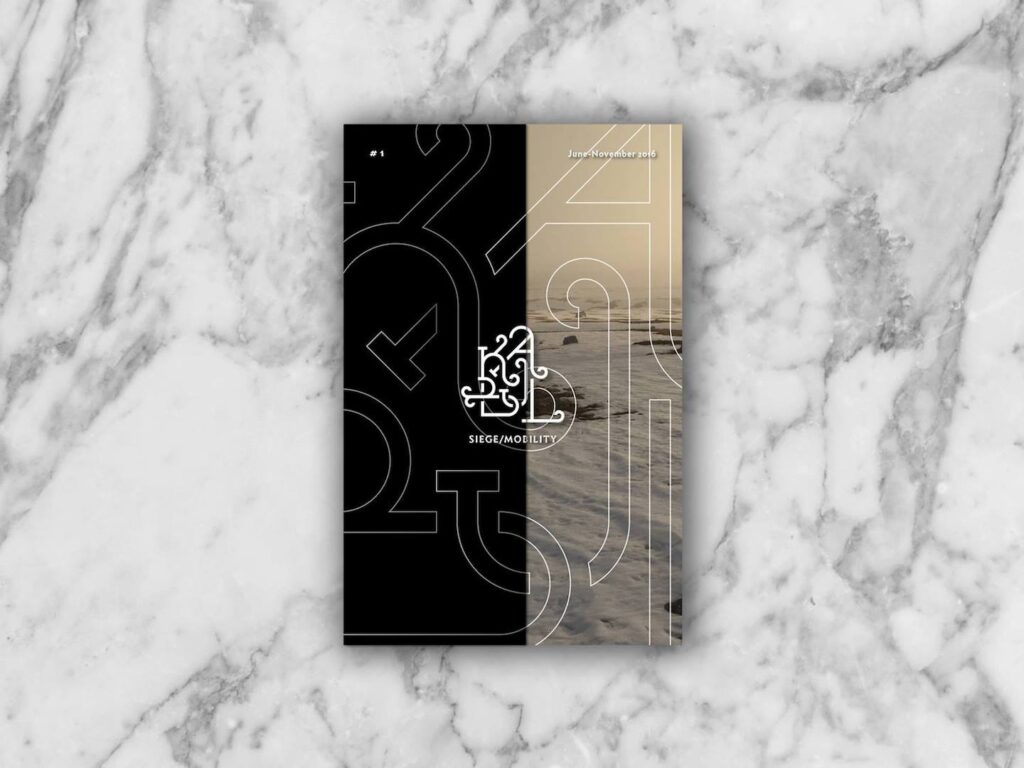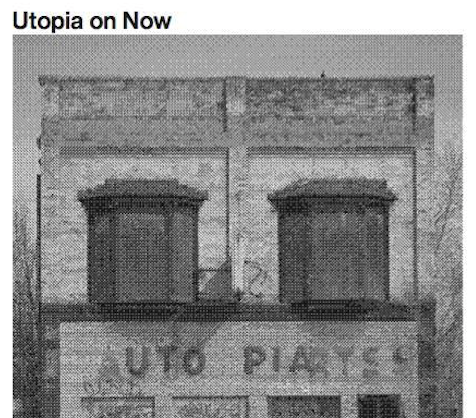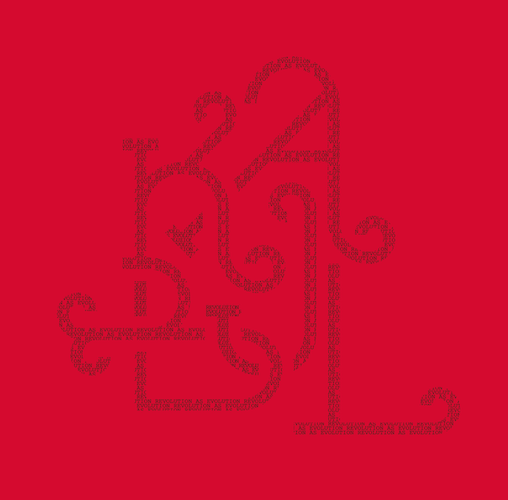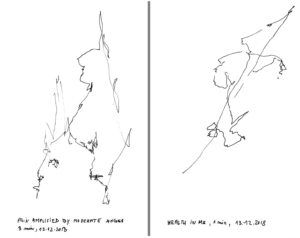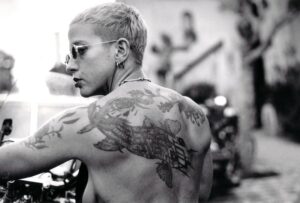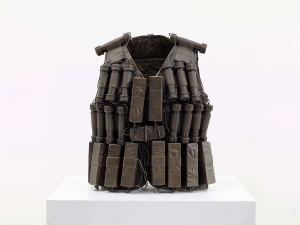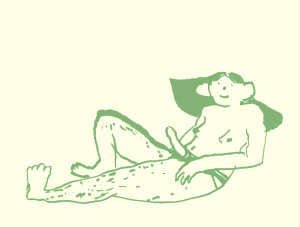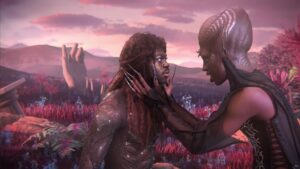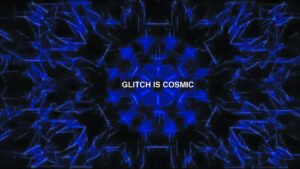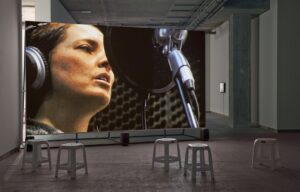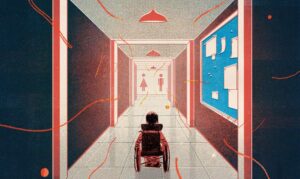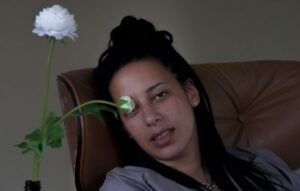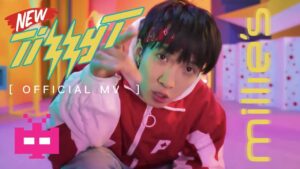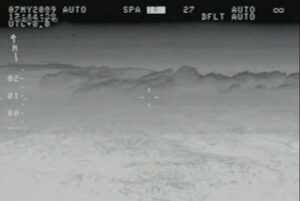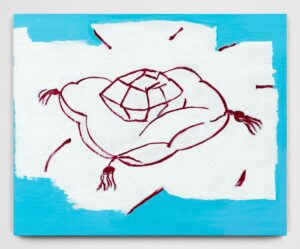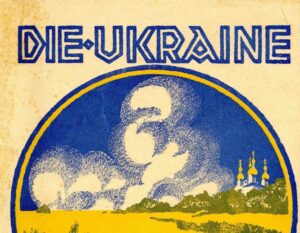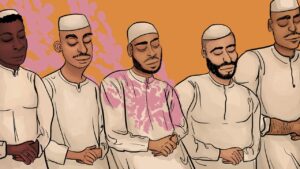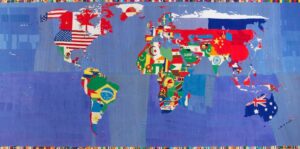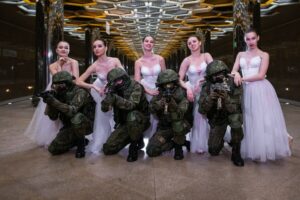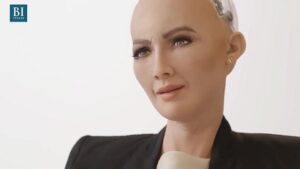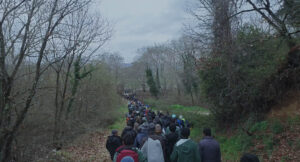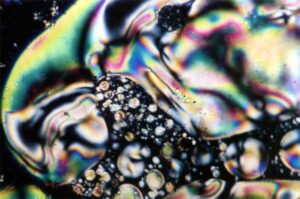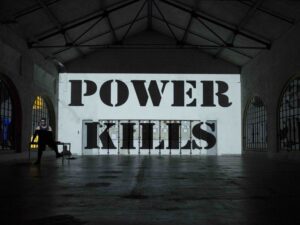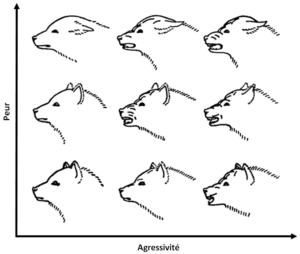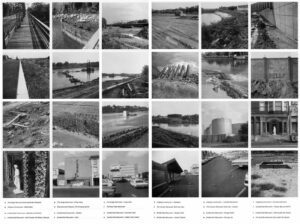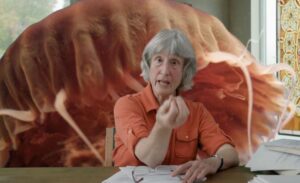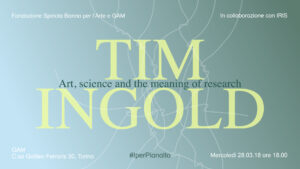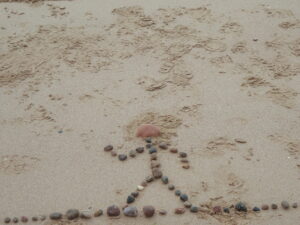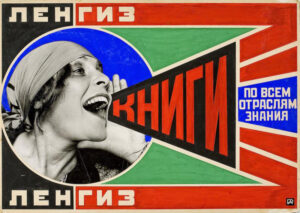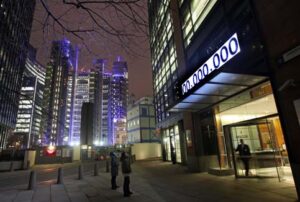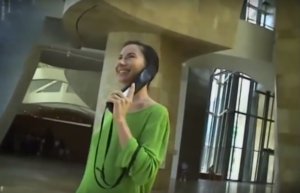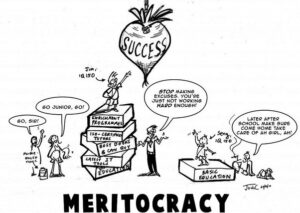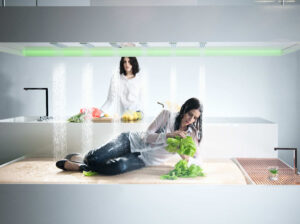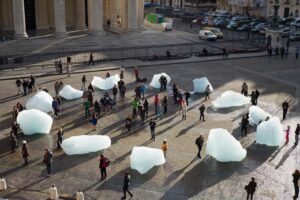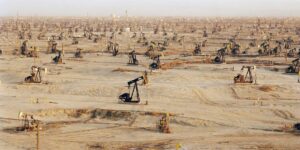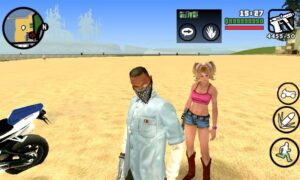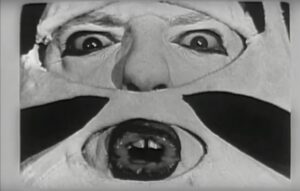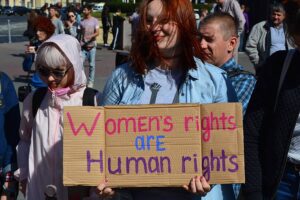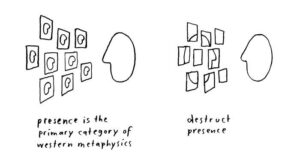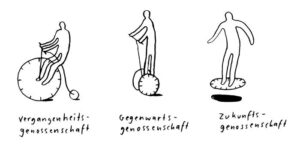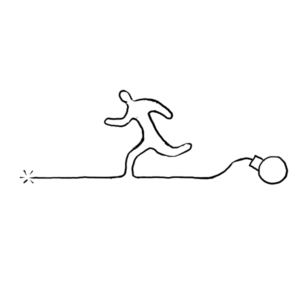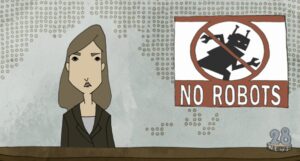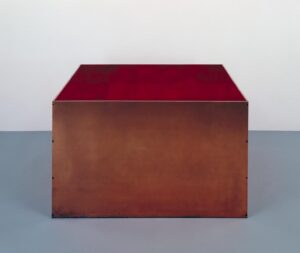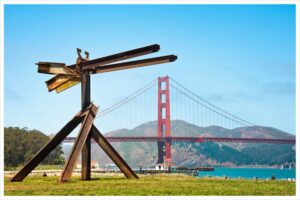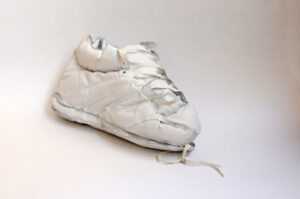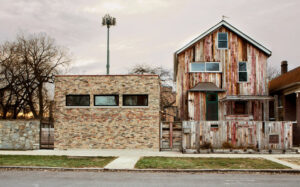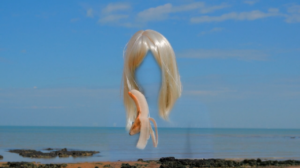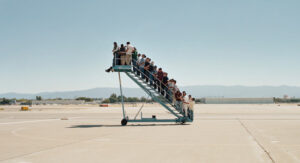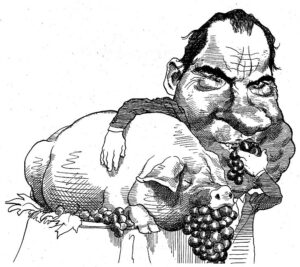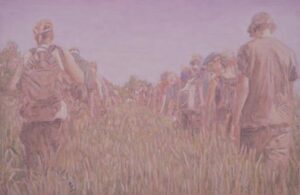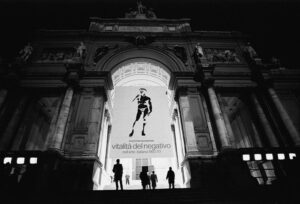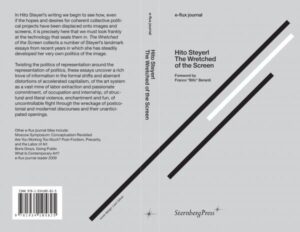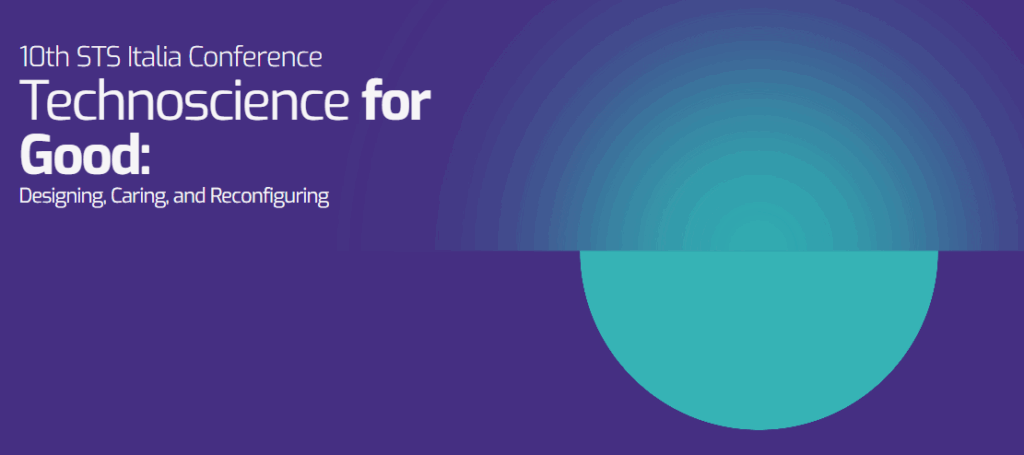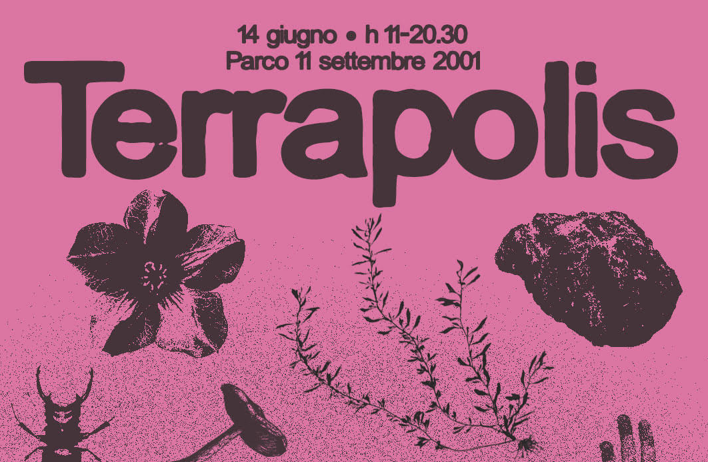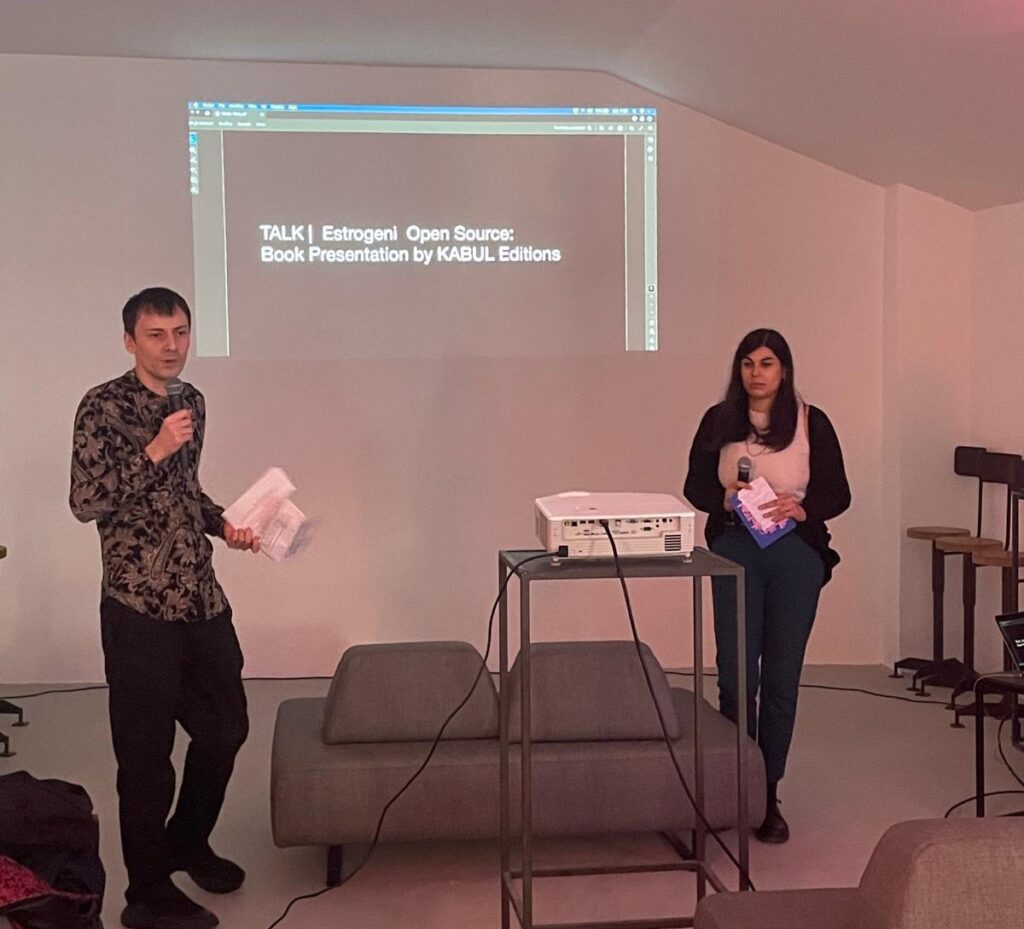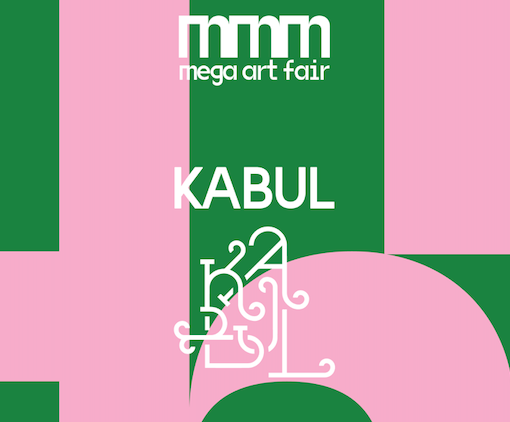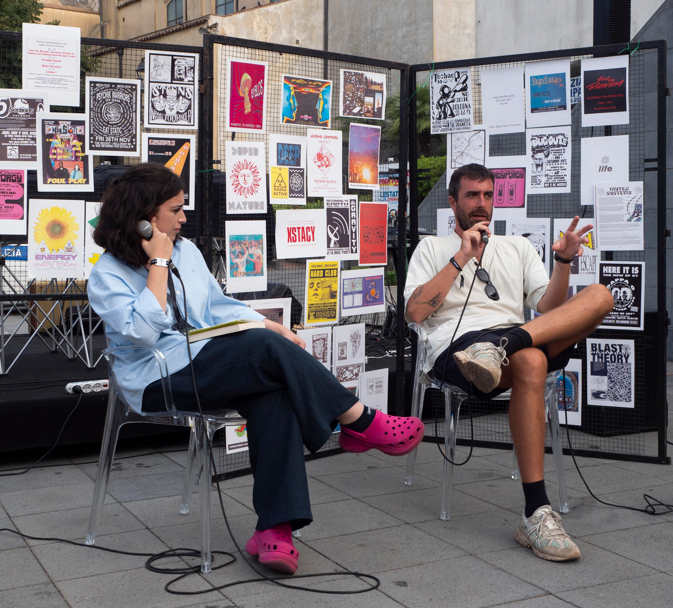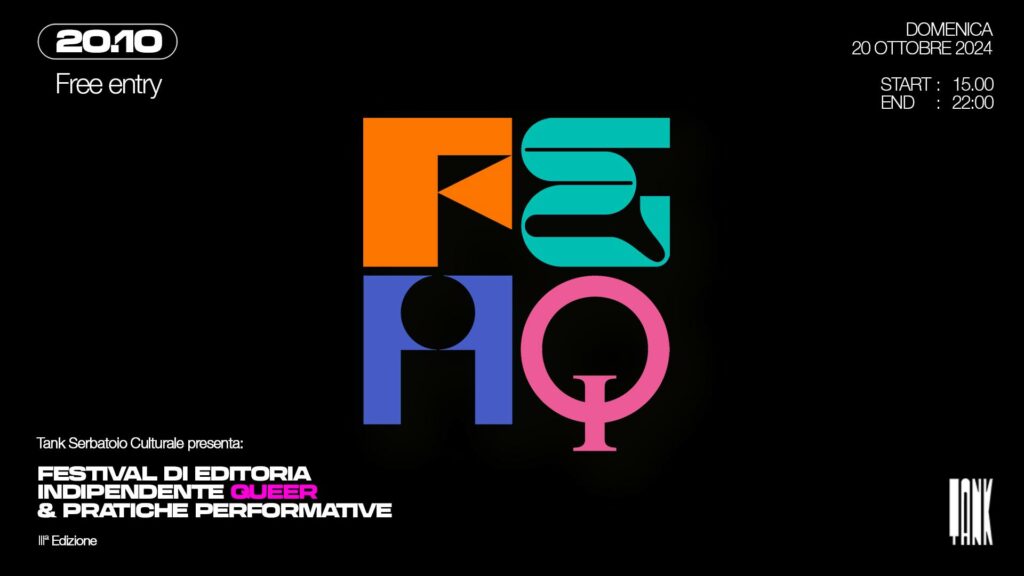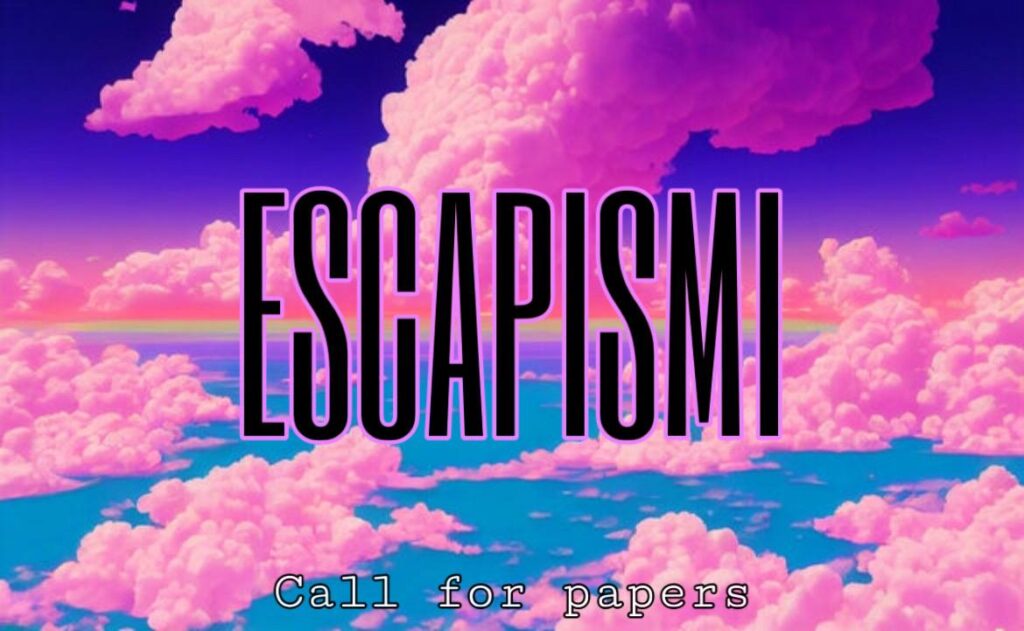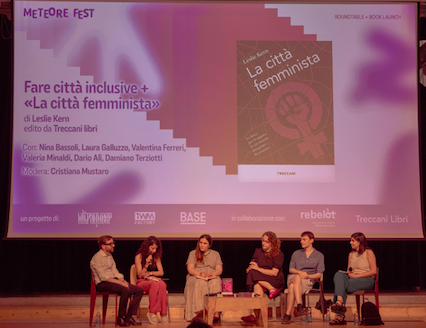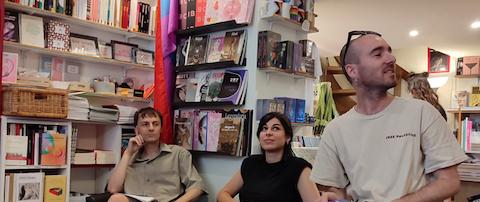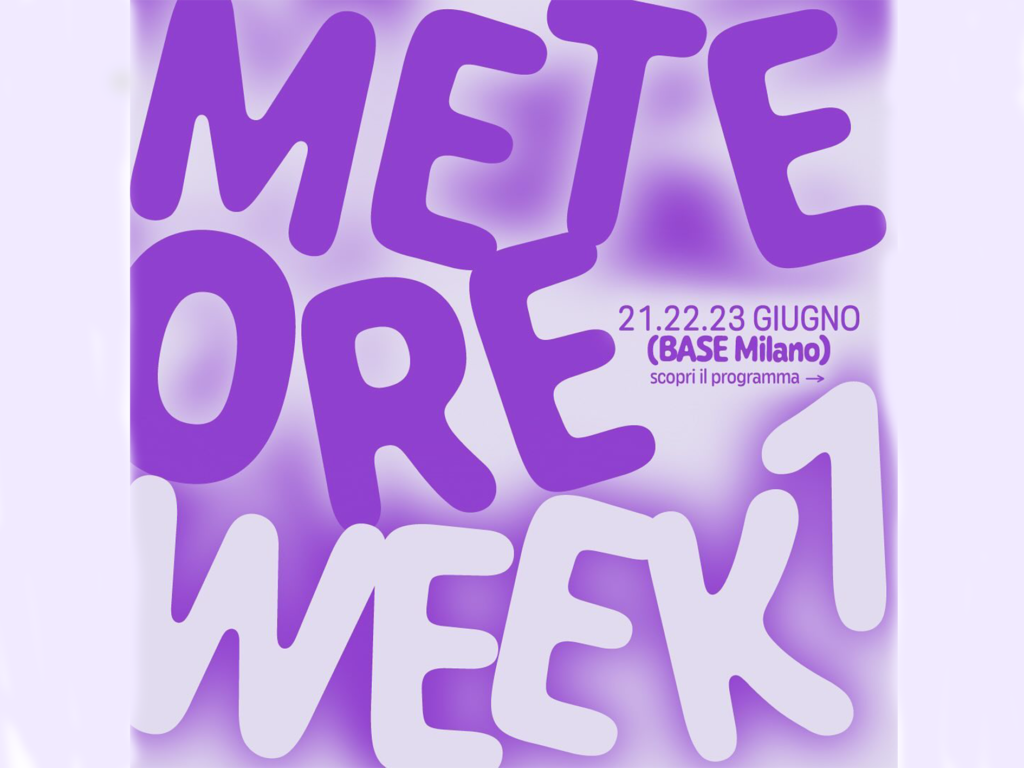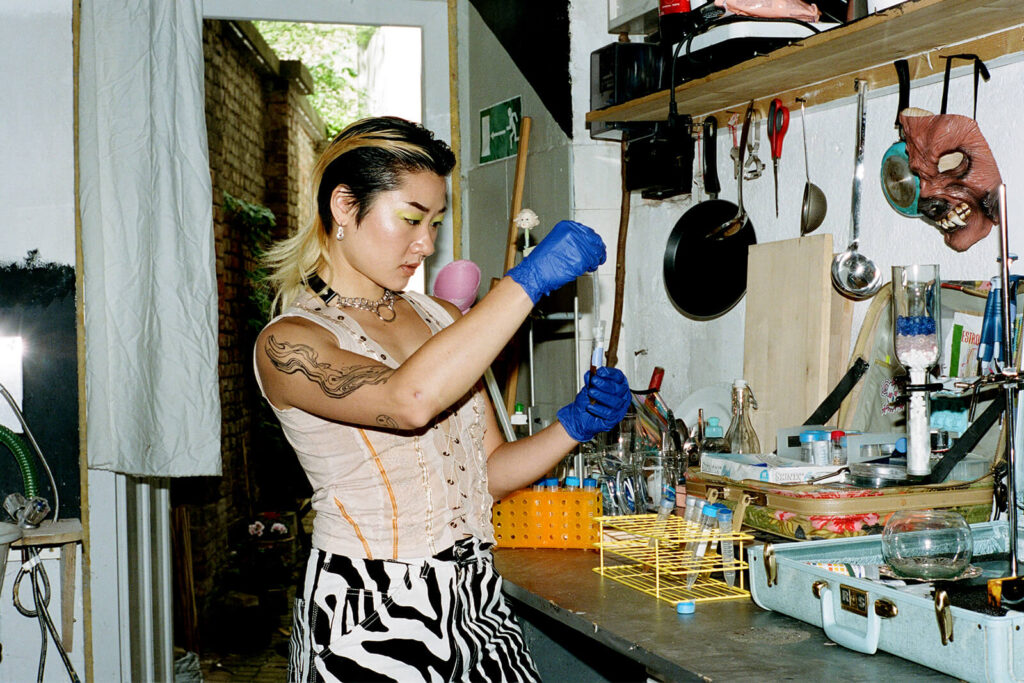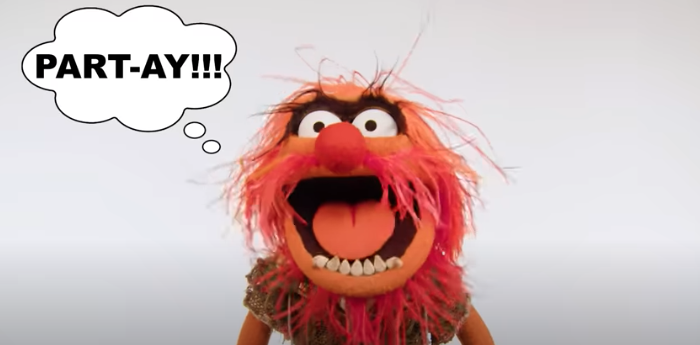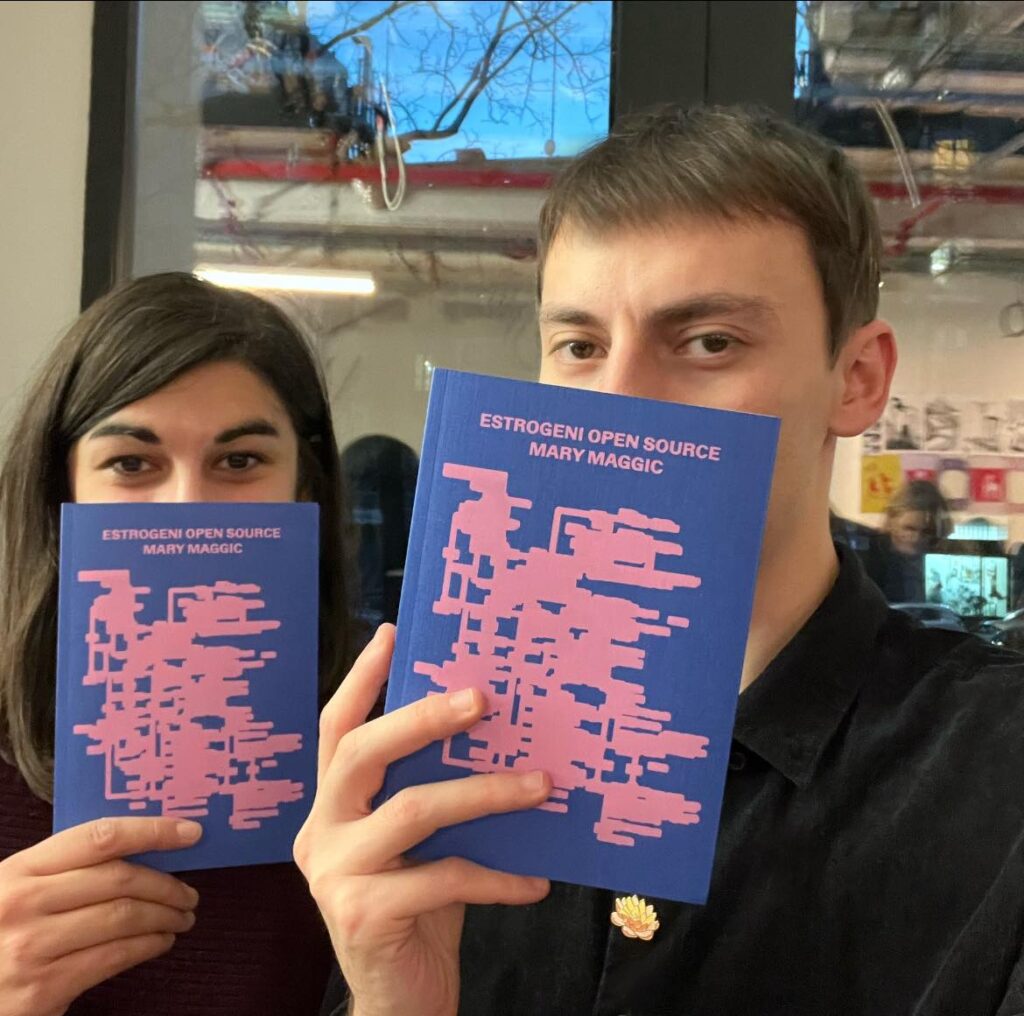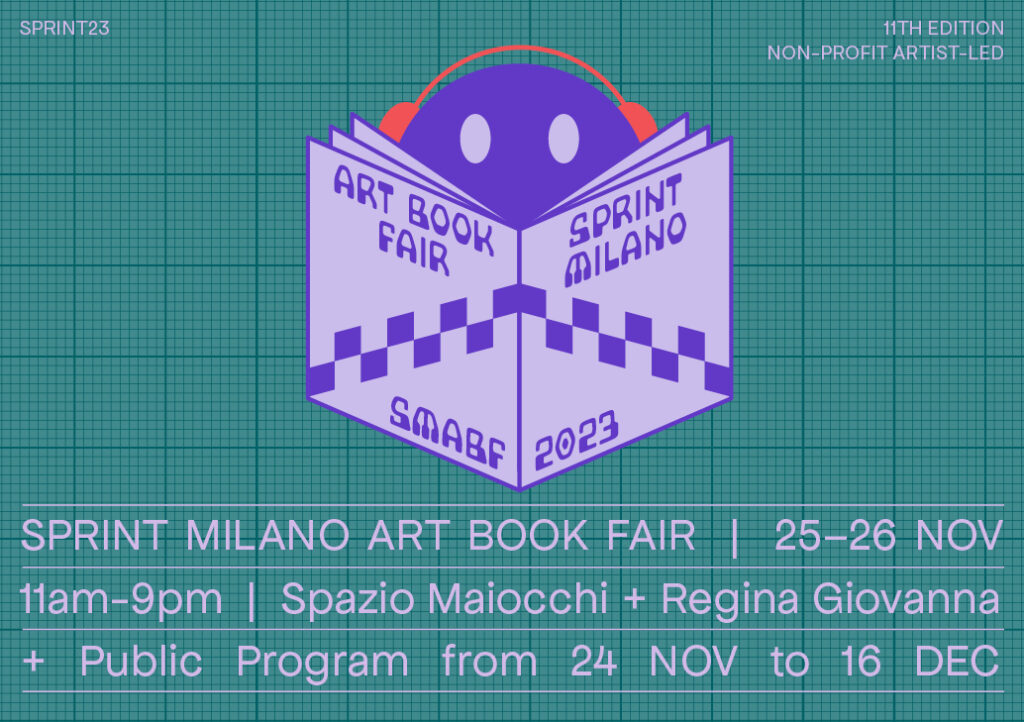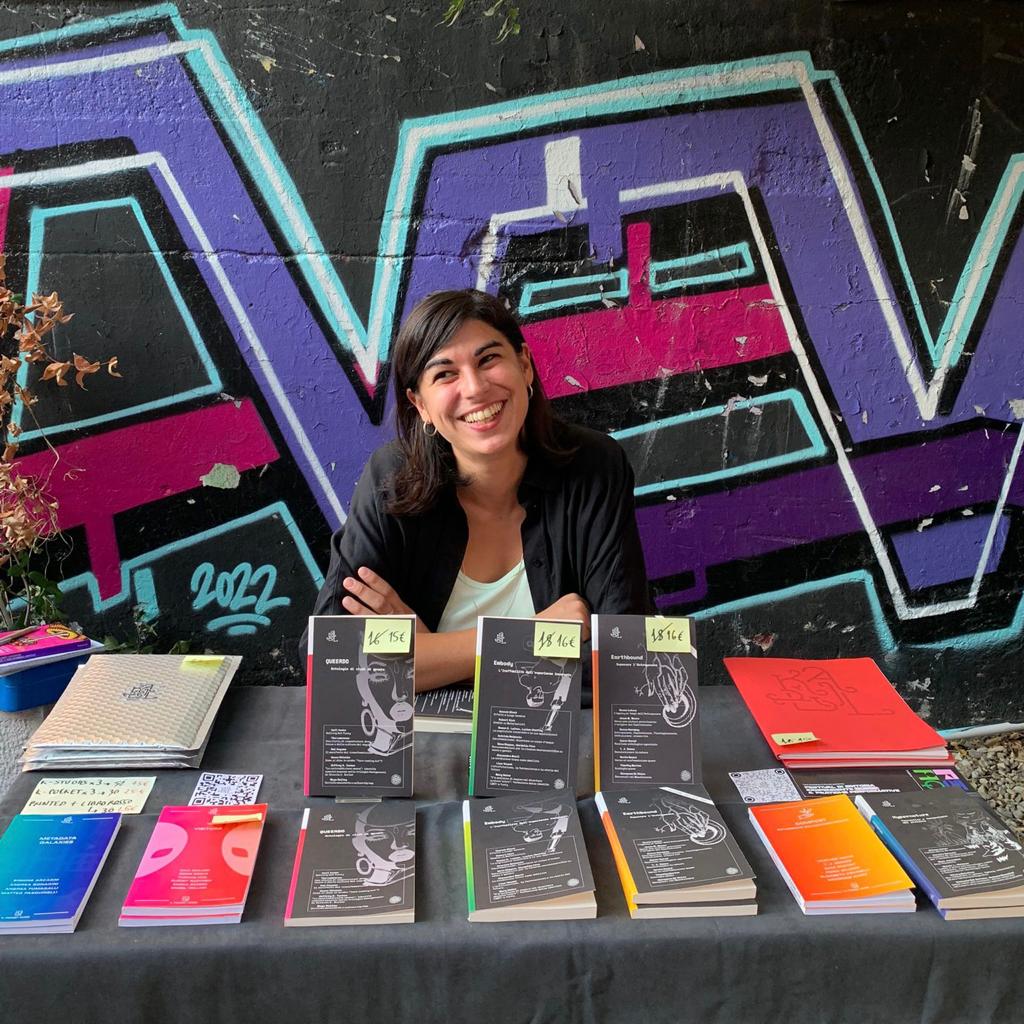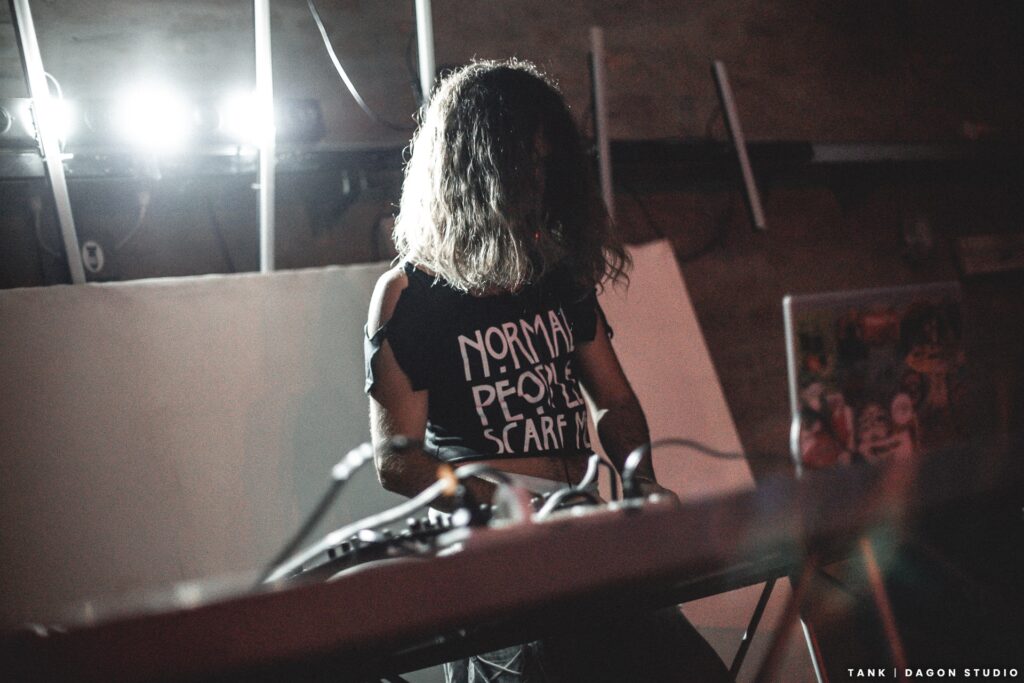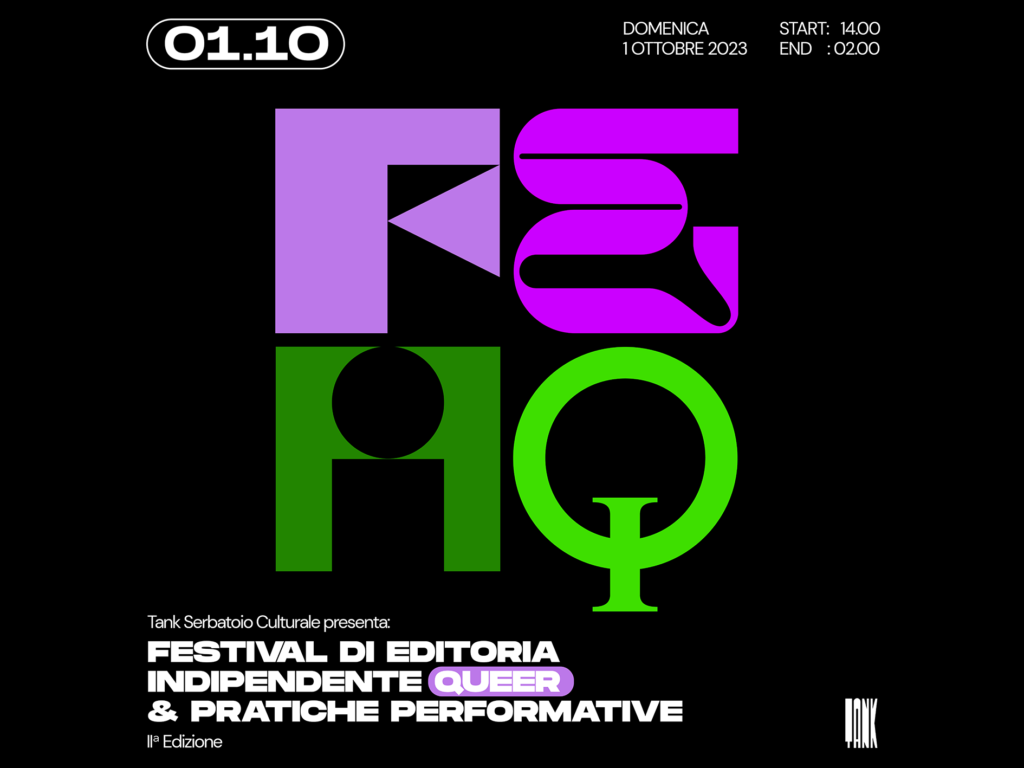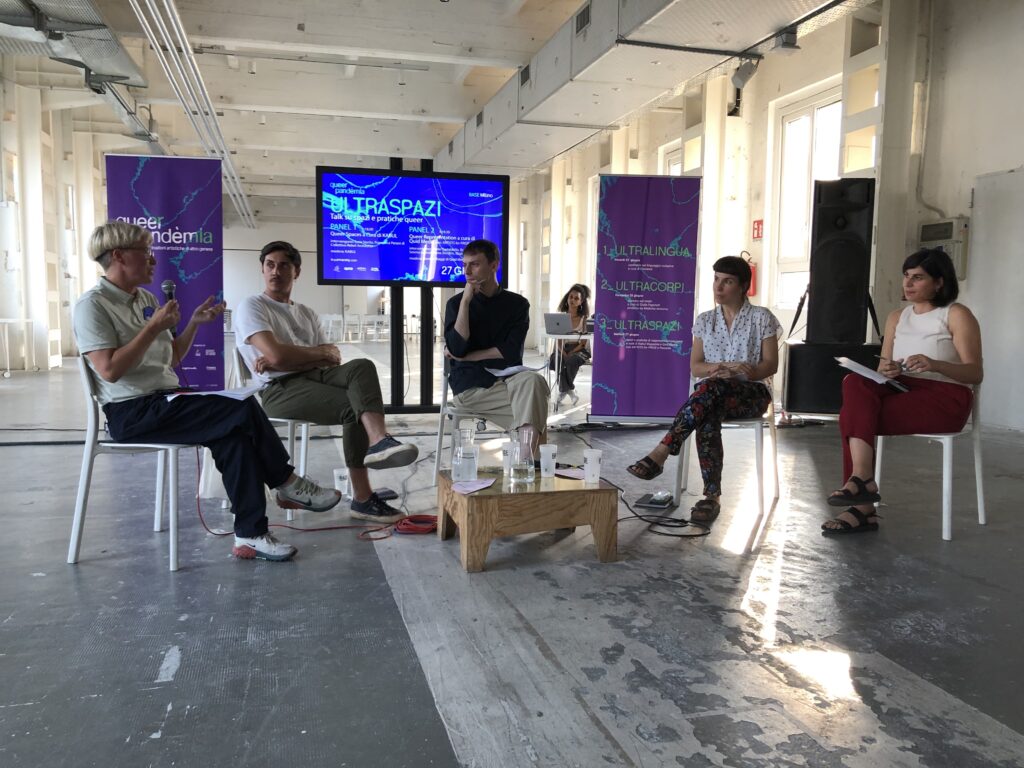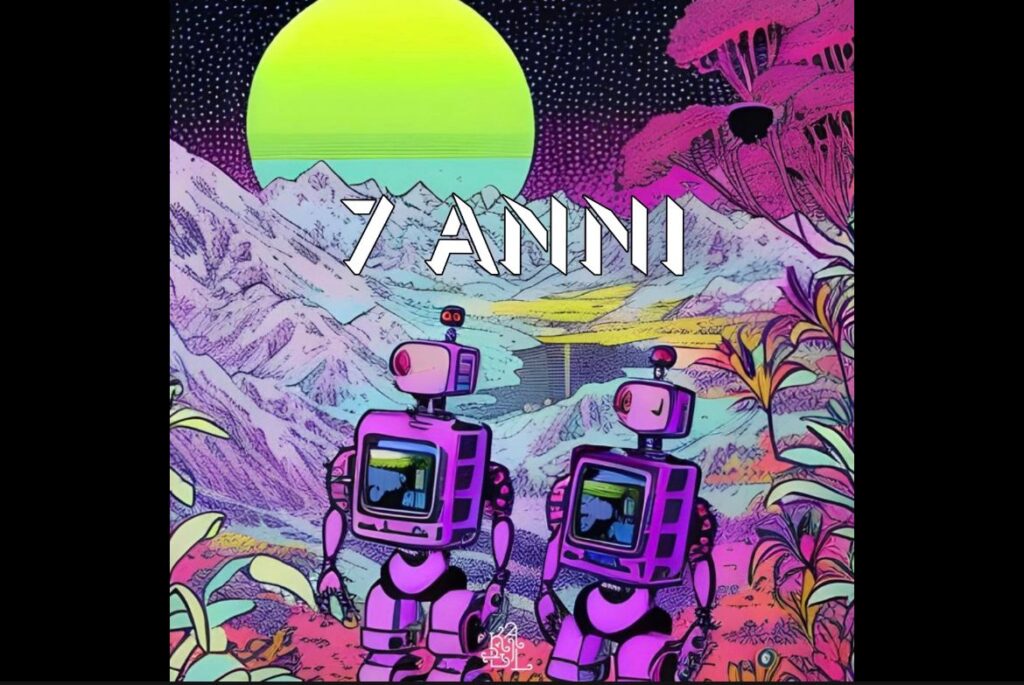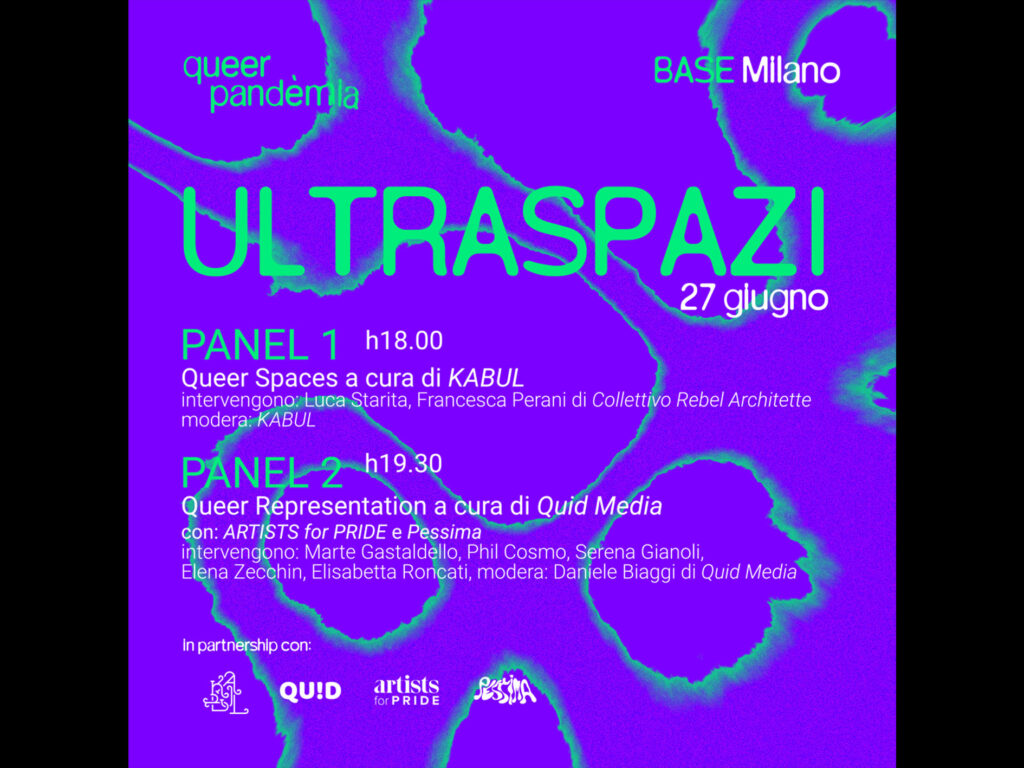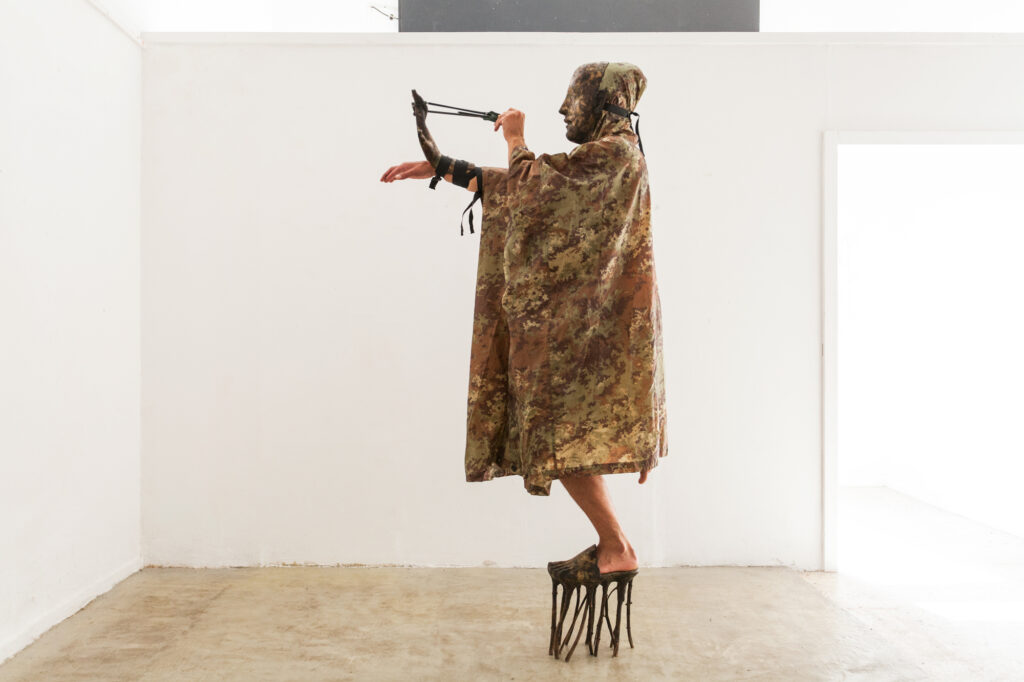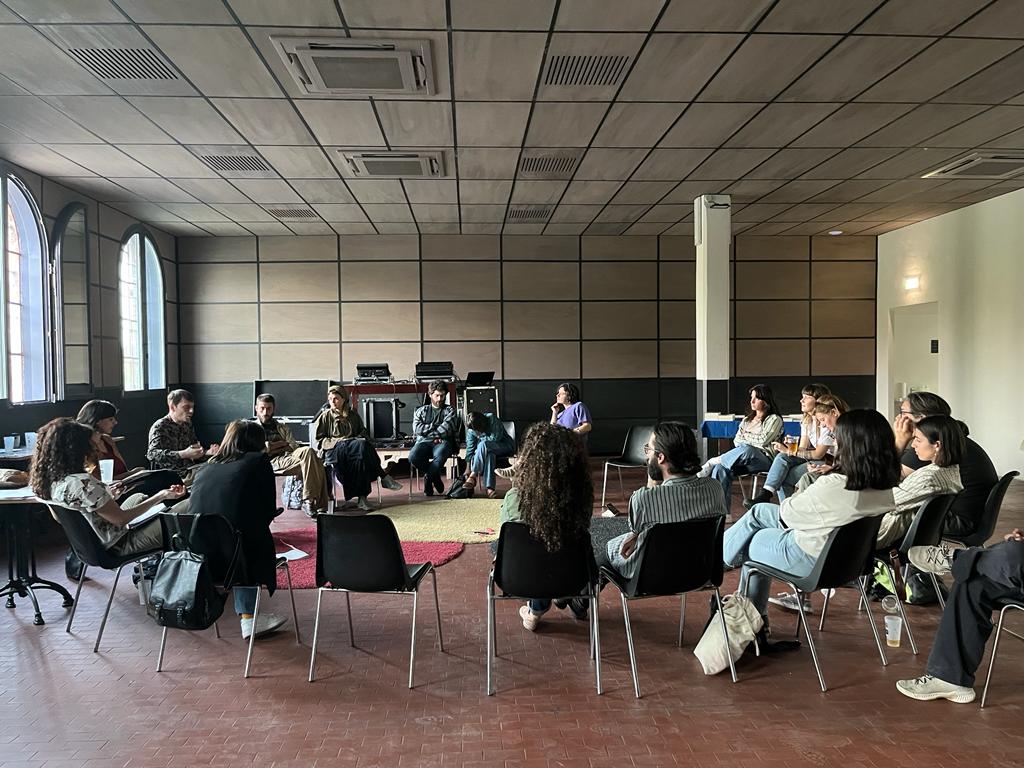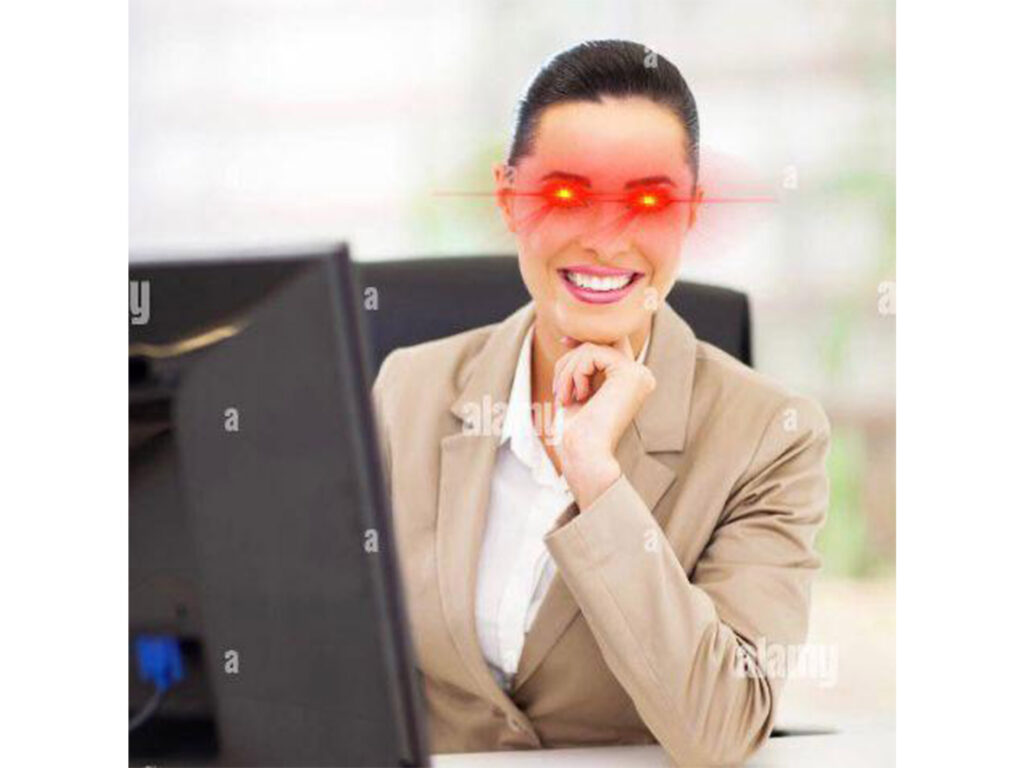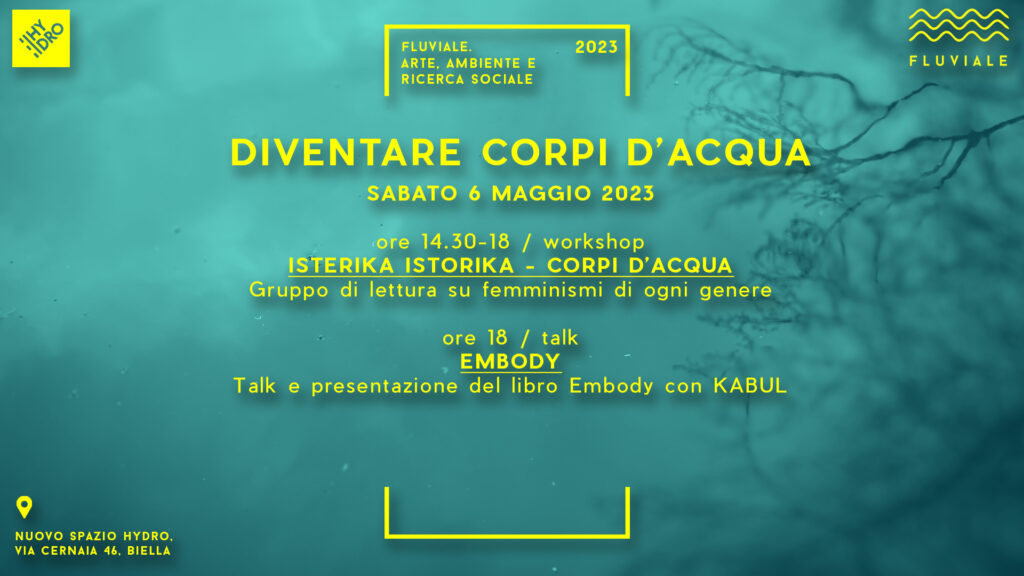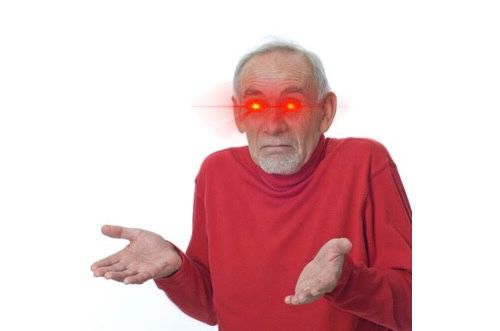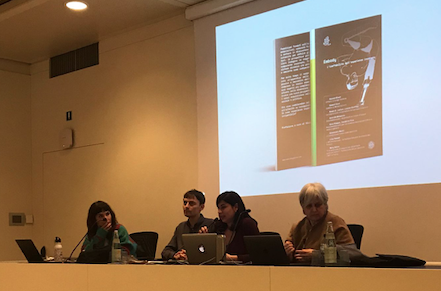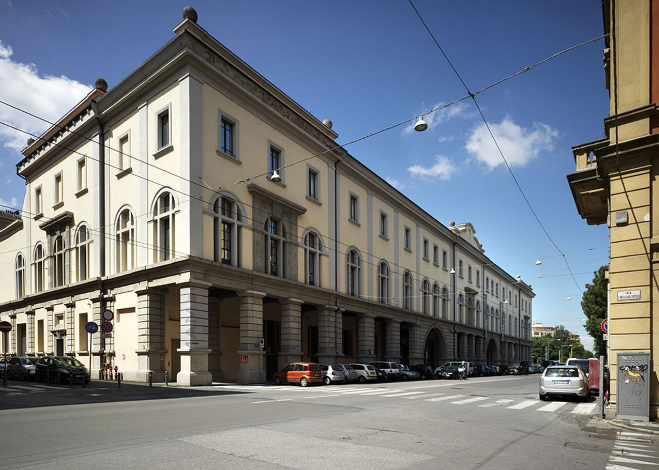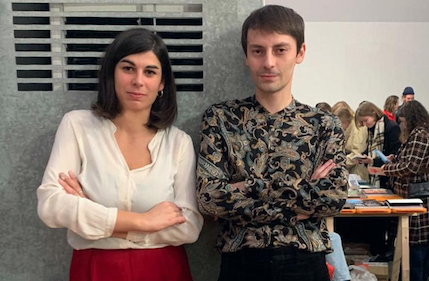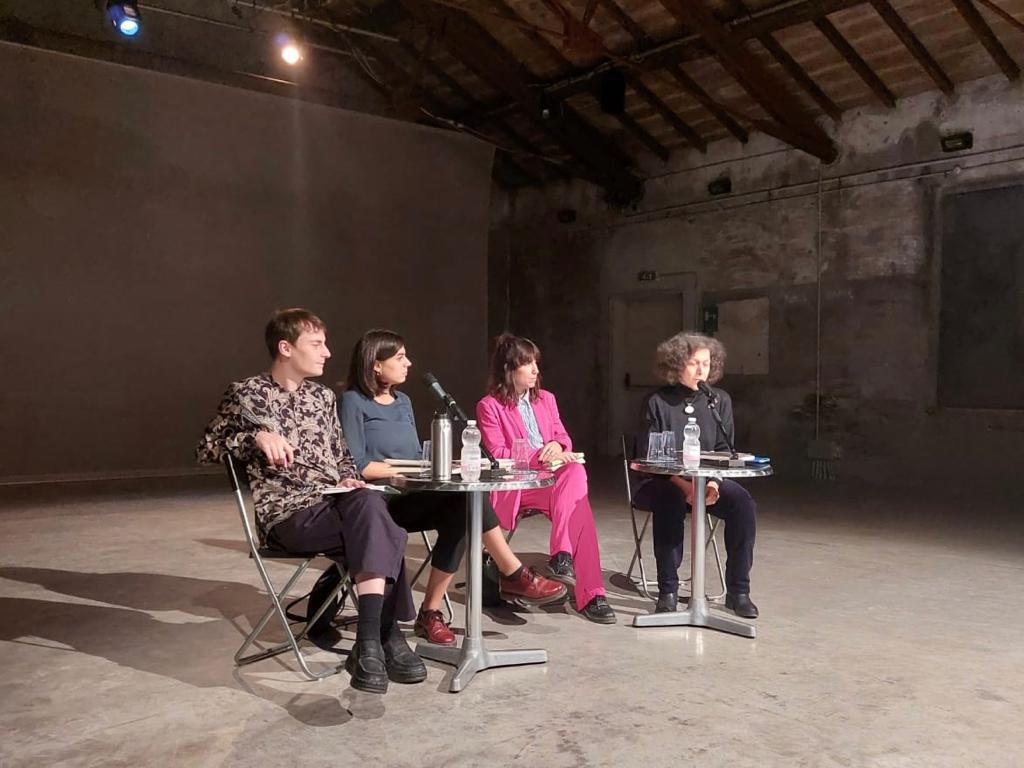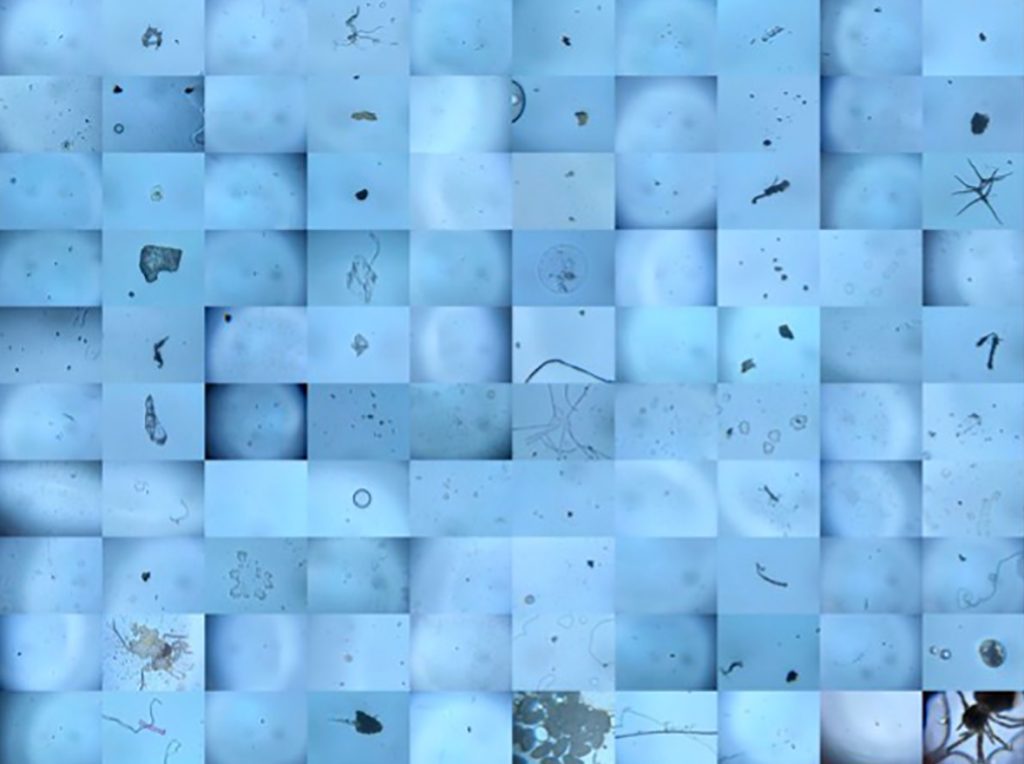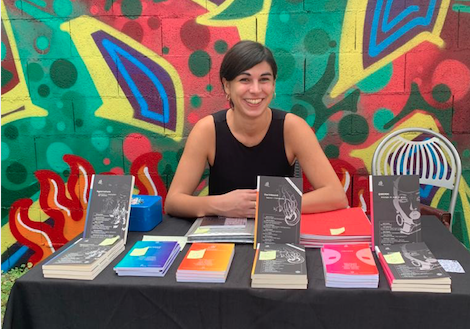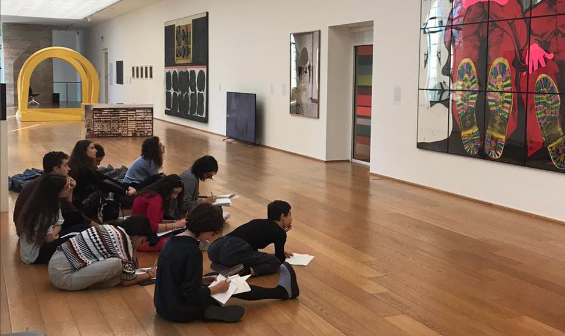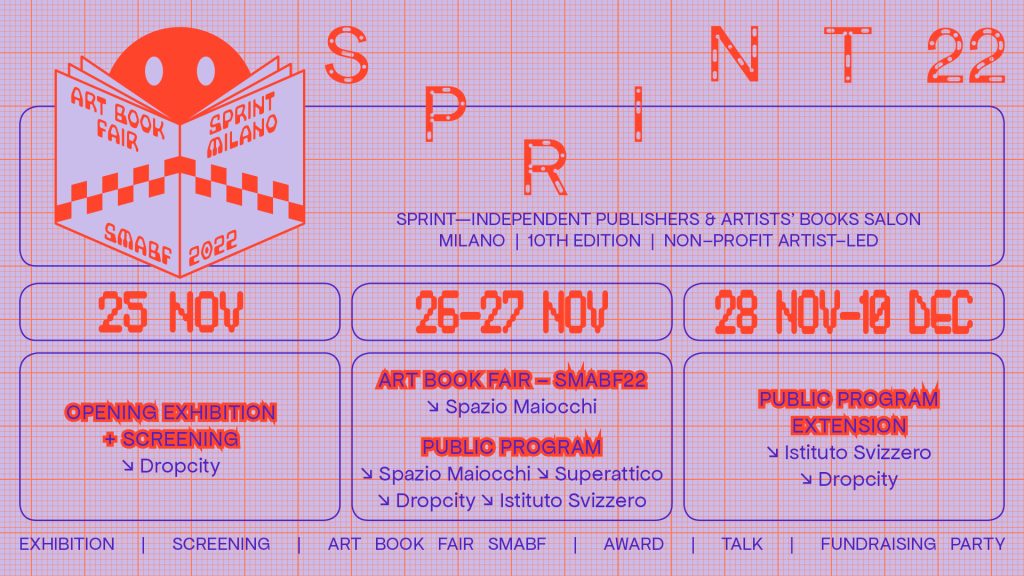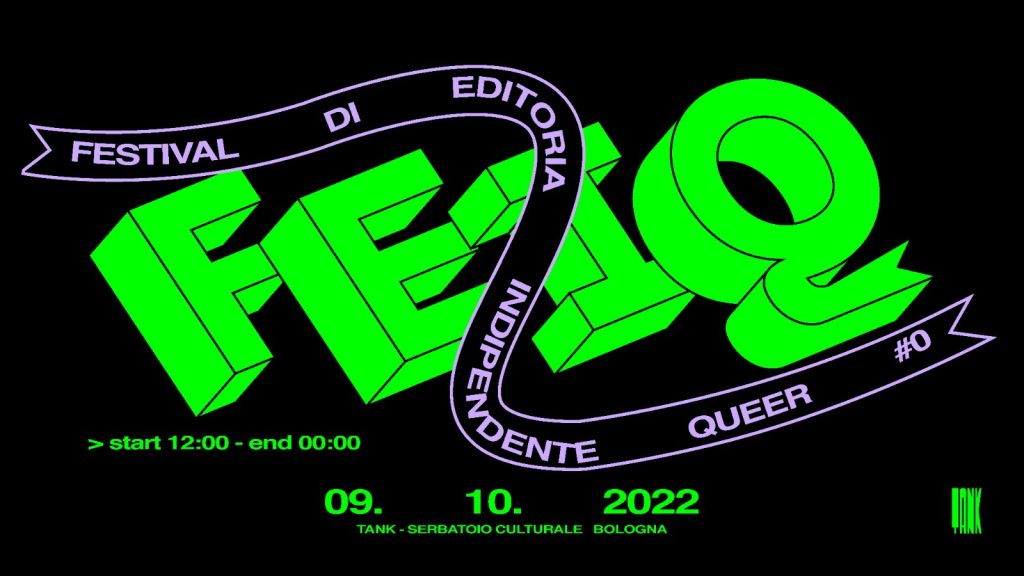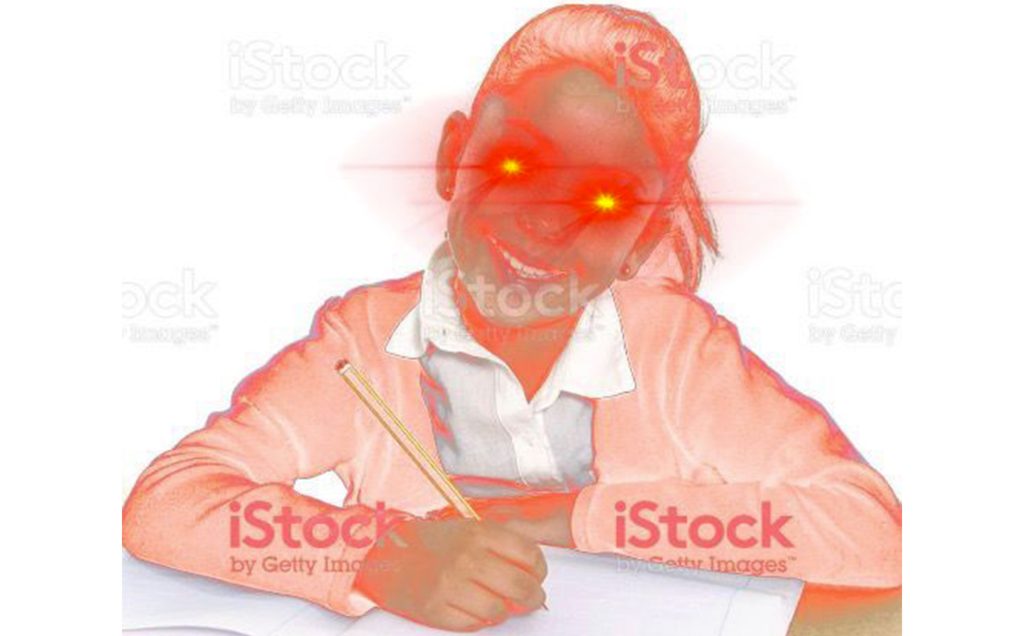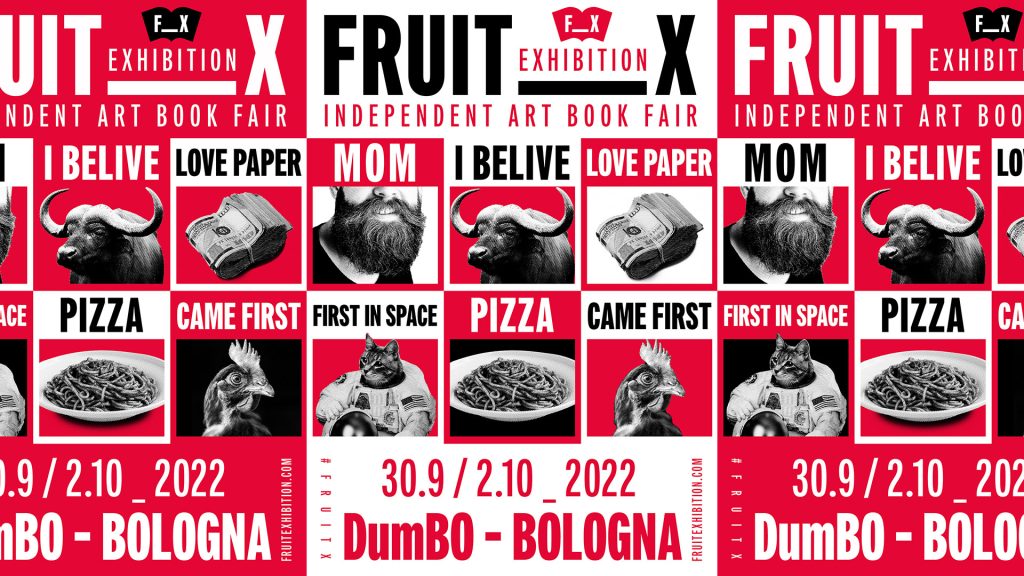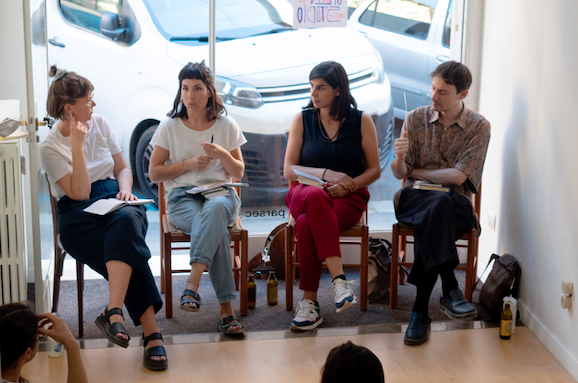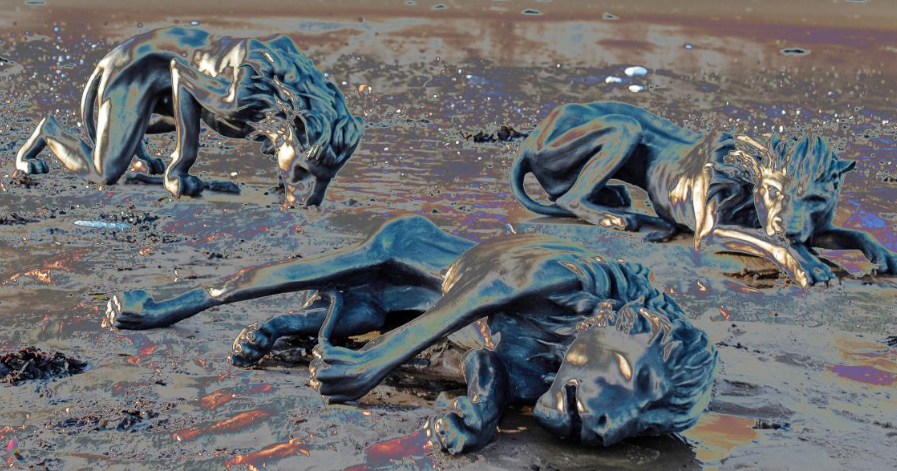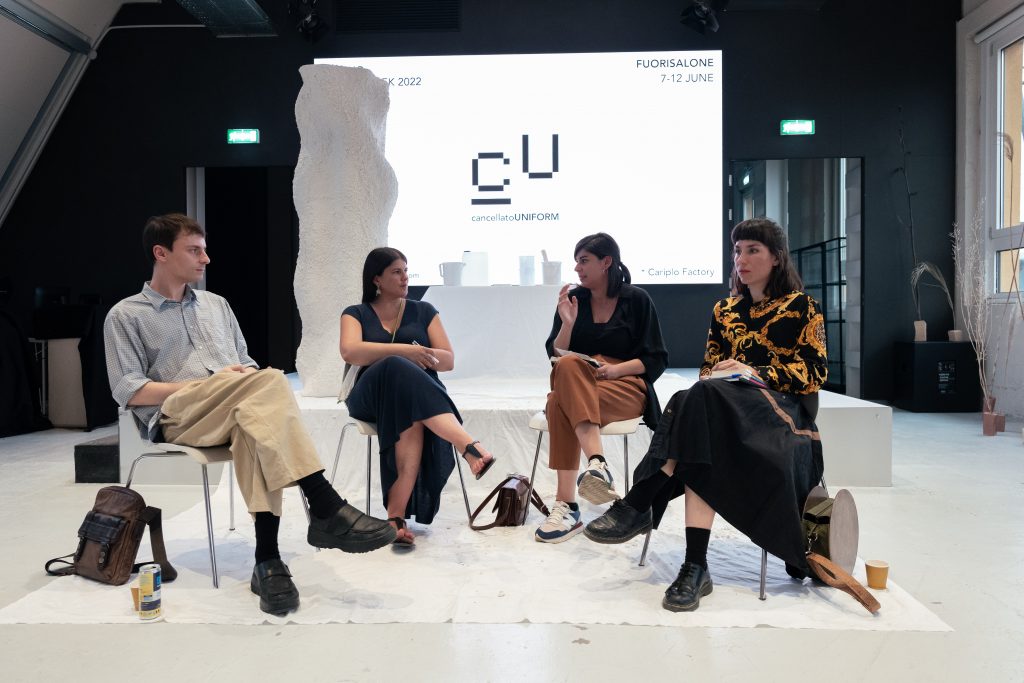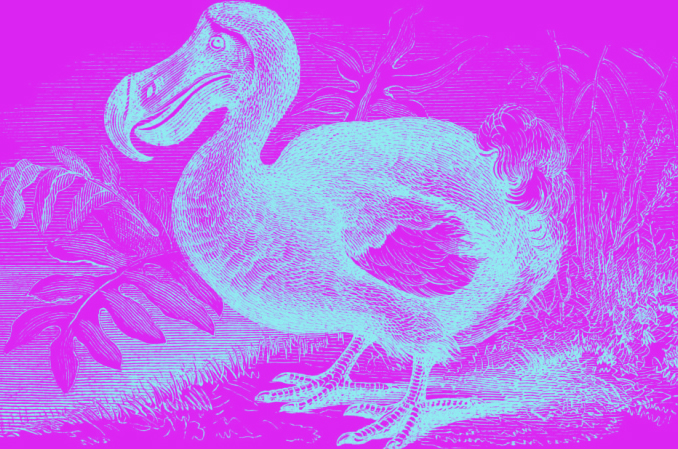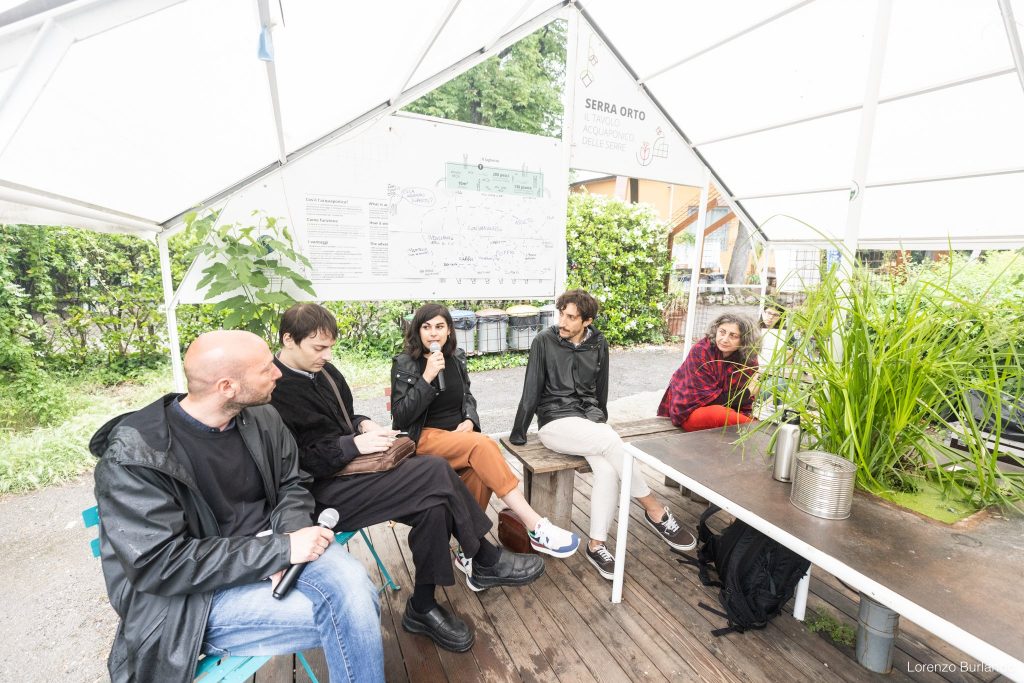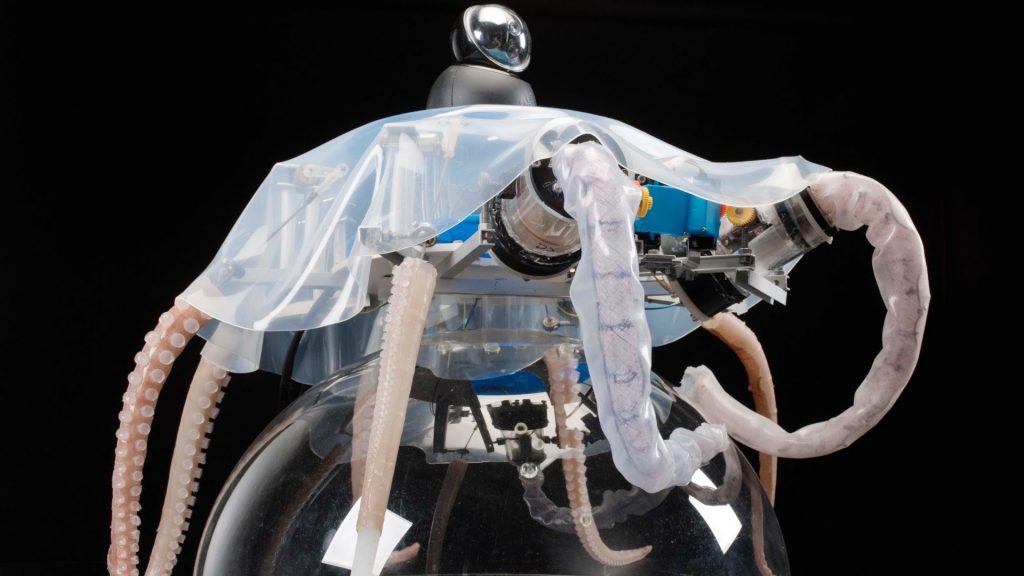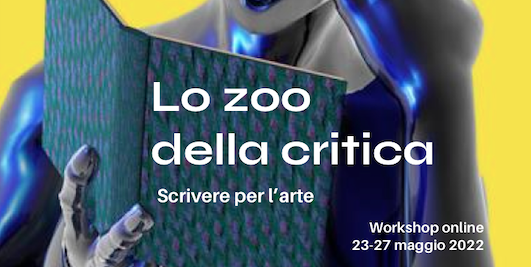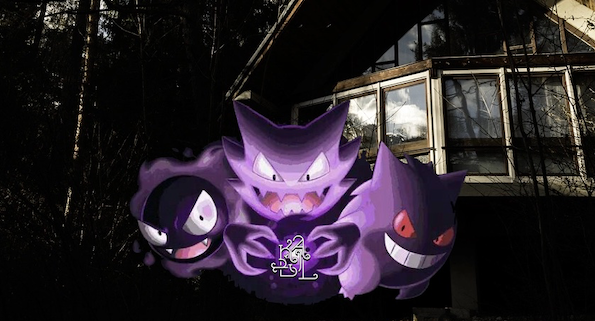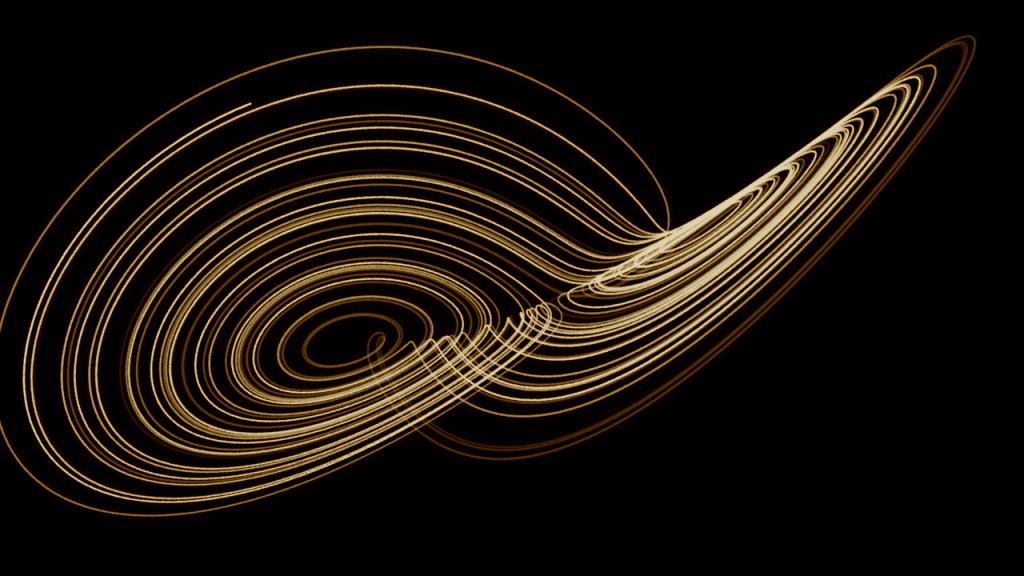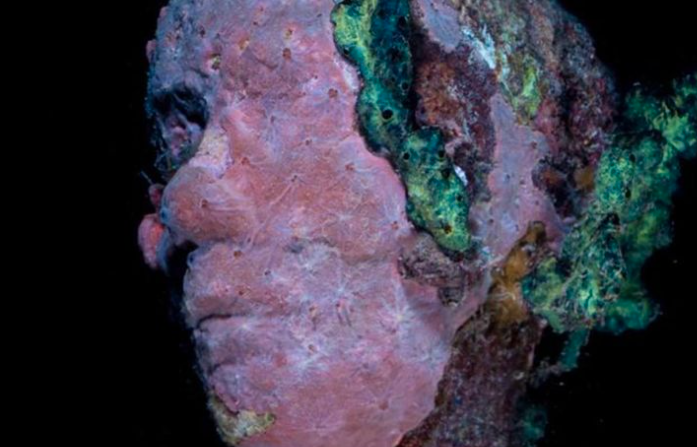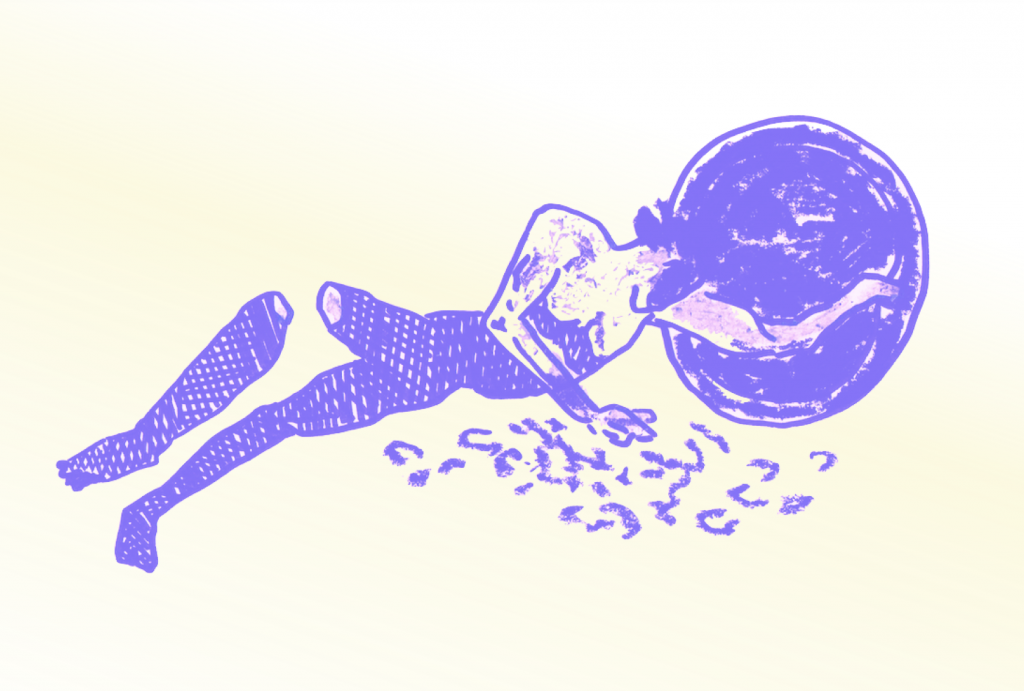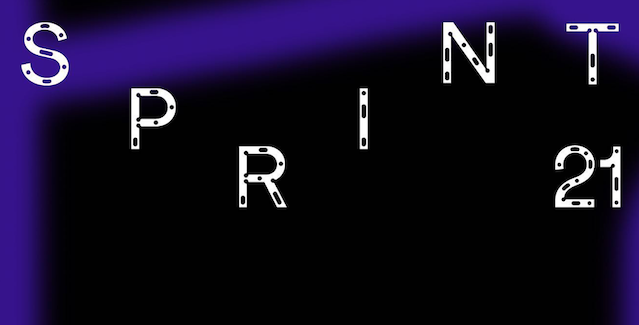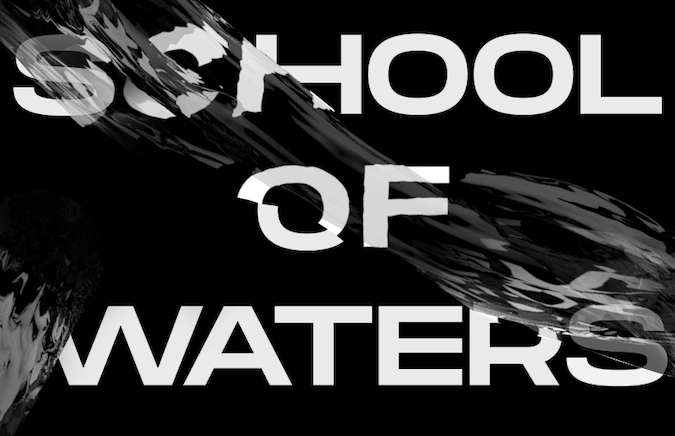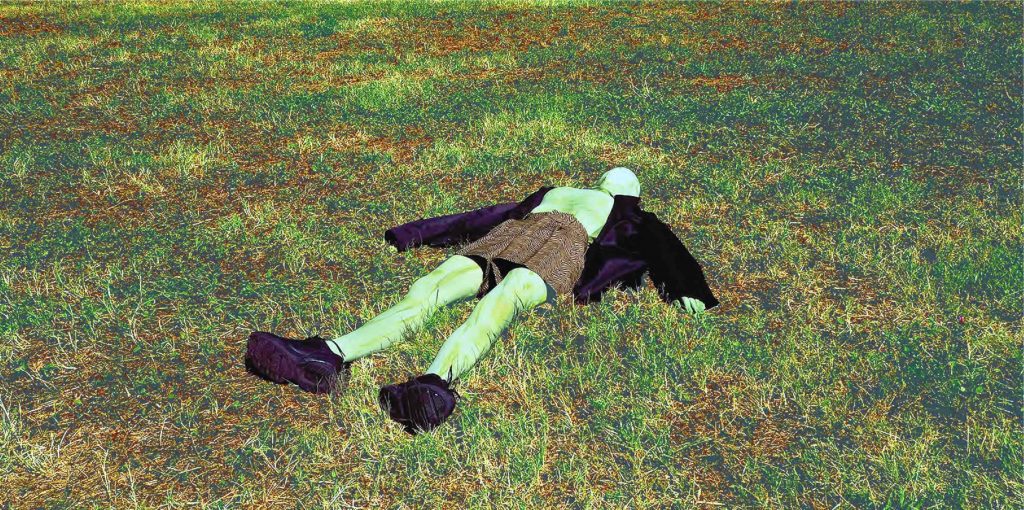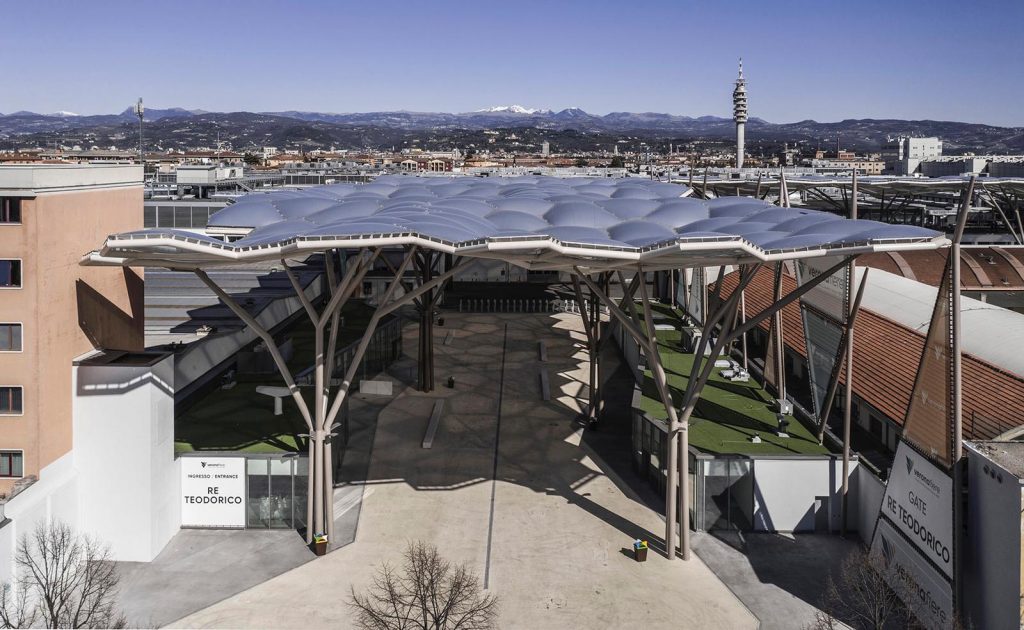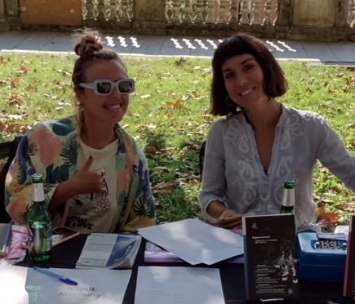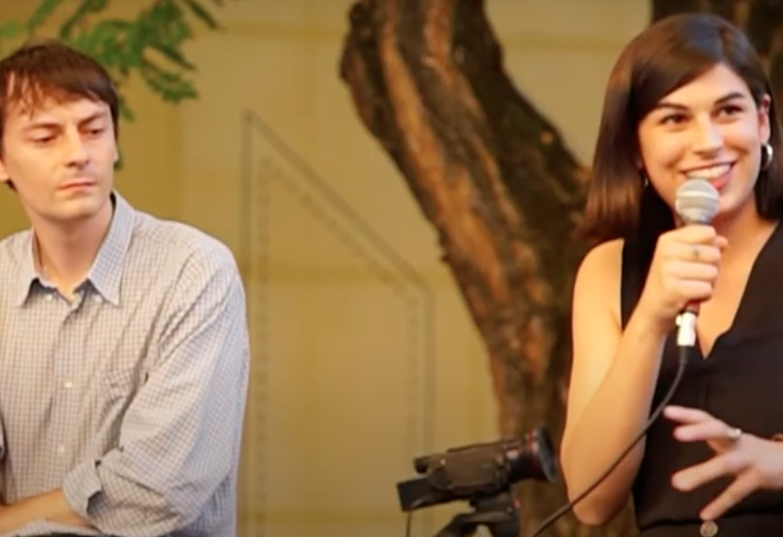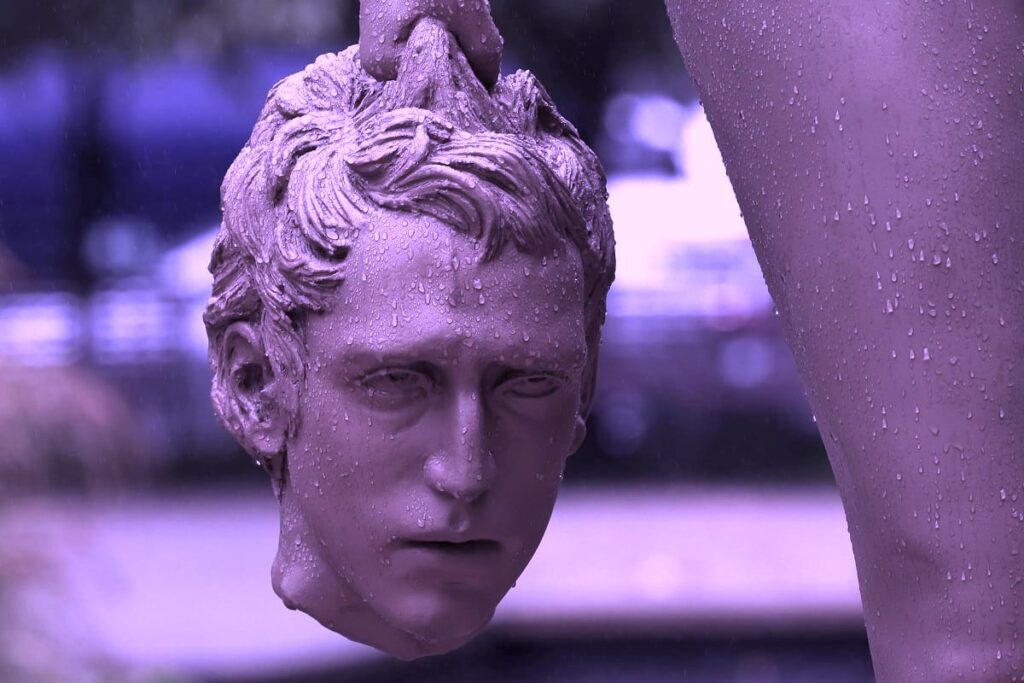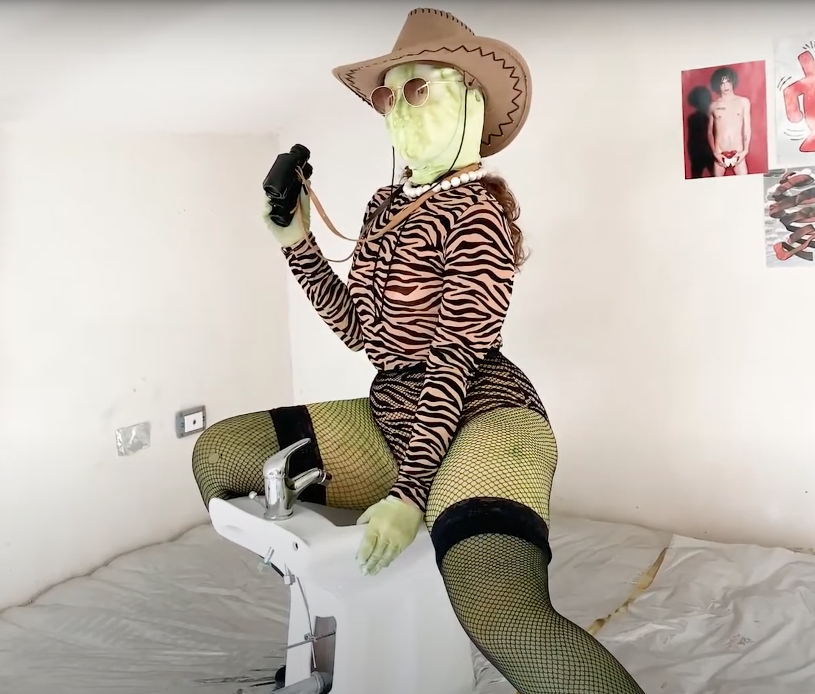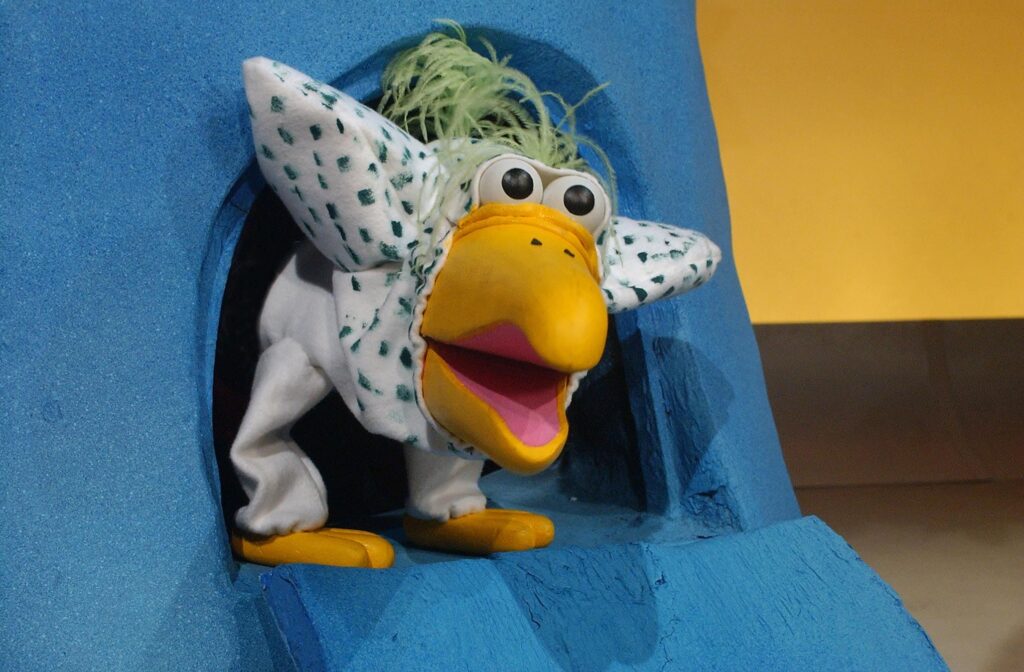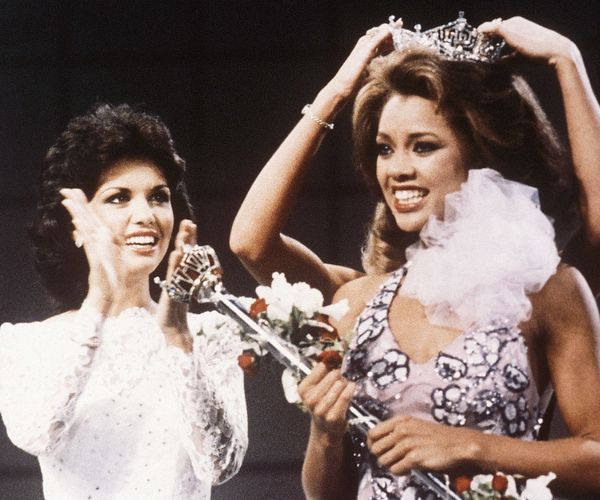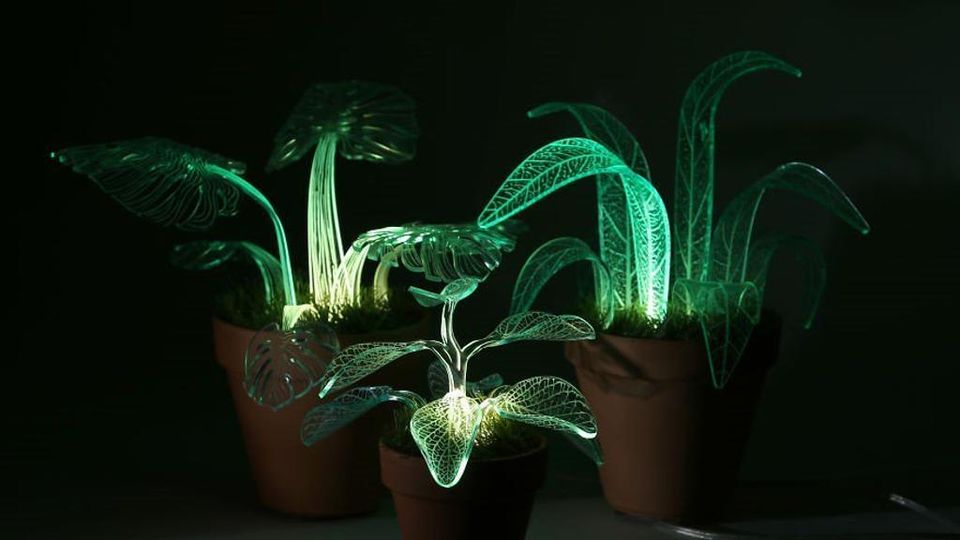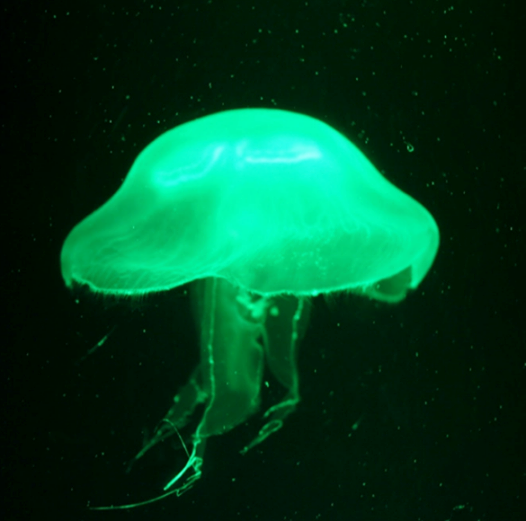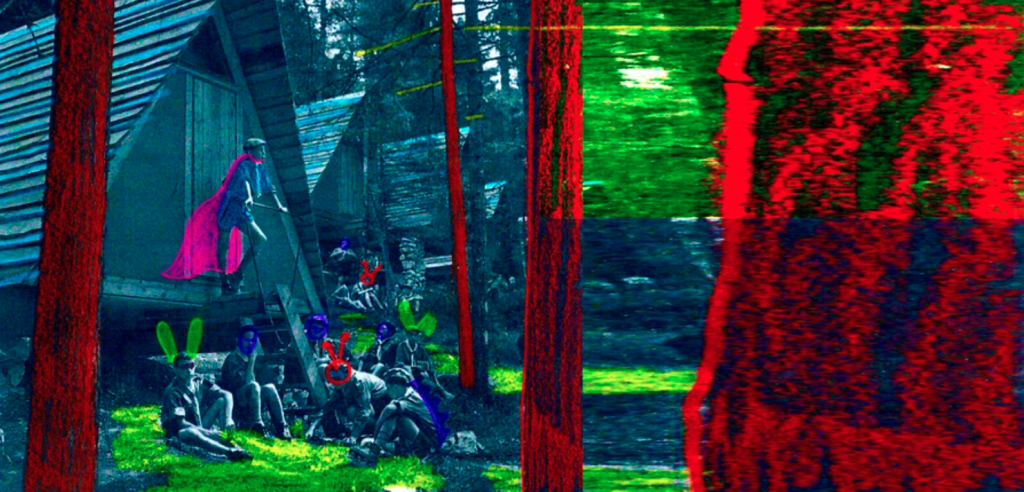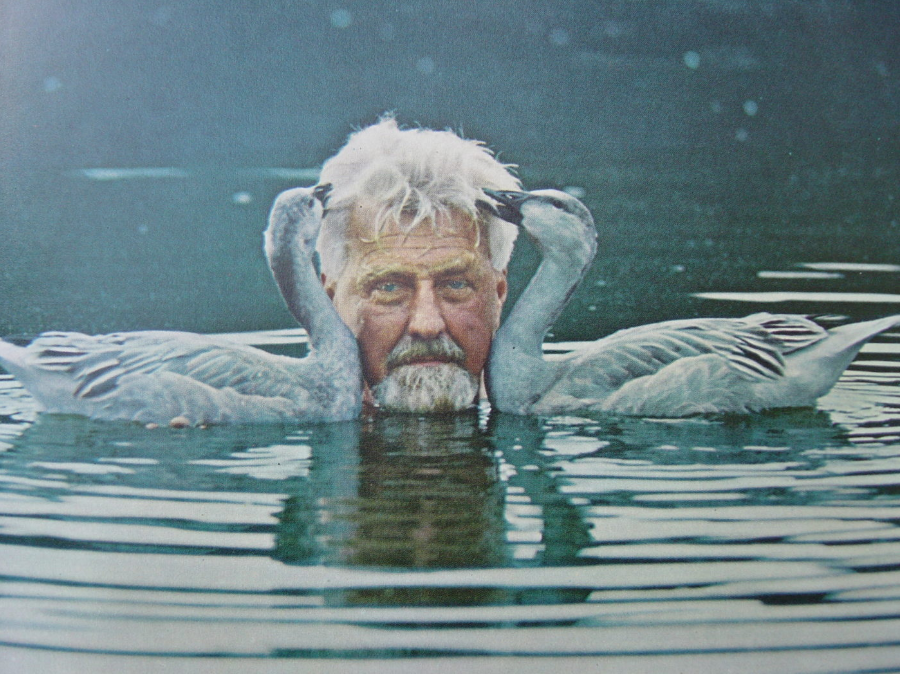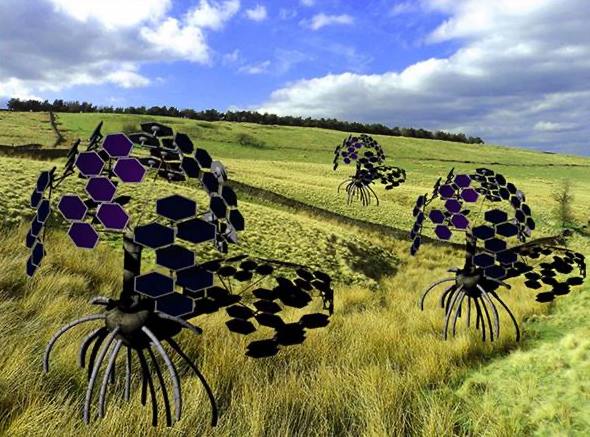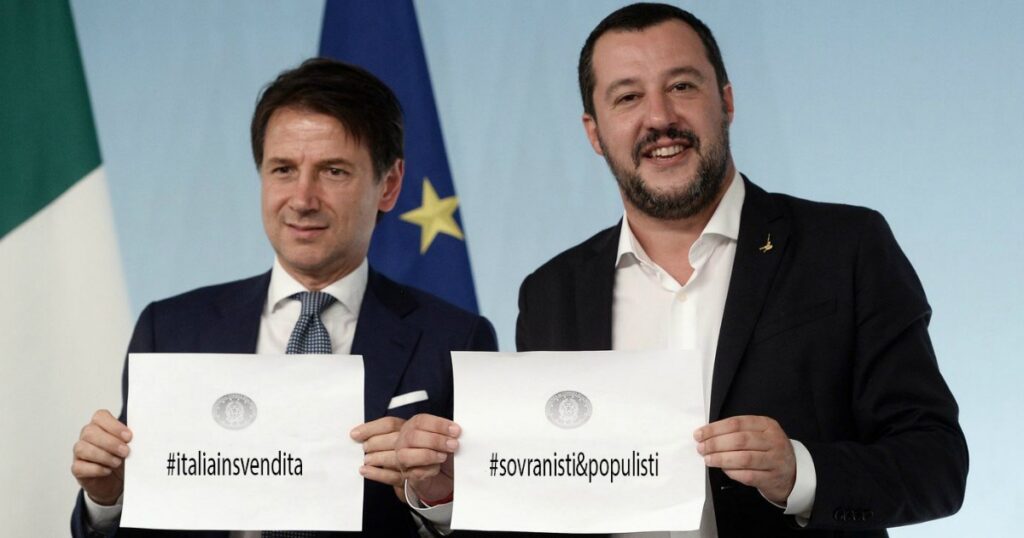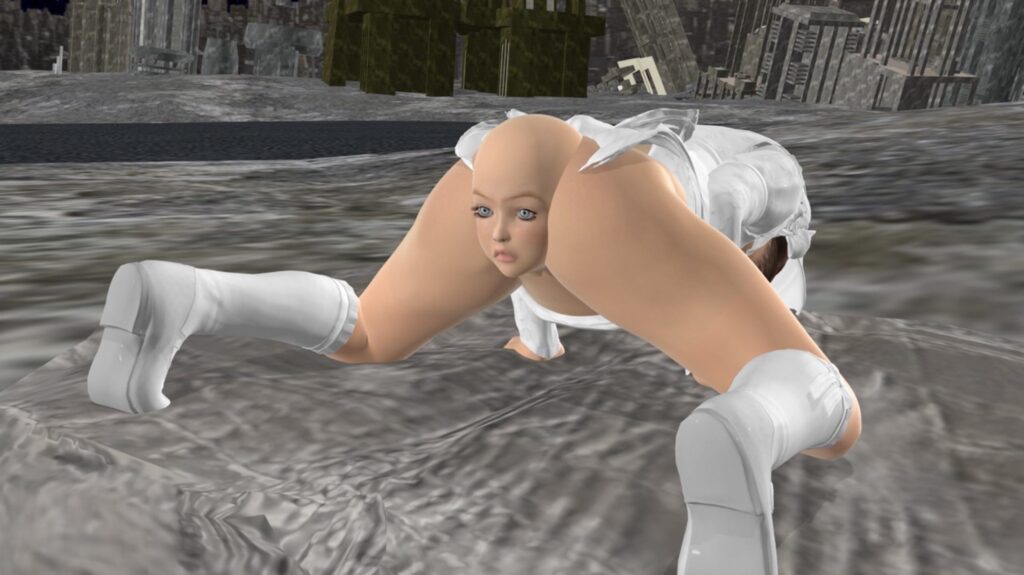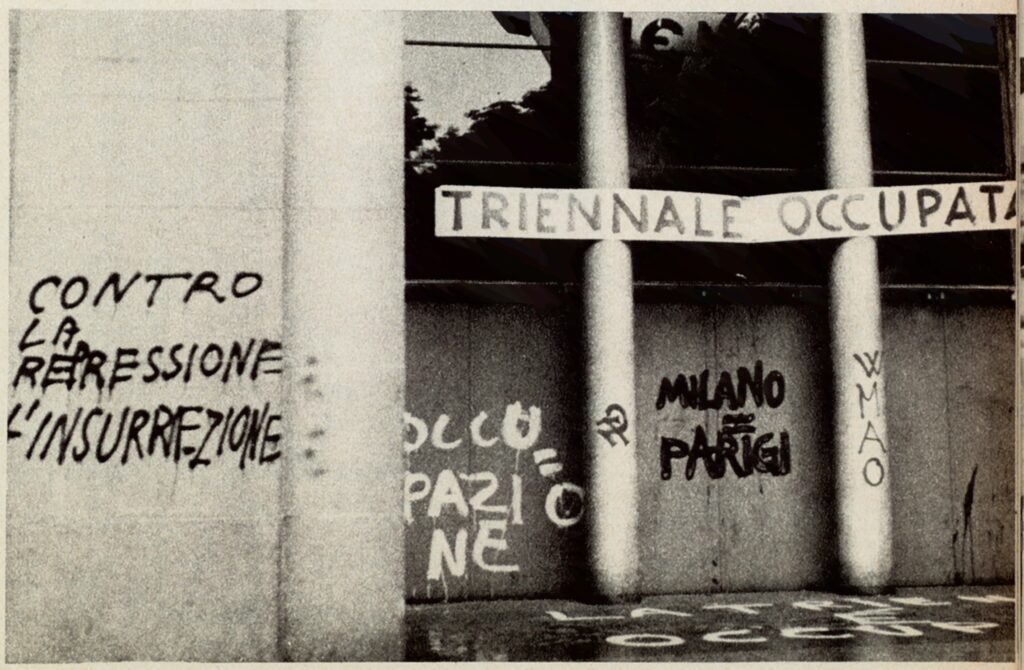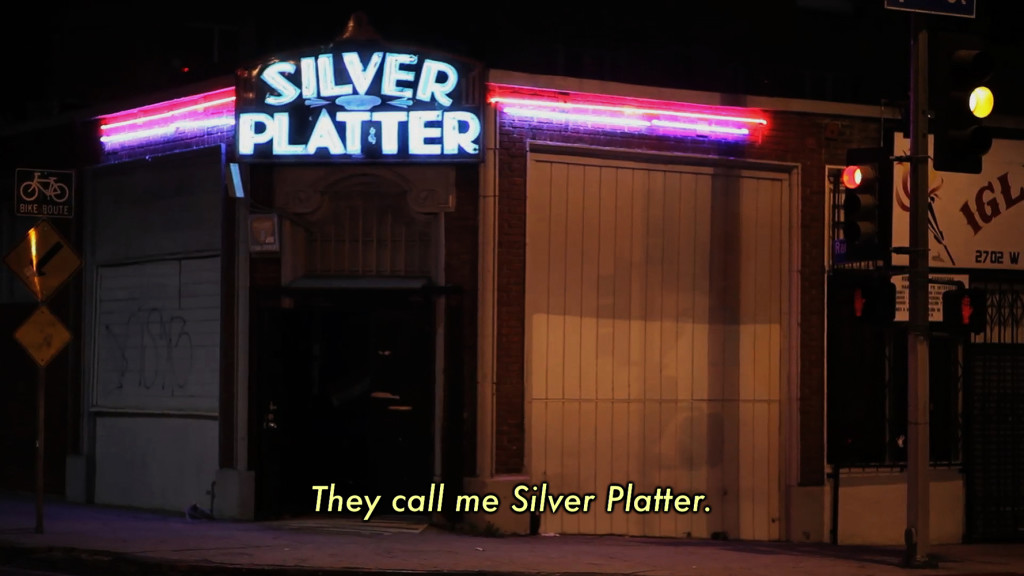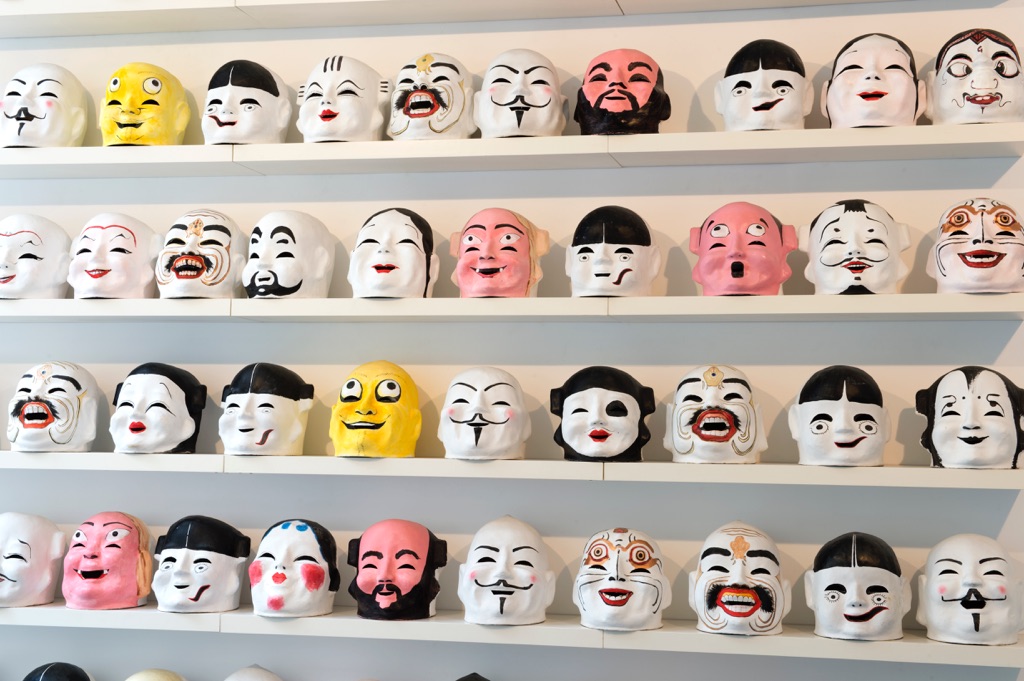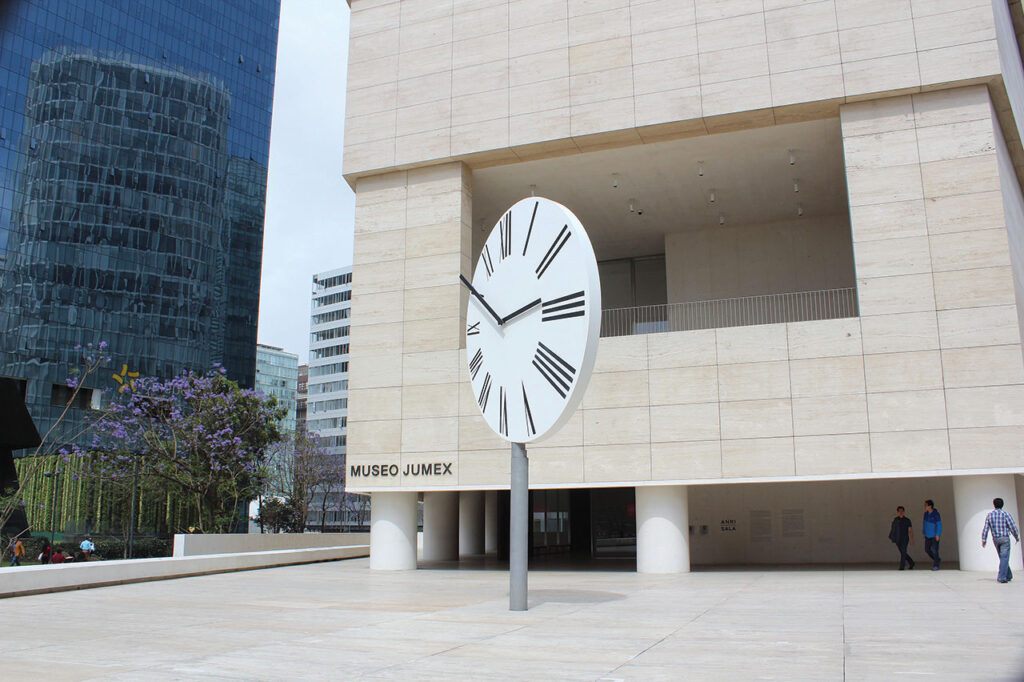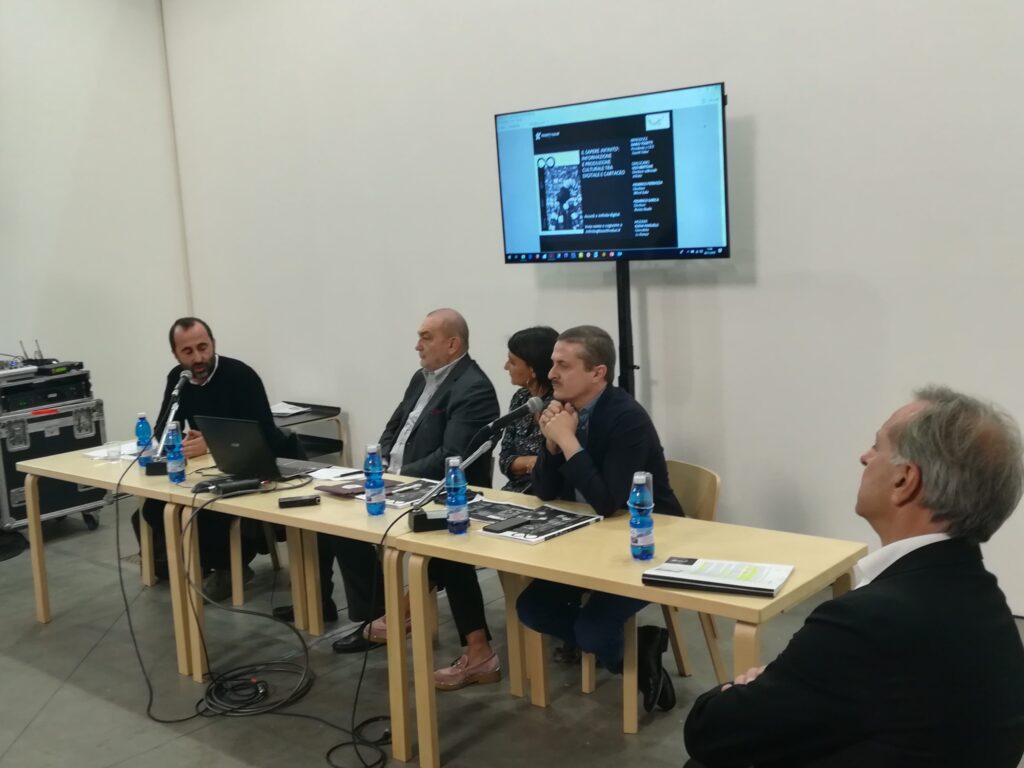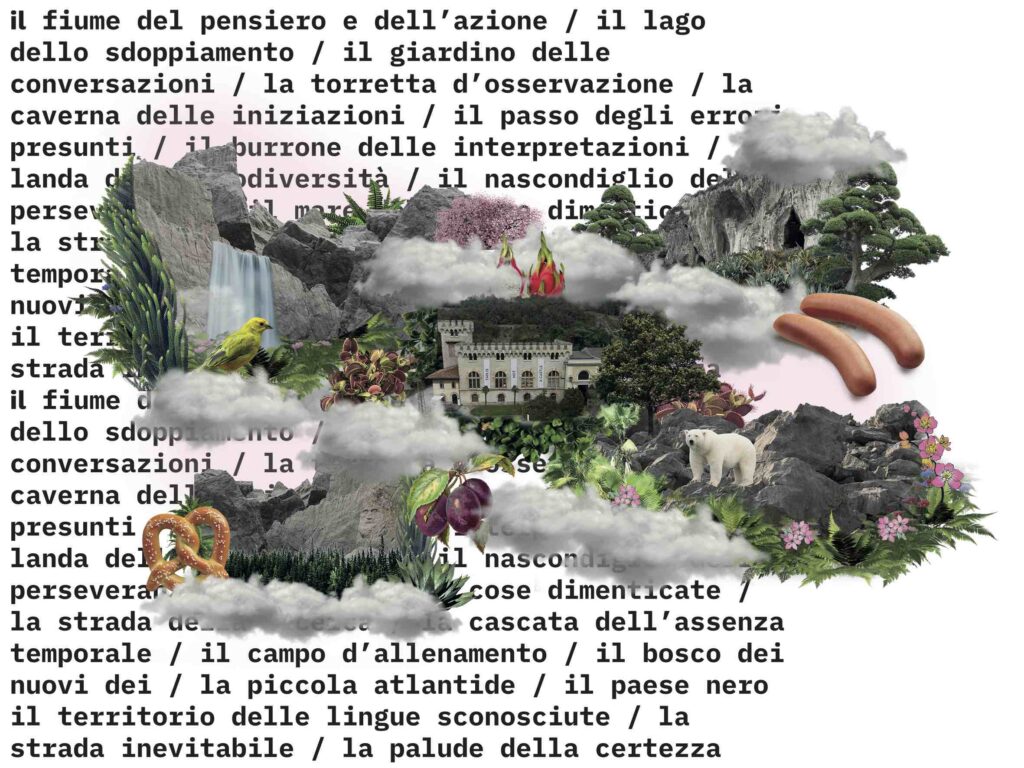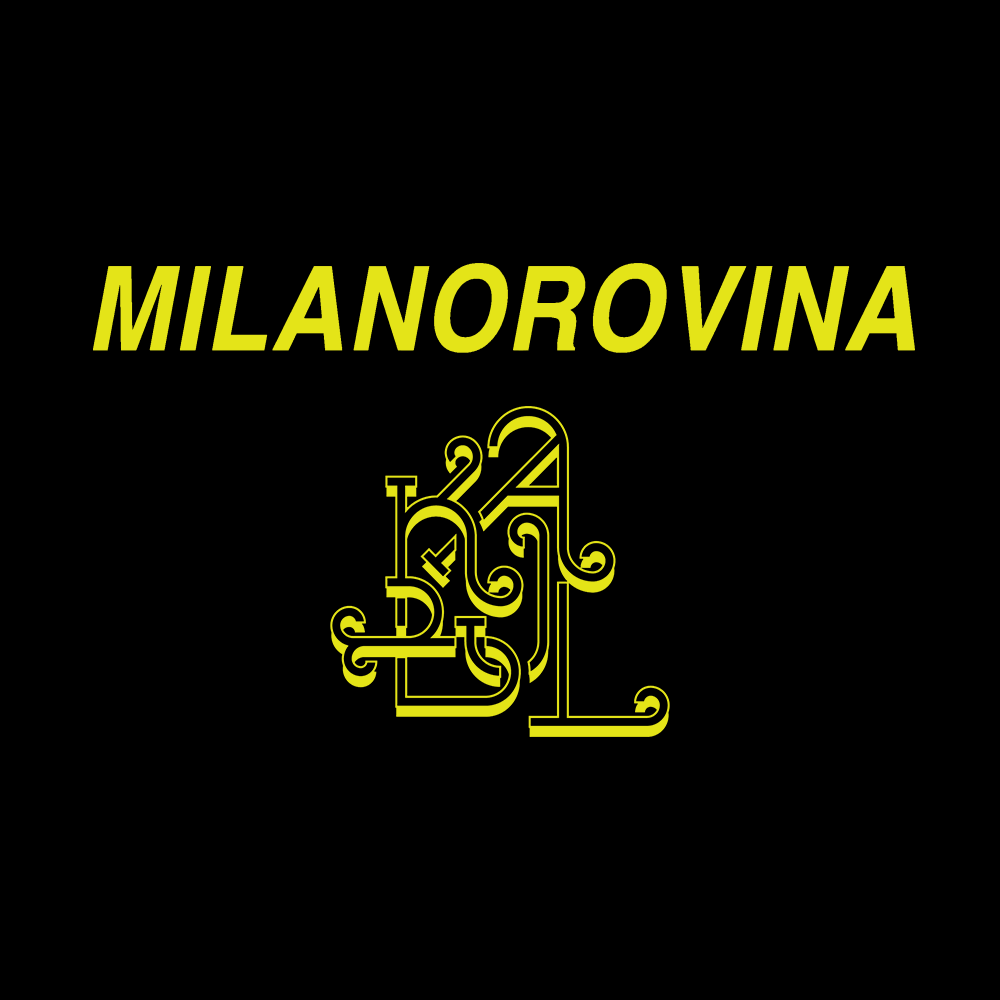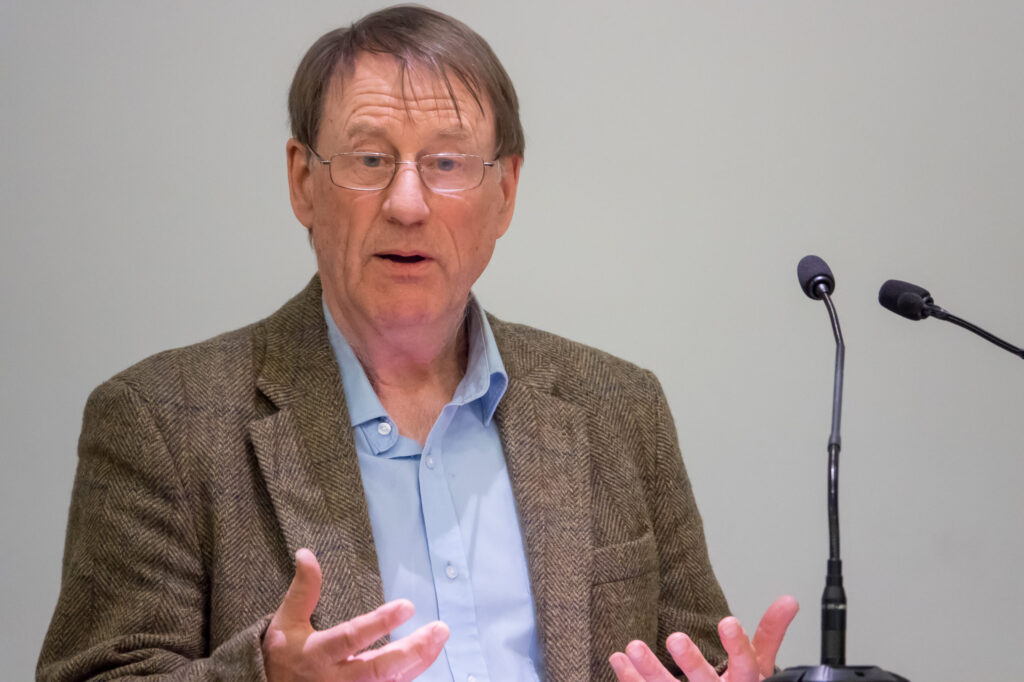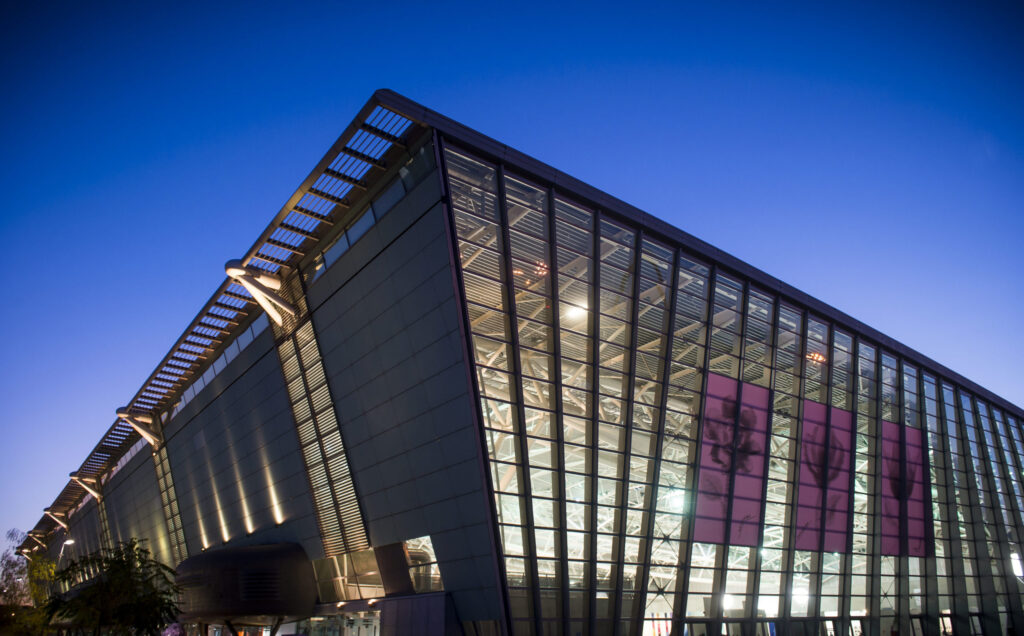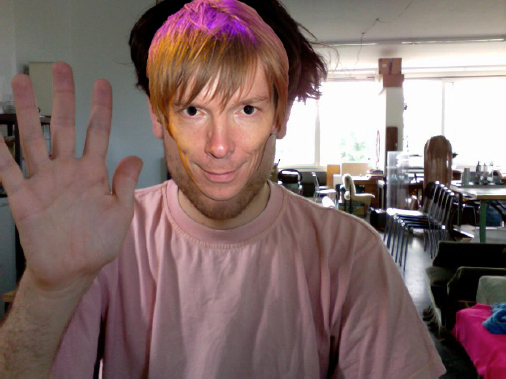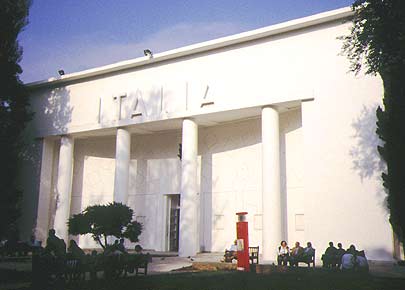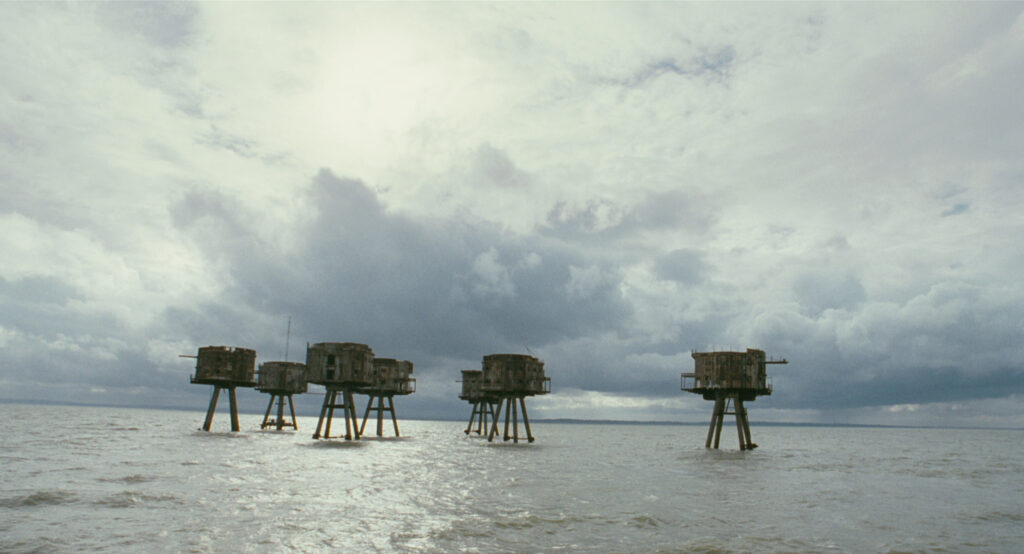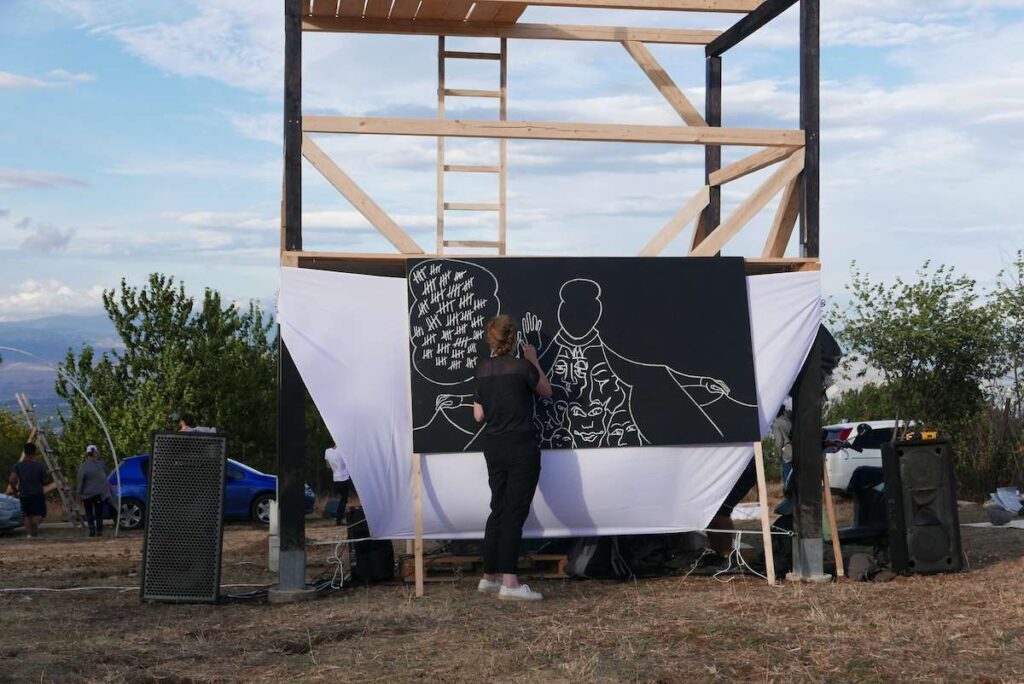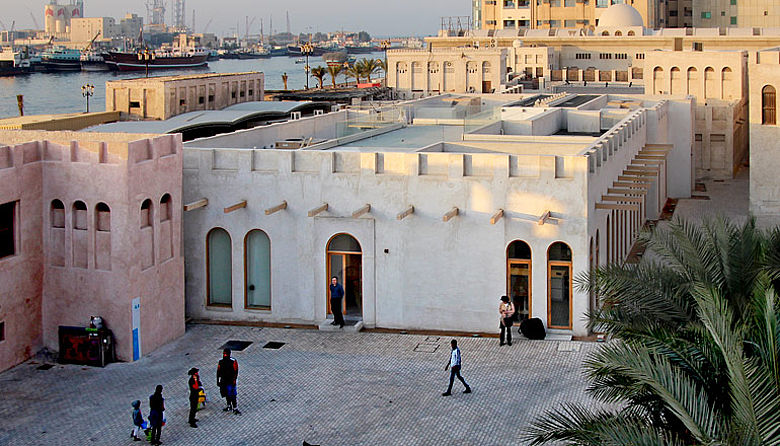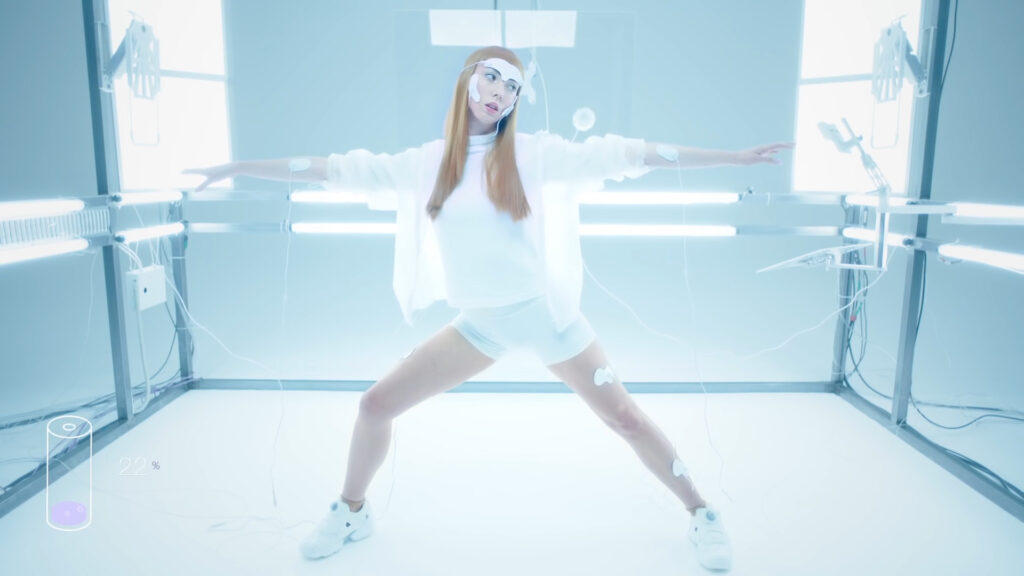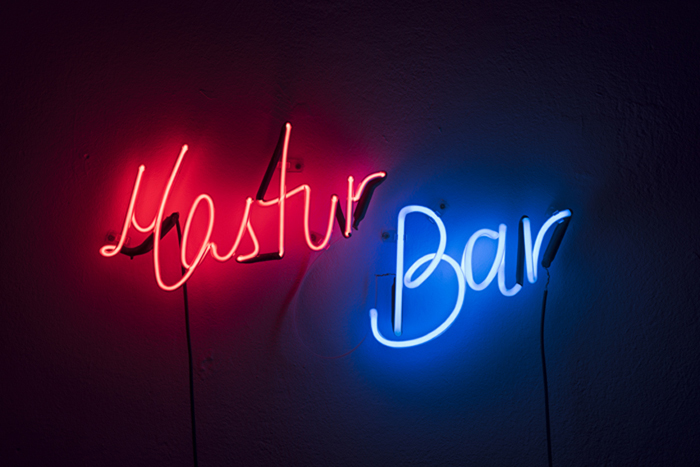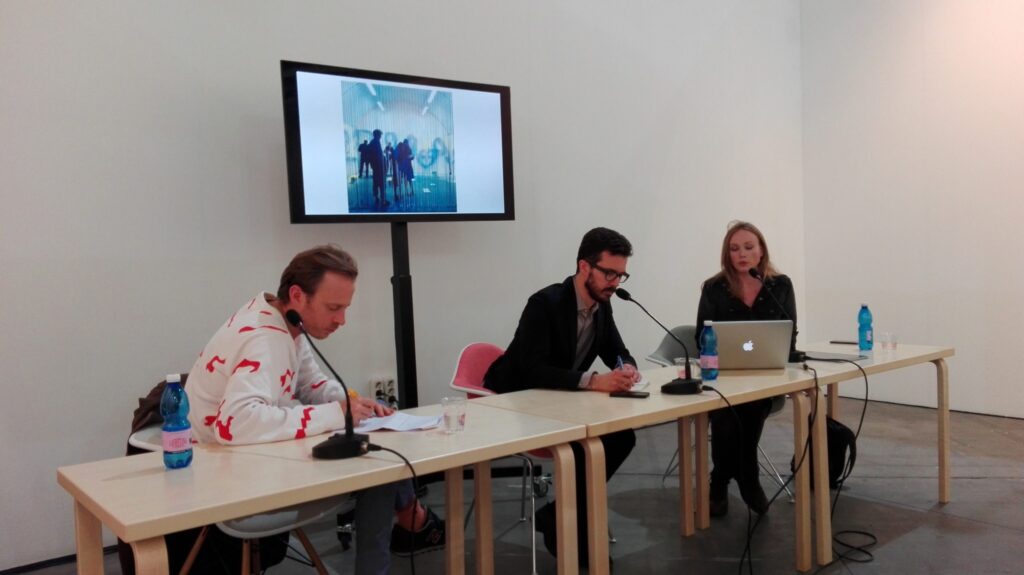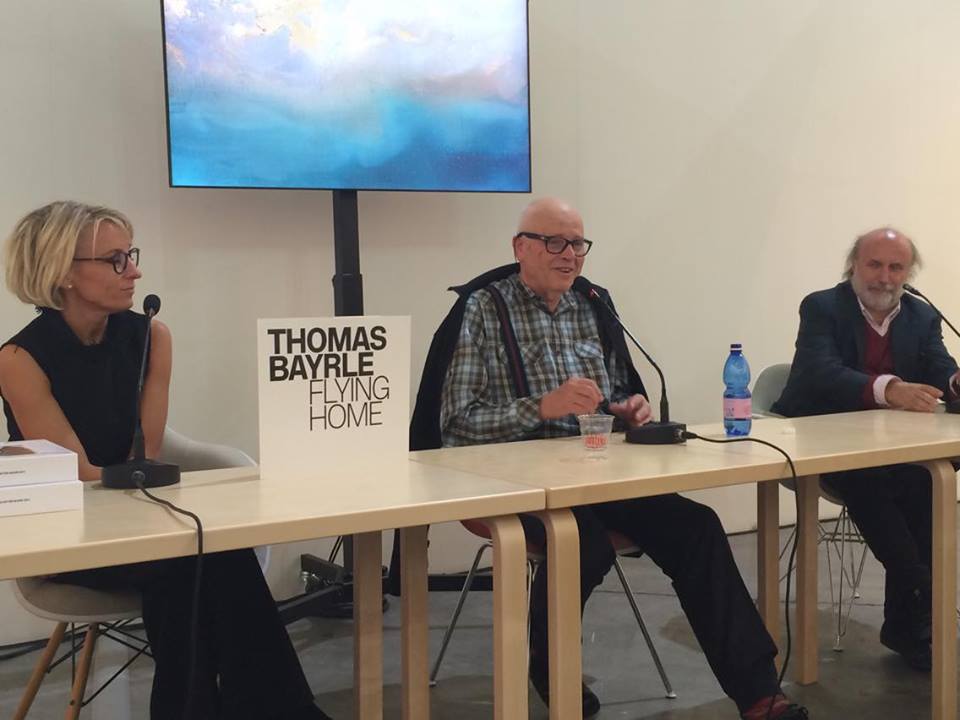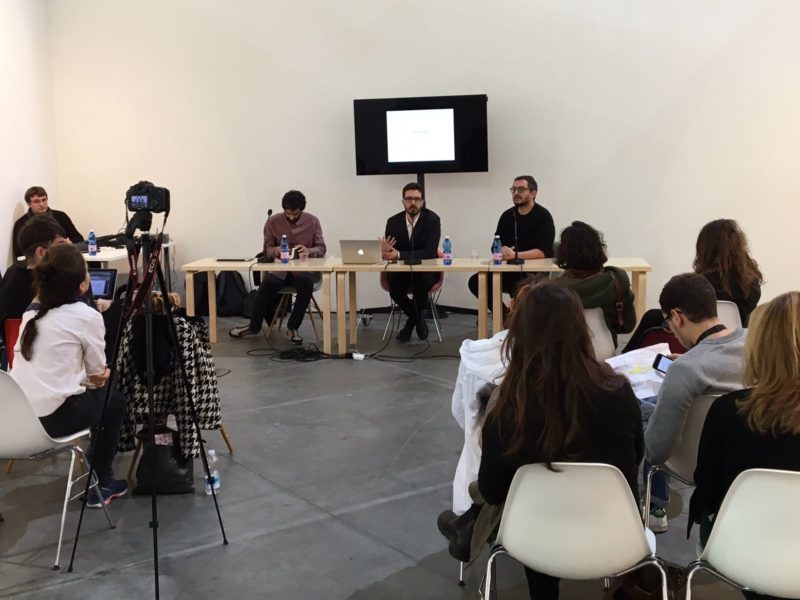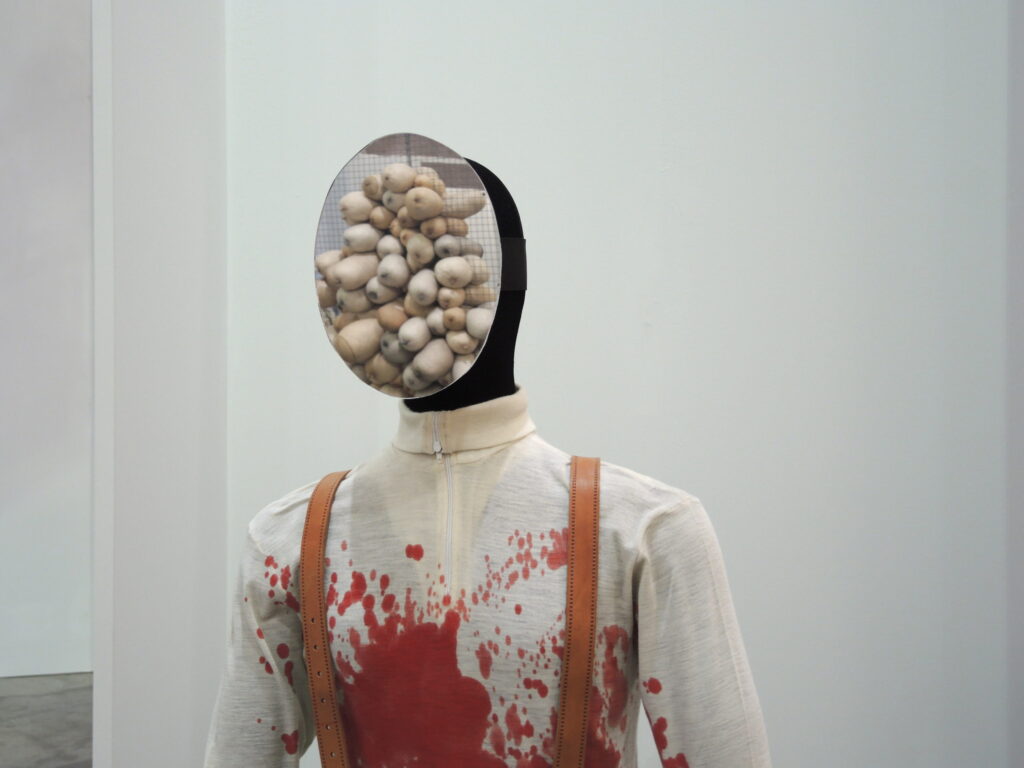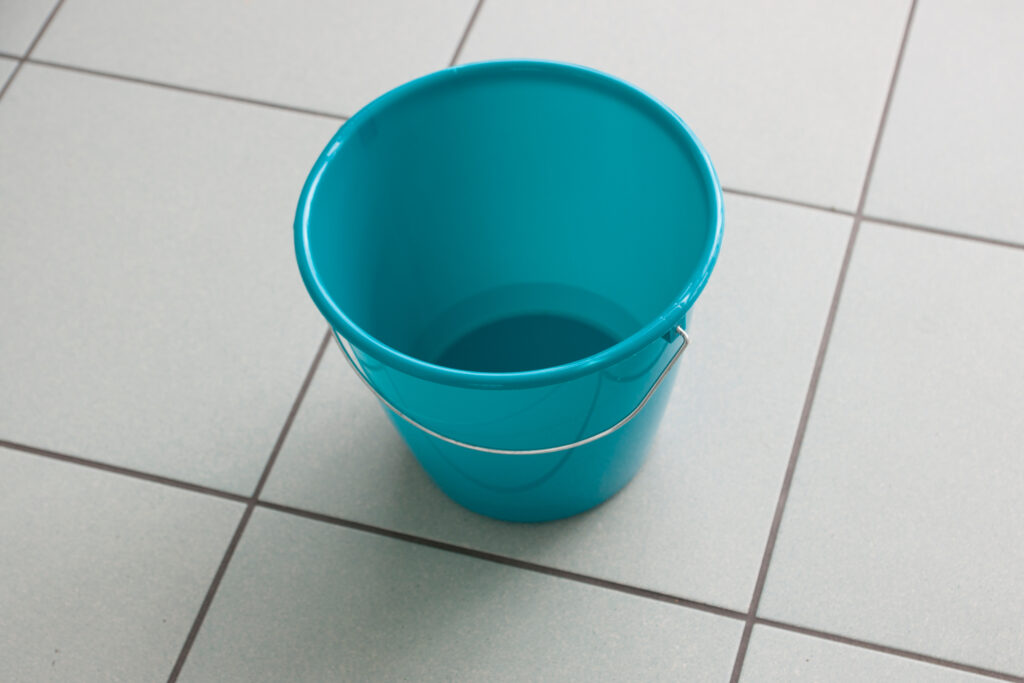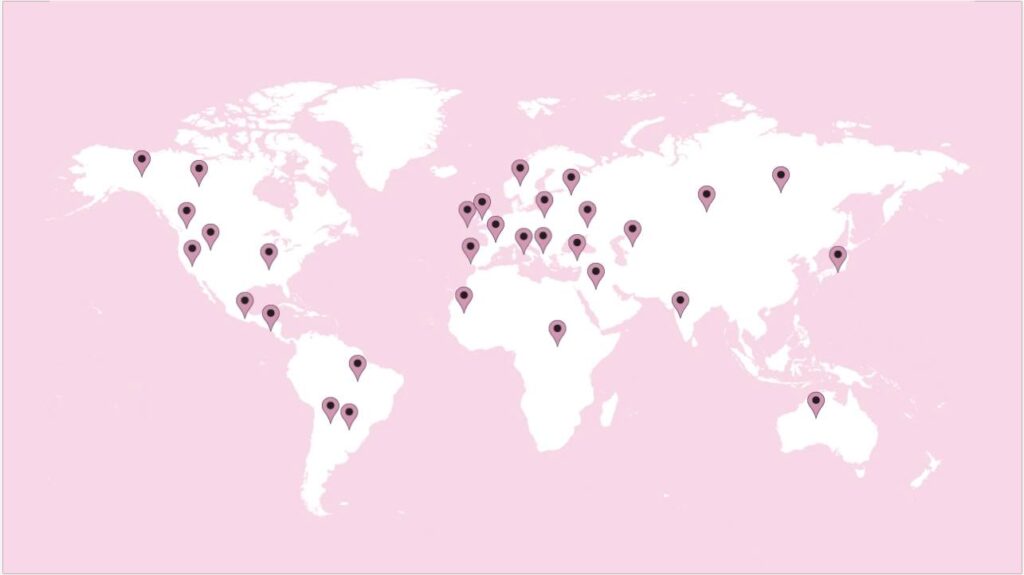 Martina Raponi – Malieveld – Den Haag – Solo demonstration – May 9th 2016 – View of the field and demonstrator.
Martina Raponi – Malieveld – Den Haag – Solo demonstration – May 9th 2016 – View of the field and demonstrator.
This interview was born a few months ago, in Venice when, in occasion the presentation of her book Strategie del Rumore (Auditorium, 2015), I met Martina Raponi. Discussing her publication, some critical points, and especially new horizons for practices of noise and her latest researches, we recognised the common attention on soundscape issue. We decided to involve in our conversation the Italian artists Francesco Fonassi and Francesco Giannico. Albeit with completely different approaches, they revolve around this scene developing contents, views, forms and applying methodologies.
Since its first appearance, the Soundscape coined by R. Murray Schafer is marked by a temporal continuity that makes it extremely changeable and which all of us must feel co-authors, more or less voluntary and conscious. This notion has been paid to studies and wide applicability: the analysis of territories, social relations – as spaces of interaction, conflict and interference –, leading to second thoughts and perceptual ability to re-imagine (with “new ears “as would John Cage) relation and the localization of bodies in a space. Which is its potential? What are the current applications? The conversation tries to analyze these aspects and is enriched by an interest bibliography, reported in the notes, which helps us to position the three contributions in the dense constellation of material and documentation existing.
Francesco Fonassi: When we speak about Soundscape we have to consider the formulation of his theory and the field of research that has triggered from a socio-cultural conflict zone, especially regarding the illiteracy listening that emerges in the early ’70. The urgencies – who traced categories for – were ear cleaning, acoustics and especially speculation in Ecology of Music. After World War II all technological research and the use of phonic technical concern of territorial control and political subjugation of the individual through the imposition and writing were deafening quiet. And this awareness which gradually consolidated, at least in the sector studies (Volcler and Goodman are the most famous11) that we must take as a starting point to confront what it means operate in sound arts and to develop critical thinking2 2. In the same years, between 2008 and 2012, I developed a number of systems, gestures and prototypes that placed this issue in the center of my phenomenological research on noise limits, on the intensity and permeability of figures such as attack and defense related by pre-existing architectural or configured at the service of these phenomena.
Francesco Giannico: The potential for investigating the soundscape is very high if you take this practical aspect. What is become more aware than we listen if we translate it into a daily practice? It should even ask: what is the point of correspondence for who lives the Ecology of Sound as an important inspiration to listen the reality with ears ‘different’: we can consider it as a tool to address the new challenges of the future, such as green building and related discoveries on architectural acoustics. For me it is a way to achieve an awareness from the bottom, it can elevate us culturally (and spiritually) such as film or literature. I speak of broaden the scope of our perceptual capacities to make room for a kind of acoustic relativism. More simple: the soundscapes are collections of sounds extracted from a certain reference context: if the context changes, the soundscape also changes. The listening works fine on the identification of reference allowing us to listen to what is naturally closer and functional to our daily activities. After some workshop I conducted, I realized that the ability to learn more about the sound environment in which we live is not expected3 3. The risk is that we continue to talk about that only with insiders. The playful approach or para-artistic is my favourite, even with adults. After a “hunt for sounds” in a place, there is nothing better than a nice moment of collective performance to use that material in practice. Given these small but significant findings, I think that Schafes vision isn’t outdated. Probably, we must consider that in parallel to a slow but growing awareness relating to the soundscape has corrisponded a deterioration of sound sustainability (if we examine more populated areas). The truth is that it would take large-scale plans that no government wants to undertake and finance in times of economic crisis, so the only hope is to rely on raising awareness that knows how to bear fruit in the not too distant.
Francesco Fonassi: It’s difficult to distinguish the simple medium function survey on sound material and its perceptive mechanical. I prefer to speak of sonic field. The idea comes from the field of theoretical physics but also from biology and cognitive psychology (in the ’70s Nessier and Gibson revise ecological and ‘economic sense’) and to make a precise methodical experimental which operates within specific areas (geographical, morphological or mental) with its own laws, forces and energies. When we record and store a soundscape we speak of field recording. That field is always polluted by our actions, even if we are listening without interfering voluntarily. It ‘s always falsified by our breath, our selective focus. We interfere with it, and with other bodies to listen (listen here is intended not only as hearing but, more generally, how to feel), and then assimilate it and together we modify our laws4 4. Despite I’m interested on gestures, discs and reaction processes and rebellion in these stillness states 5(5), they are actually fake and the psychophysical limit induced which increasingly are becoming the think of a path in which, through my work, i try to ‘impose’ my vision holistic and synchronic of my era. Never complete, nor certain, but governed by strict rules imposed in formalizing and presenting/suffering our time.
Martina Raponi: noise as a philosophical and metaphorical device doesn’t equal noise as a performative and music practice. It is an issue that came up when I started re-reading and re-thinking Strategie del Rumore after its publication. In the book, the description of practices and experiences in the underground realm, as well as in the artistic field, doesn’t exactly align to the last chapter, which is, after all, a first attempt of mine in speculating theoretically about the topic. It is astonishing to realize that there are many definitions of noise, and we could say that each discipline today has one definition for it; each of these identifies articulates and uses noise in its specific context, in its specific way. This means that we find, at the root, a problem of language, and of definition.
Trying to widen the scope of what I’m trying to say, and trying also to apply the idea of noise to different contexts of interest, it goes without saying that it is needed to take a distance from a strictly musical or performative realm, touching many other experiences which have nothing to do with art or music. These are the ones that I’m interested in at the moment. My exercises, now, are about identifying elements of interruption in the continuum of connections which form the fabrics which we define as social, urban, and so on, through interlacing. These fabrics are supported by an idea of soundscape which could be extended and which I connect to the depiction done by Steve Goodman in Sonic Warfare; it is not a case that the idea of affection is in the subtitle of the book6. The word noise in the context of a book like Sonic Warfare becomes problematic, and it almost loses its meaning, being incorporated in a concept which can be considered somehow more ‘prophetic’: the ‘unsound’. My intention is to follow the lines of problematization offered by this in order to reach something different, possibly something that could be defined as “unsound”. The conditions of listening, implicating either noise and the notion of soundscape, are also taken into consideration on a historical and cultural level by Hillel Schwartz in Making Noise. From Babel to the Big Bang (Zone Books). This mastodon of the literature about sound contains many references which show how the notion of noise, when examined while considering specific modes of listening, changes according to complex equations, in which the historical progression, technology advancements, geographical contexts, and cultural elements play a fundamental role. This makes it difficult to define noise in a universal way, but it helps in contextualizing it and historicize it according to the study cases.
Francesca Vason: It’s clear, Martina, that your vision leads to issues of body perception, an experience that goes beyond the purely listening and hearing-related sensations. The body is the nodal aspect also in your book, Strategie del Rumore: especially since the 60s, it highlights the growing awareness of awareness and exploration of the physicality, then transported even in music.
Martina Raponi: the environment influences us and our actions, constantly. In extreme cases the vibrational texture of a specific environment can be perceived by the body, followed by introjection and conscious elaboration. We can talk about this when referring to explosions, thunders, earthquakes, or all those vibrational stimuli we are constantly subjected to, from the simple action of just sitting on a train to a bike ride77. I am thinking at the moment about the installation by Raviv Ganchrow at the 2015 edition of Sonic Acts, titled Long Wave Synthesis: this work examines the infrasound waves, which operate on a geological scale. Infrasound waves have been “collected” and channeled by devices built by the artist, and made perceptible by the bodies of the observers when happening to stand in front of them. I’m not a scientist, nor an engineer, so I cannot answer your question in a scientific way, but I am convinced of the effectiveness, on a molecular scale, of that kind of infrasound, and that even that can alter the perception of a specific environment; the latter ceases to be then plainly a ‘soundscape’, invading territories which are more haptic, or psychological, or even geological, as the work by Ganchrow exemplifies. This kind of waves are able of revealing themselves also as “hum”, for example, a phenomenon which exceeds the mere geographical localization, inserting itself in a network of energetic interactions on a global scale, when not due to human interventions such as abandoned factories, digging working sites, mines, etc. Noise, as invasion, as sound impact, proposes an augmented mode of bewilderment, which eventually resolves itself in what I like to define as identification, but which is not disconnected from something very similar to an interrogation.
In our contemporaneity we need to research another way of being part of the existential circuits which exist in a mutated technological landscape, less hardware and more immaterial. The role of the body is to regain all the possible hardware which surrounds us, accepting even to abandon our condition of mere humans, to push the potential of technology, together with our sensorial and sensual capacities, to its extreme, however absurd or paradoxical this might sound. The materiality of the body has to find a way of reaffirming itself in order to gain back a space which has been lost, a space of interaction, of negotiation, and of action, and then transfer it to a virtual world which cannot be ignored. How to re-elaborate the fragments of experiences and information which act upon us in an affective way, privileging an intensification of proprioceptive activities, and understand how to reconvert them into experiences capable of generating critical mass? It is a question I’m asking myself lately, and I’m working on answering it, thinking mainly about all those experiences which didn’t have a political outcome, like We are the 99%, but which managed to reactivate multitudes of bodies, and, to quote Bifo, to re-eroticize the masses. This notion of eroticization is fundamental, and it revolves around an almost ‘primitive’ notion of sensuality, which is not alien to the noise practices I talk about in Strategie, and which is connected to what I said till now. The crucial node here is understanding how to lead these experiences to a next, perhaps higher, level, making use of the interstitial values hidden among the political claims.
Francesca Vason: The notion of soundscape, as you’ve told me, it was your starting point for a science fiction story and for the essay you are still writing.
Martina Raponi: In both the texts you mention the sound space is a dystopic space, in which the only way towards a possible democratization of public space is the construction of an awareness of the proprioceptive potentialities of the bodies which inhabit it. This also raises a fundamental problem: if we admit that noise is a problematic notion, especially in the light of its possible de-functionalization in a context like the one described by Goodman, or if considered in the analysis of a process of normalization, then what does it mean to make noise?
My idea of noise as a device to analyze processes of normalization doesn’t imply noise as an active agent in these processes. It is more a residual element, an excess, something that a system is willing to reabsorb in order to stay compact, to be analyzed in its entirety, to be functional, and functioning. In this case then, considering what I define processes of normalization (from the institutionalization of underground practices till the absorption of contestation in the normative framing of law and police8, till the supposed integration of bodies considered as ‘abnormal’ through specific actions, be them legal or medical) noise is what remains out of the systemic grid, or just the subversive potential retained by what has eventually been incorporated by the system. The cases could be endless, and my ambition, on a sci-fi and on a theoretical level, is to understand how to elaborate a kind of equation which allows to identify, analyze, and support the potential noises, while keeping in mind the specificities of the contexts in which they appear and operate. The privileged case study for me at the moment, in both the essayistic and in the narrative work, is deafness as a noise mode of existence on a cultural, linguistic, and social level, despite the silence which seems to be inevitably inherent in it9. If deafness is the closest condition to my idea of noise, in spite of the fact that it “doesn’t make noise” apparently, then what does it mean, again, to make noise? It is around this dilemma that my second and last year at Sandberg, in 2015, developed. I chose to take a clear position: acknowledging the division between noise and noisiness, between «noise in a commodified world» and «noisy commodity». From there, I tried to investigate objects and experiences which concern more the first element, than the second. I therefore tried to understand what does it imply to make noise according to this separation.
It is a question I haven’t answered yet, completely. I tried to do that especially during the Sandberg’s graduation show, a moment in which I invited Mattin, an artist who deals mainly with noise. With him, I carried on an analysis of some of the material I produced, resulting into the draft of a manifesto in which we refer to the ‘normalized’ noise with the phrase «Sugar-Candy Noise», and we position ourselves towards it with ‘in-tension’. This kind of noise is present in most of the contexts which deal with cultural production10.
Francesca Vason: The speed with which a sound is generated and it produces an effect in the world is the same with which it disappears. And it can compete as an experience involved in the formation of a subjective and collective memory. Just like the visual experiences. In 2013 was born the Italian Archive Soundscapes (AIPS), a reality founded a few years earlier as a collective and that over time has developed several projects, including the “mission” to create a mapping and setting up a real archive. Which are the goals and the storage methods you adopted with AIPS?
Francesco Giannico: AIPS is an archive of experiences that include the studio, manipulation, reinterpretation of listening environments. In this context, AIPS seems better as a modular vision: in each module is a project with its own characteristics and independent. Of course, some ‘modules’ recur, such as the projects on online sound mappings, one of them has restored lymph to the Schafer ‘s theses. Thanks to Google Maps, Open Street Maps and similar technologies it was possible to represent concretely the union between a landscape and its sounds: what could be more intuitive click a placeholder of a map and start the related audio? Clearly, in this case there are various levels of complexity related to the possibilities of realization of these maps that can be scientific, collaborative, interactive. We try to build a window on the Electroacoustic Music’s world, that uses the soundscape as a medium, as a raw material to be able to model for their own soundscape compositions, installations and so on.
Francesca Vason: Educating to the sound. Develop or rediscover a sensitive ear, also implies the possibility of risemantizzare a sound content, enrich it with the opportunity to generate new values, ideas, perspectives…
Francesco Giannico: Personally, it was natural the experimentation by the workshop formula to capture the sound knowledge. My own perception, during the workshops, has been changed when I watched the collective awareness mechanisms that arose. The new semantics have gone beyond expectations. I didn’t expect to re-establish the roles of the signifier sound but also the meaning and the listener. This model has a great effectiveness for its adaptability to any situation and for the high level of involvement: it’s based on a mix of theory, soundwalk and performance/installation group. The future prospects for projects developed in this way can be many and can have an impact on people and their area. Often this kind of project doesn’t exhaust his task in the workshop but become part of a extended process that gives continuity to an awareness campaign through increasingly specific initiatives. The next step (I’d like to accomplish in this direction) would be a festival or an event that focuses this kind of interoperability, joins more active cells of a specific territory on a common goal in the sound expression sign of that environment. Approaching to the soundscape as small ‘soviet’ able to organize individually and toghether the sound revolution that we need.
More on Magazine & Editions
Magazine , ESCAPISMI -Part II
Antirave: l’esperienza collettiva dei free-party in Italia
Intervista ai fondatori di §AME
Magazine , AUTOCOSCIENZA – Parte II
Coscientizzazione macchinica
Singolarità, iperstizioni e agency algoritmica.
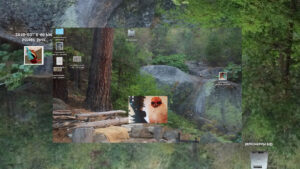
Editions
Estrogeni Open Source
Dalle biomolecole alla biopolitica… Il biopotere istituzionalizzato degli ormoni!
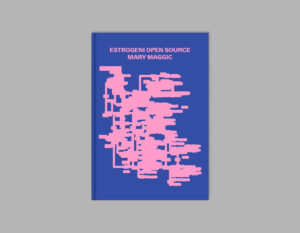
Editions
Embody. L’ineffabilità dell’esperienza incarnata
Il concetto di coscienza incarna per parlare di alterità e rivendicazione identitaria
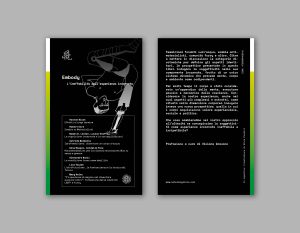
More on Digital Library & Projects
Digital Library
È pensato per fare schifo: l’estetica dell’“Internet Ugly”
Nick Douglas analizza il codice memetico di Internet tra viralità, appropriazionismo e tendenze revivalistiche.
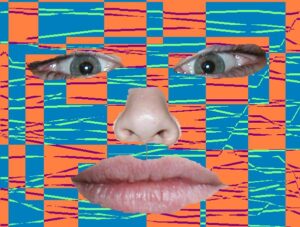
Digital Library
Il Numogramma Decimale
H.P. Lovercraft, Arthur Conan Doyle, millenarismo cibernetico, accelerazionismo, Deleuze & Guattari, stregoneria e tradizioni occultiste. Come sono riusciti i membri della Cybernetic Culture Research Unit a unire questi elementi nella formulazione di un «Labirinto decimale», simile alla qabbaláh, volto alla decodificazione di eventi del passato e accadimenti culturali che si auto-realizzano grazie a un fenomeno di “intensificazione temporale”?
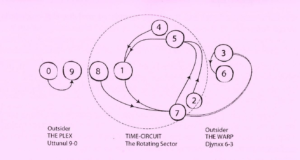
Projects
Da Supercontinent a Ipernatural: i confini di una cartografia meticcia
Rinnovando la collaborazione con Centrale Fies, quest’anno la redazione di KABUL magazine pubblica una bibliografia che ha caratterizzato le ricerche, i concept e l’impianto teorico delle ultime 3 edizioni del Festival (2017-2019).

Projects
Antropologia del mondo virtuale: Jon Rafman in conversazione con Diana Baldon
La registrazione della conversazione tra l’artista Jon Rafman e Diana Baldon, direttrice di Fondazione Modena Arti Visive, in occasione della personale realizzata da Fondazione Modena Arti Visive.
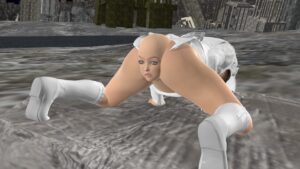
Iscriviti alla Newsletter
"Information is power. But like all power, there are those who want to keep it for themselves. But sharing isn’t immoral – it’s a moral imperative” (Aaron Swartz)
-
Francesca Vason è curatrice e storica dell'arte. Lavora con M+B Studio a Venezia come curatrice e project coordinator di progetti espositivi internazionali. Collabora con TBA21-Academy e Ocean Space, La Biennale di Venezia, Danish Art Foundation, OCA - Office for Contemporary Art Norway, Singapore Design Council, oltre a sviluppare progetti indipendenti. Prende parte a Campo - programma per curatori italiani della Fondazione Sandretto Re Rebaudengo e, dopo aver scritto per magazine come Juliet e InsideArt, è tra i fondatori di KABUL magazine, dove attualmente opera come autrice e referente per le sezioni Project ed Editions.
KABUL è una rivista di arti e culture contemporanee (KABUL magazine), una casa editrice indipendente (KABUL editions), un archivio digitale gratuito di traduzioni (KABUL digital library), un’associazione culturale no profit (KABUL projects). KABUL opera dal 2016 per la promozione della cultura contemporanea in Italia. Insieme a critici, docenti universitari e operatori del settore, si occupa di divulgare argomenti e ricerche centrali nell’attuale dibattito artistico e culturale internazionale.
